15 – 27 February 2023
We are down under again. This is Bonnie’s fourth trip, and Robert’s second. No, we are not low in spirit. Just the opposite. We are in New Zealand. We were last here in 2004 when we came to sightsee, to fish, and to visit Bonnie’s family from her year as a high school exchange student. On this nine-week trip there will be more fishing—twenty-thee days of guided trout fishing are scheduled. It is late summer here. Kids have just gone back to school, but the flood of foreign tourists, especially Americans, Germans, Koreans, Brits, and Australians, is pushing vacation season into autumn.
Blog posts for this trip will lack Roman, Greek, and Etruscan artifacts, as well as Roberts’s numerous cousins and plates of Italian food. But the incredible New Zealand scenery and people should more than suffice. We hope to have plenty of photos of fish too!
New Zealand
When we were here in 2004, the population was four million—three mil on the North Island and one mil on the South Island. The number of sheep was 25-35 million. Today, the population exceeds five million. We don’t know exactly how the sheep are faring, but we’ve heard they are declining in favor of cows because of a strong international market for all kinds of dairy products. The modest New Zealand population is stretched thinly over a country 1,000 miles long—the distance from San Diego to Seattle. Few cars on the road. Minimal Wi-Fi. But lots of can-do attitude.
New Zealand was the last of the large islands in the South Pacific to be settled. Polynesians arrived about 1280 and Māori culture developed. But when the British arrived, Māori culture was threatened by colonization. We are impressed by the resurgence of Māori language since our last trip: in signage, in place names, on television, on New Zealand Air flights, and in primary schools. The majority of the population today claims European descent, especially from England and Scotland, followed by Māori at seventeen percent, and a similar proportion of Asians. The government is considering further loosening requirements for immigration because of the shortage of workers.
New Zealand is part of the British Commonwealth, and quite a young nation. The country is liberal and promotes civil liberties. It was the first country to introduce a minimum wage, the first to grant votes to women, and it ranks fourth in the strength of democratic institutions. A whopping eighty-two percent of voters turned out for recent elections.
The topography of the North Island has been shaped by volcanoes, with lakes formed in calderas. The famous Lake Taupo lies in the caldera of one the world’s most active supervolcanos. Although not as mountainous as the South Island, the North has a rolling topography. On the South Island the juncture of several tectonic plates form the Southern Alps, topped by stunning Mount Cook at over 12,000 feet. Both islands offer spectacular scenery, which you have seen in Lord of the Rings movies.
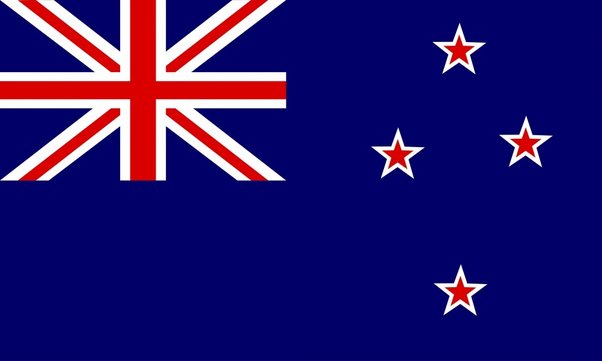
Auckland
This is one chill place. Auckland is the largest city in New Zealand, with more than 1.4 million people, and it is very multicultural. More than forty percent of the population is foreign born. It is the home of the largest ethnic Polynesian population in the world as well as a substantial Asian population. Thai, Indian, Chinese, and Japanese food are ubiquitous. The city is also home to the University of Auckland, New Zealand’s largest university with 40,000 students. The city is modern but lacks a cohesive center or clear sense of character. A cruise ship dock leads directly onto the main street with high-end retail, like Louis Vuitton, Rolex, and Gucci. But within two blocks that shifts abruptly into a honky-tonk mix of stores reminiscent of an older Market Street in San Francisco. These streets, despite their Fisherman’s Wharf vibe, are very clean and of good quality. No barkers luring you into shops or restaurants.
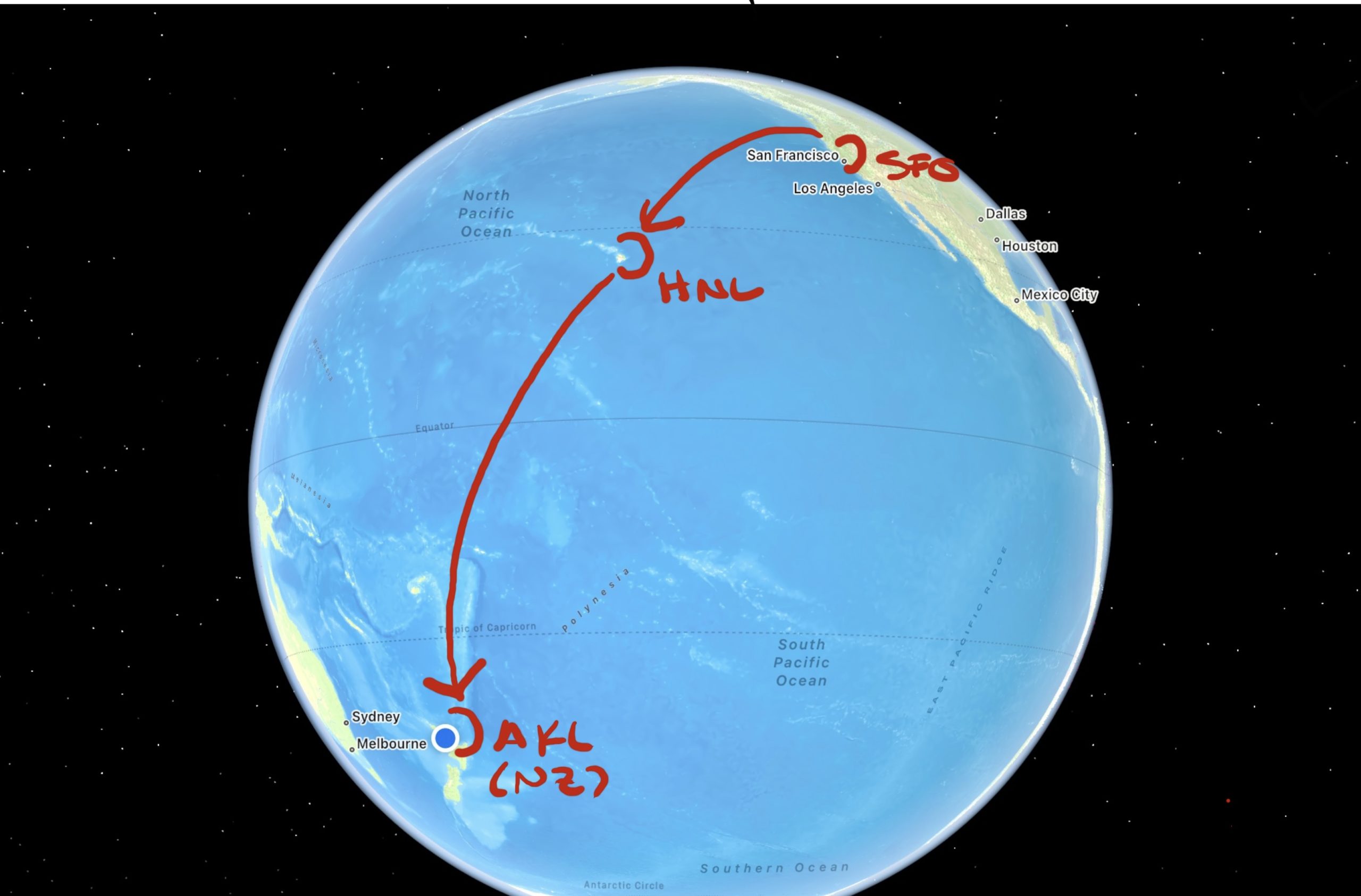
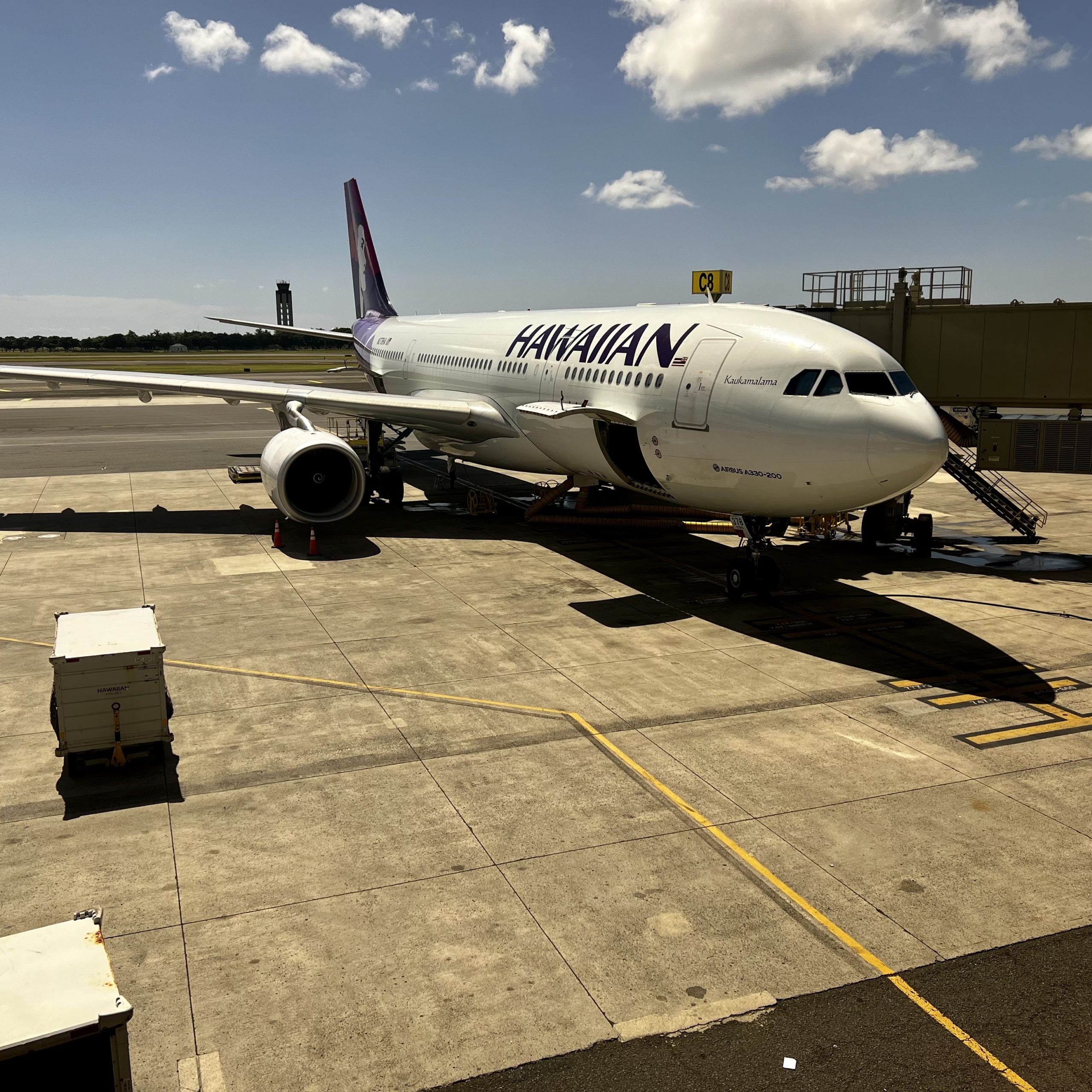
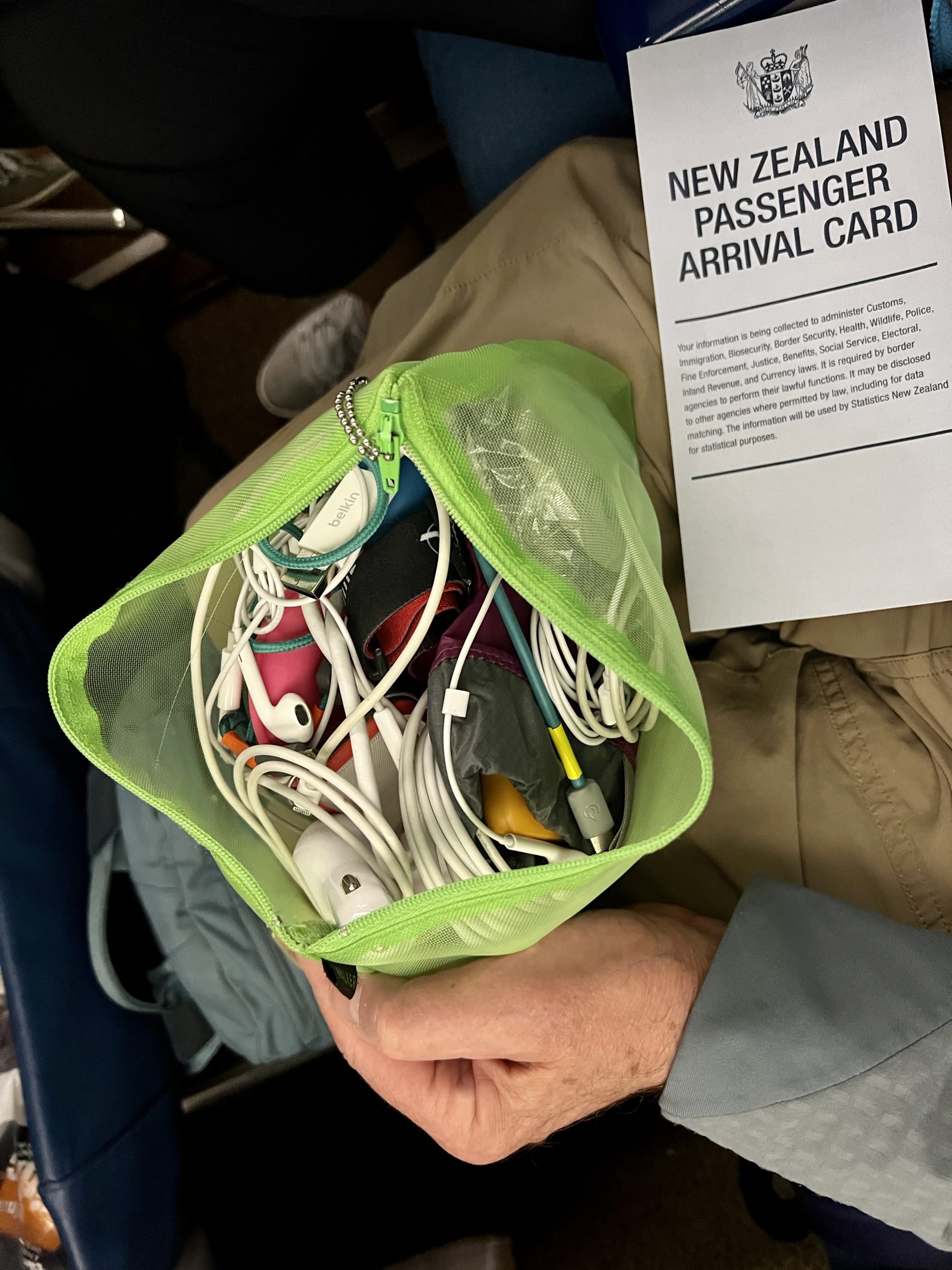
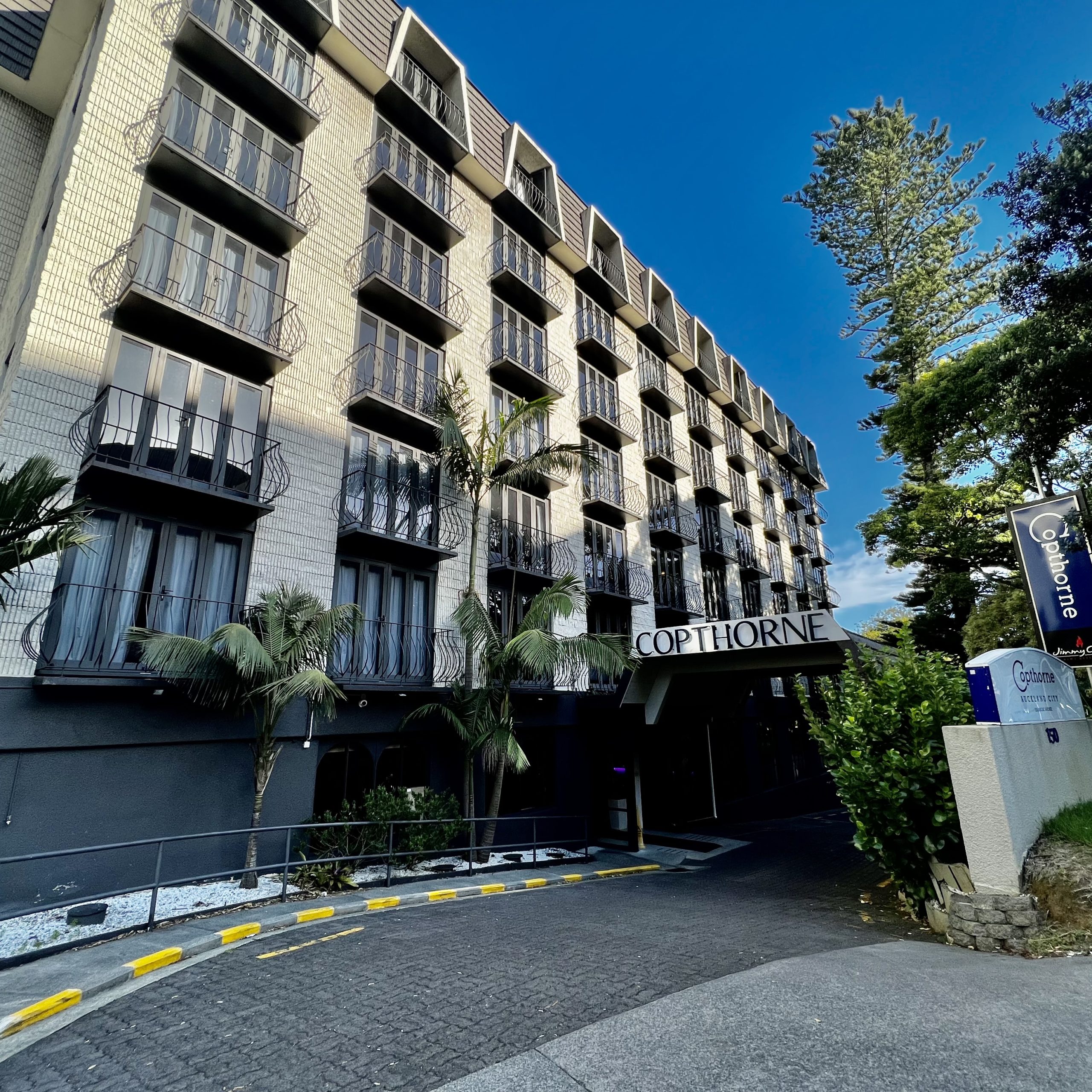
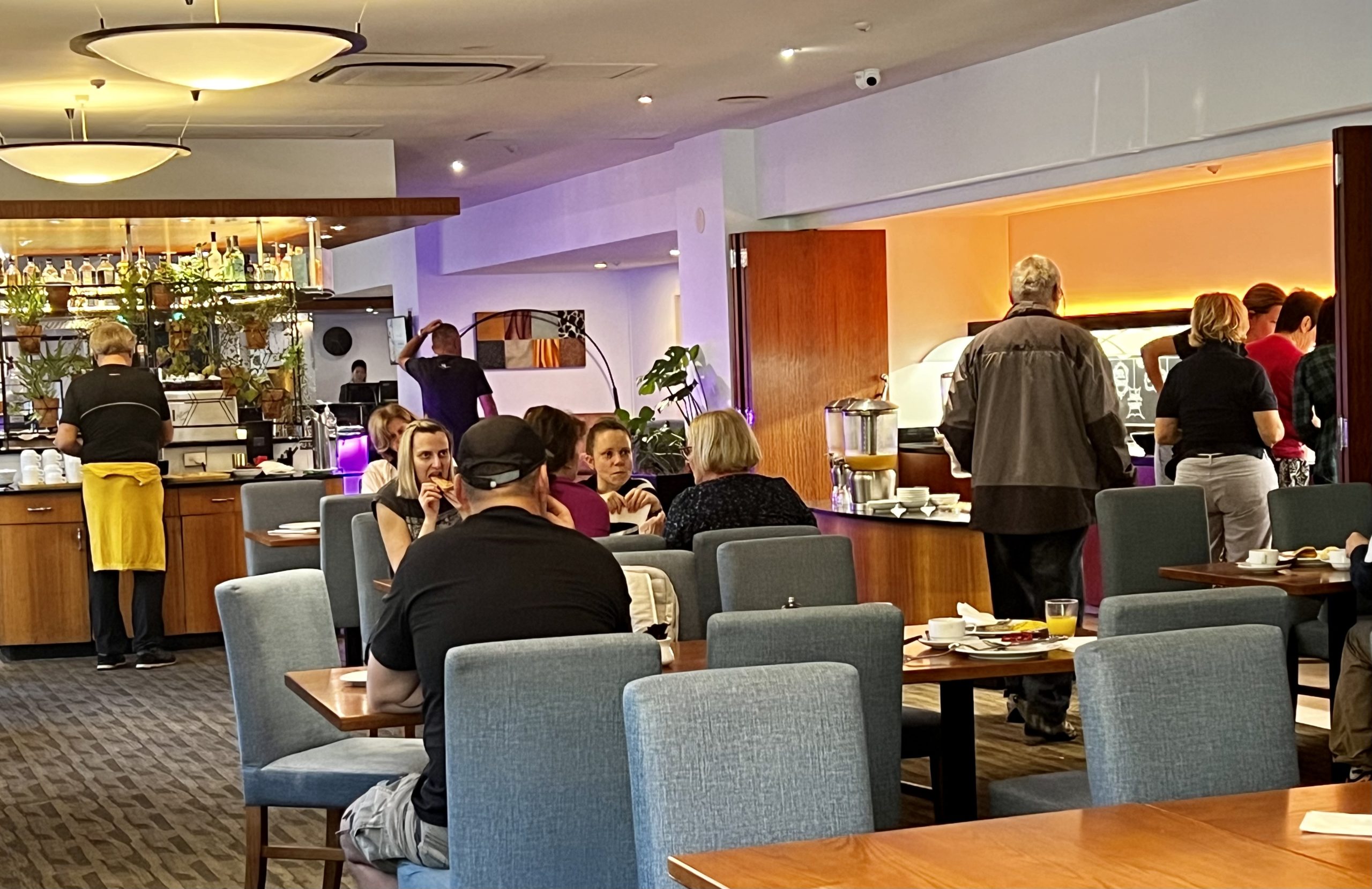
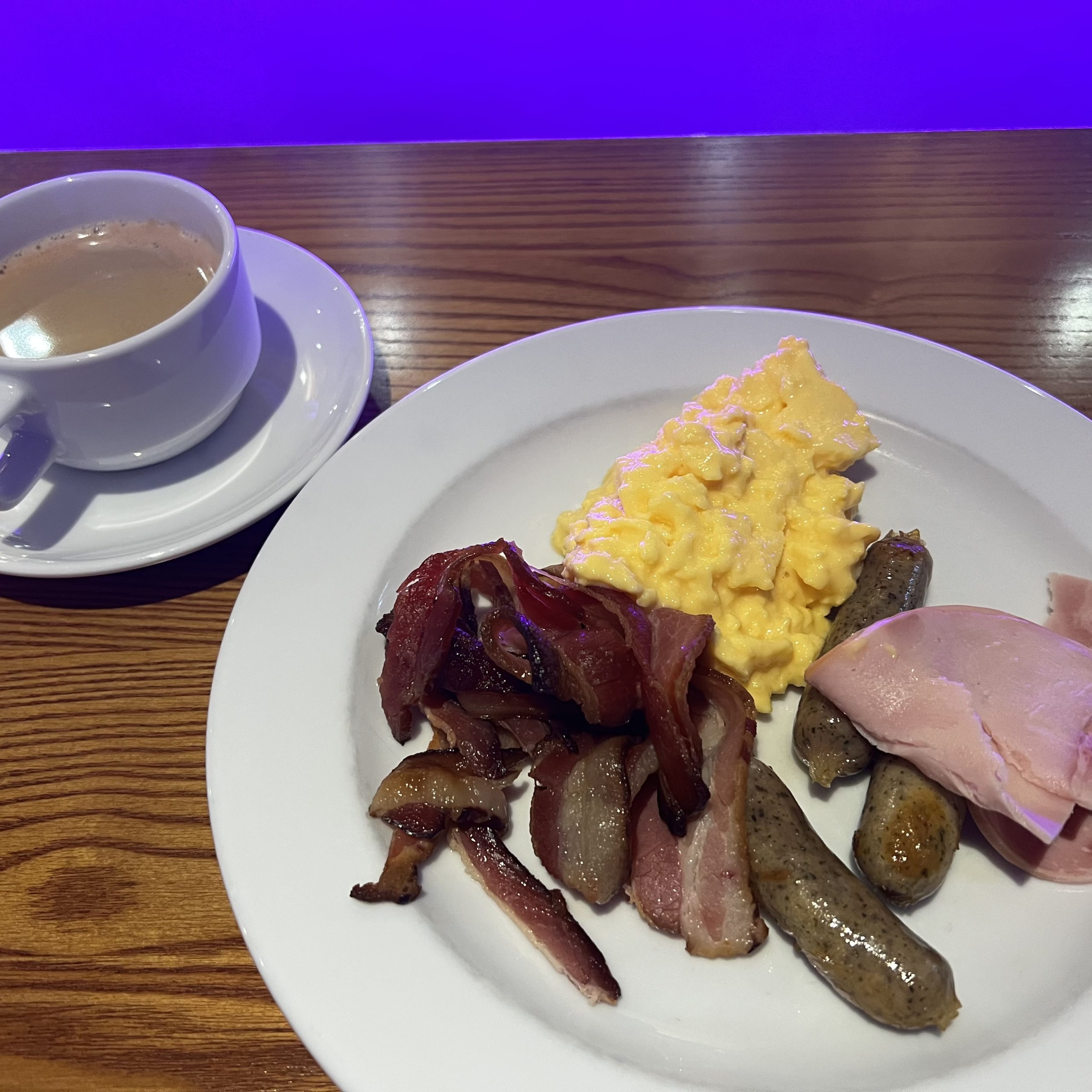
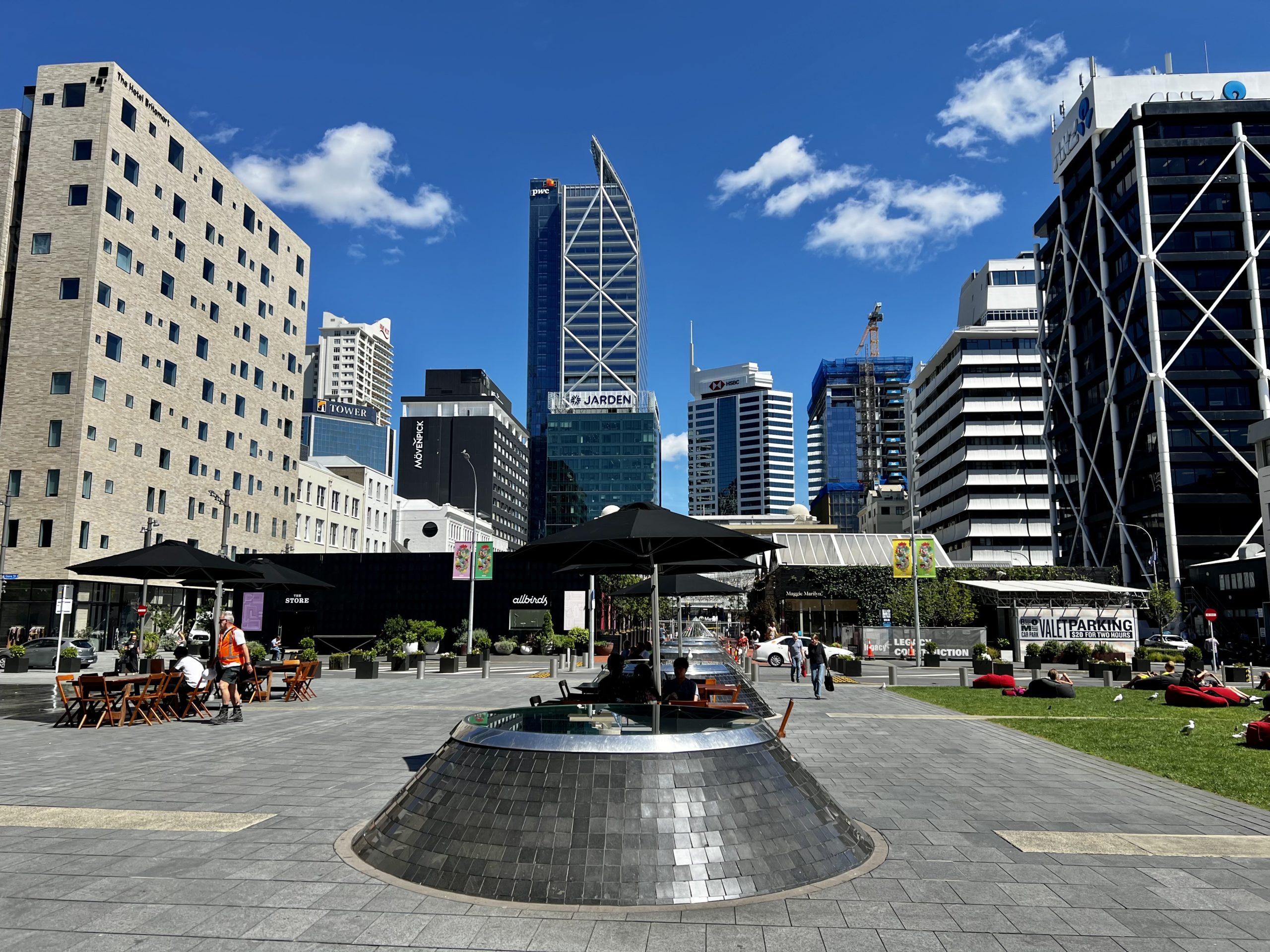
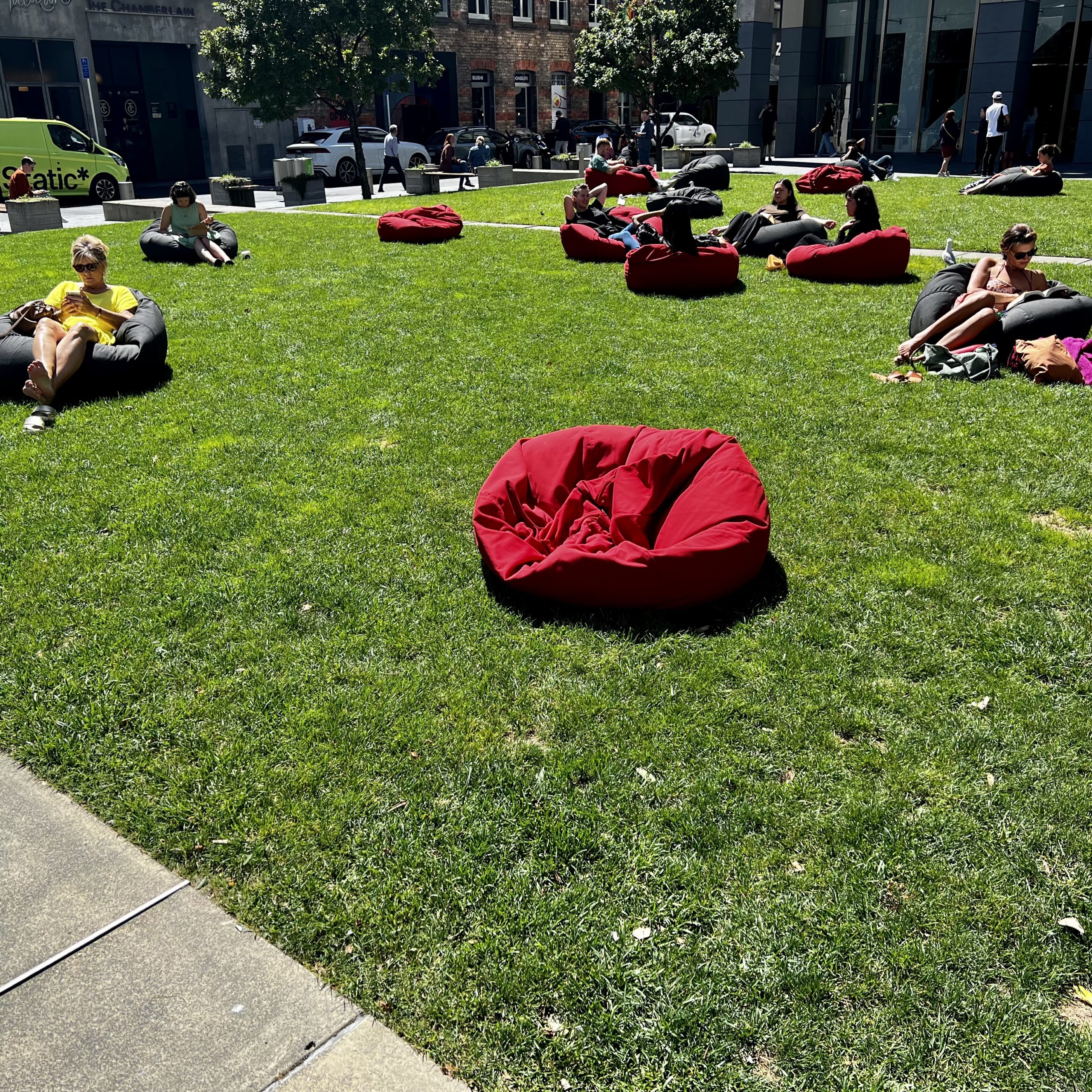
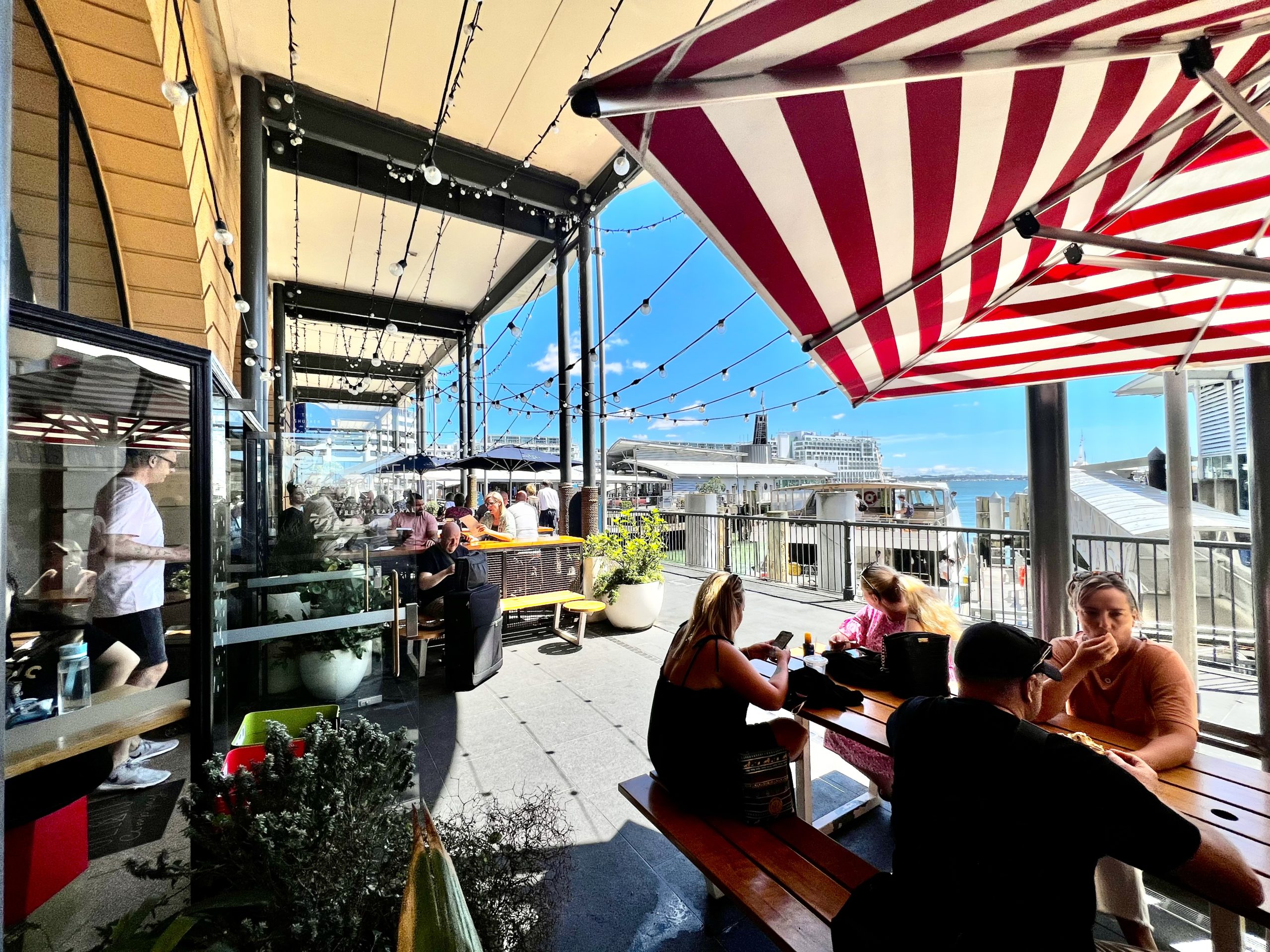
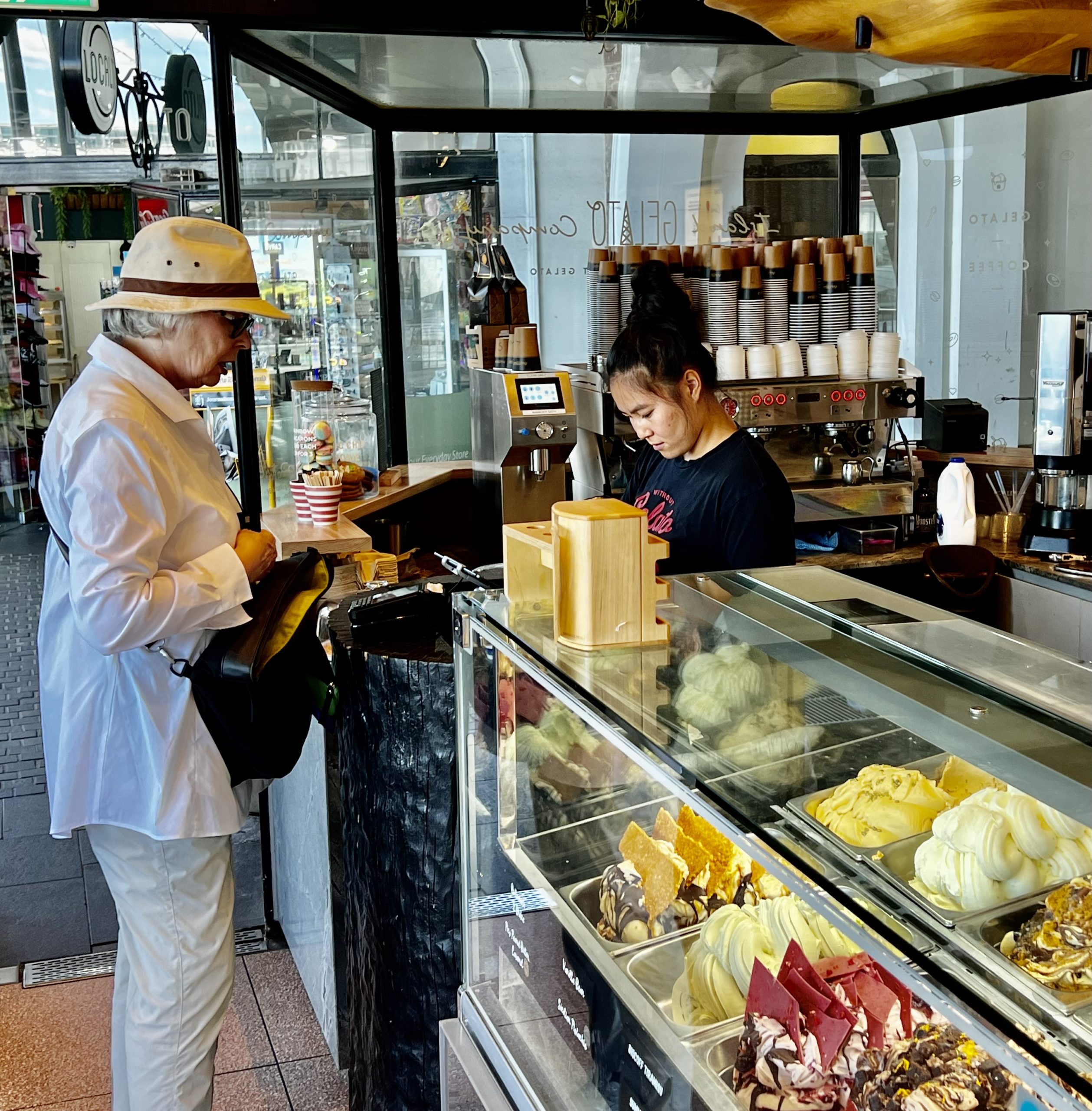
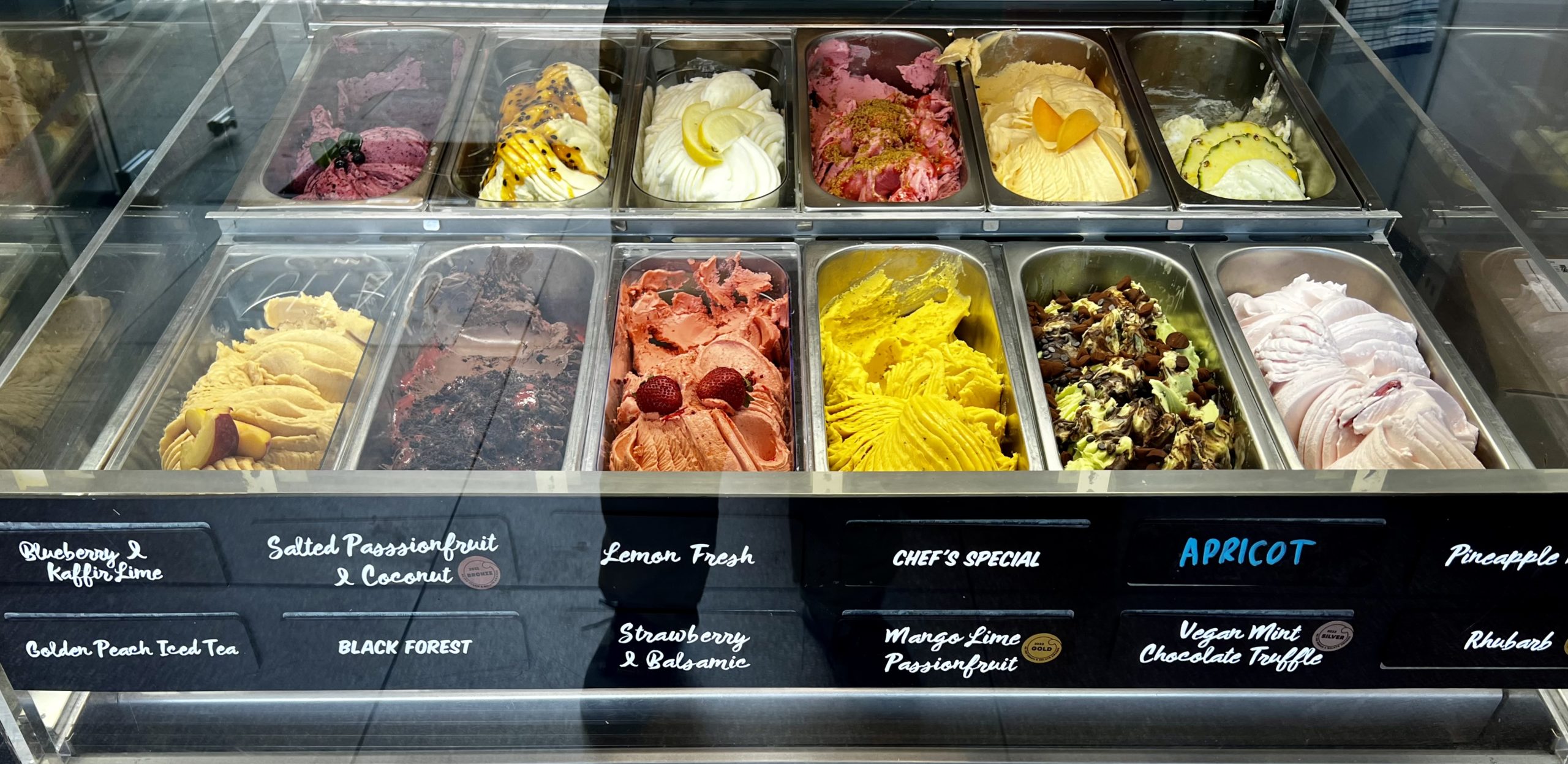
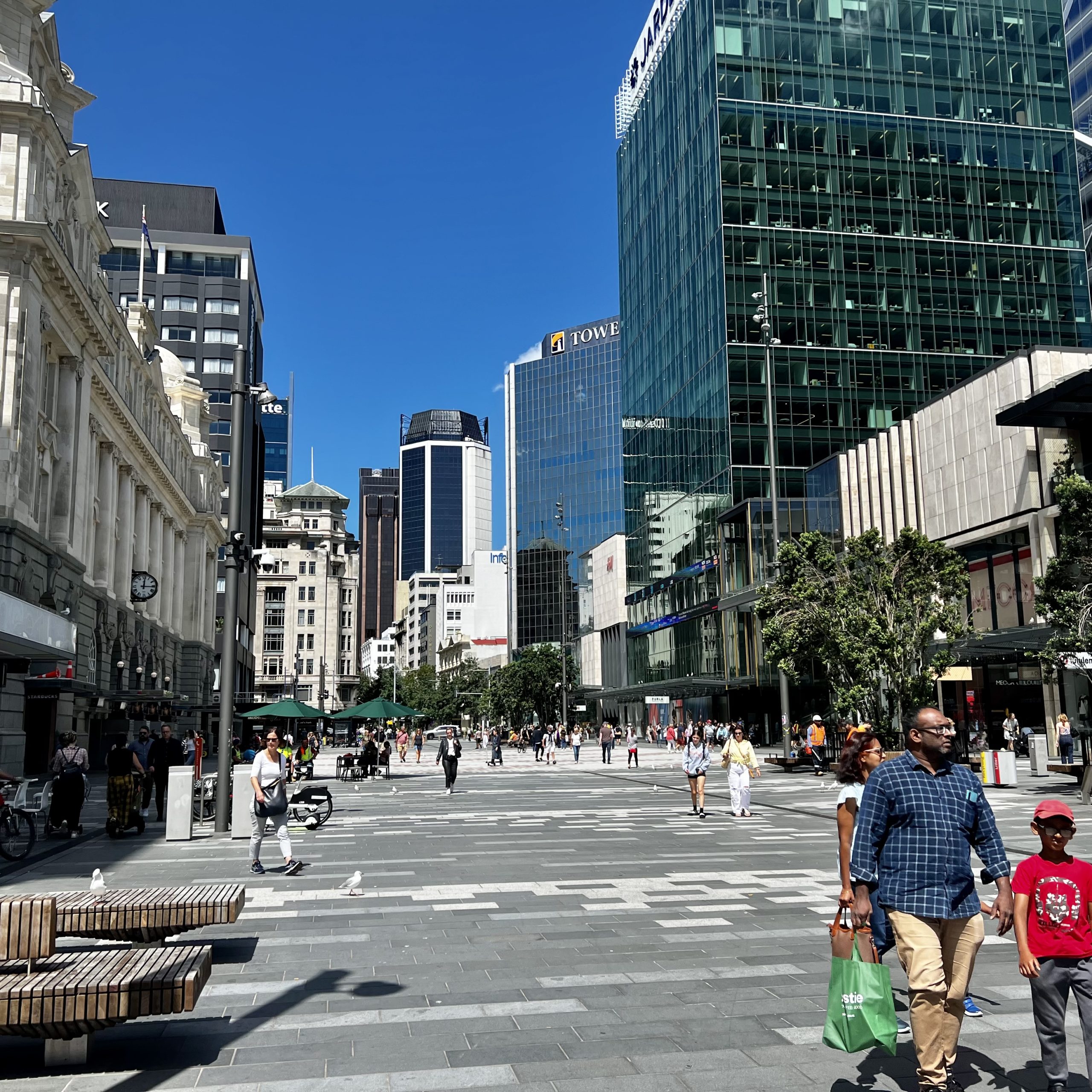
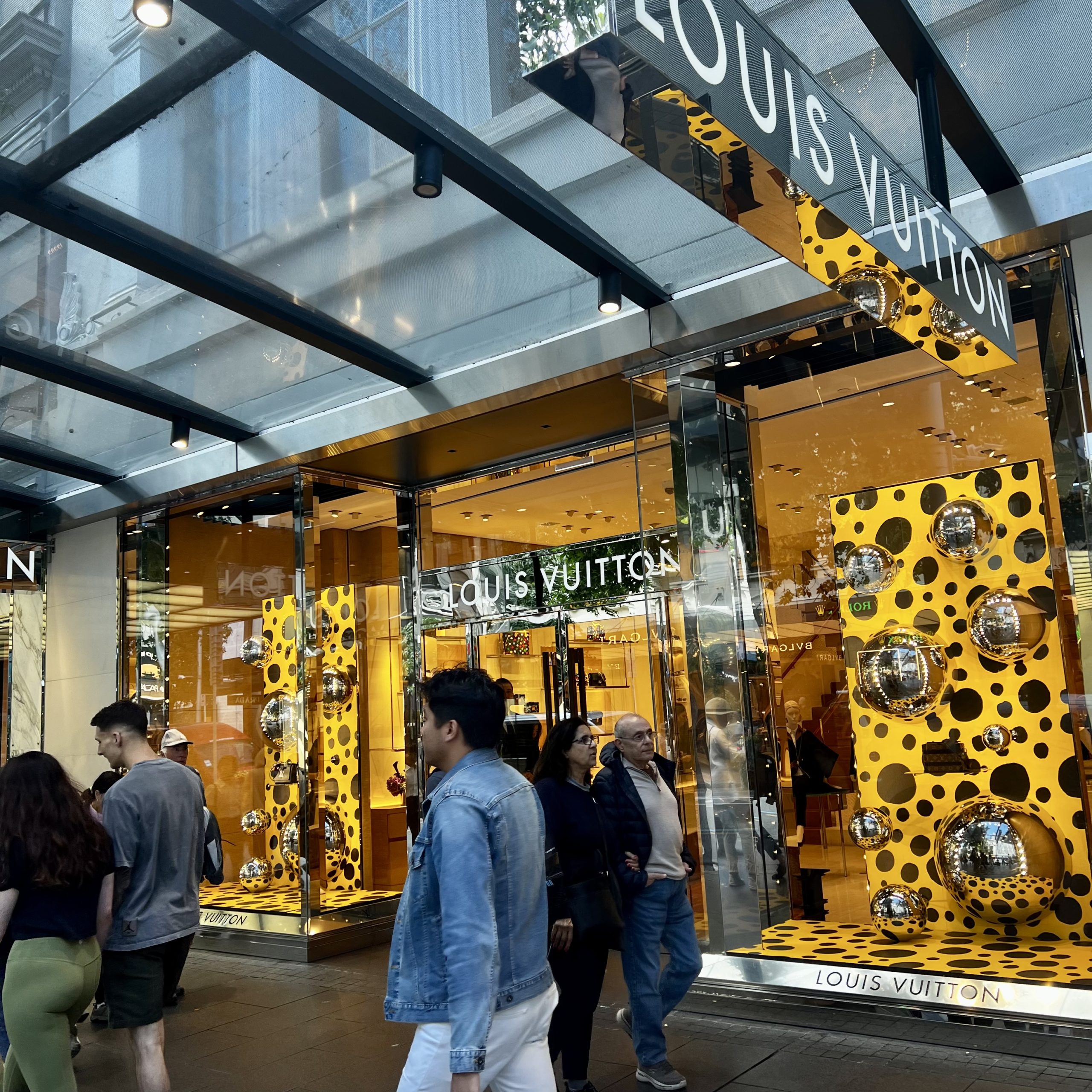
Eats!
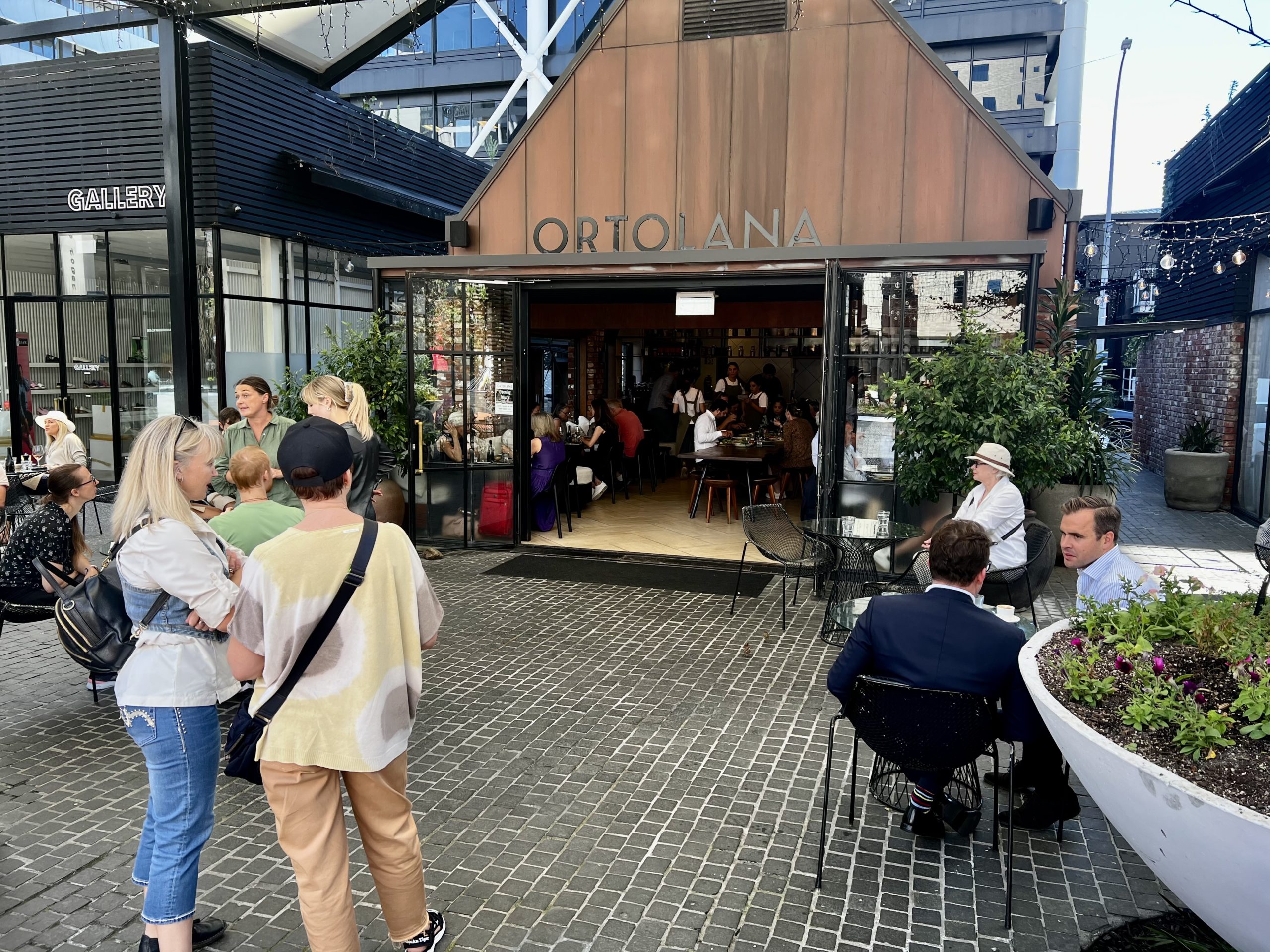
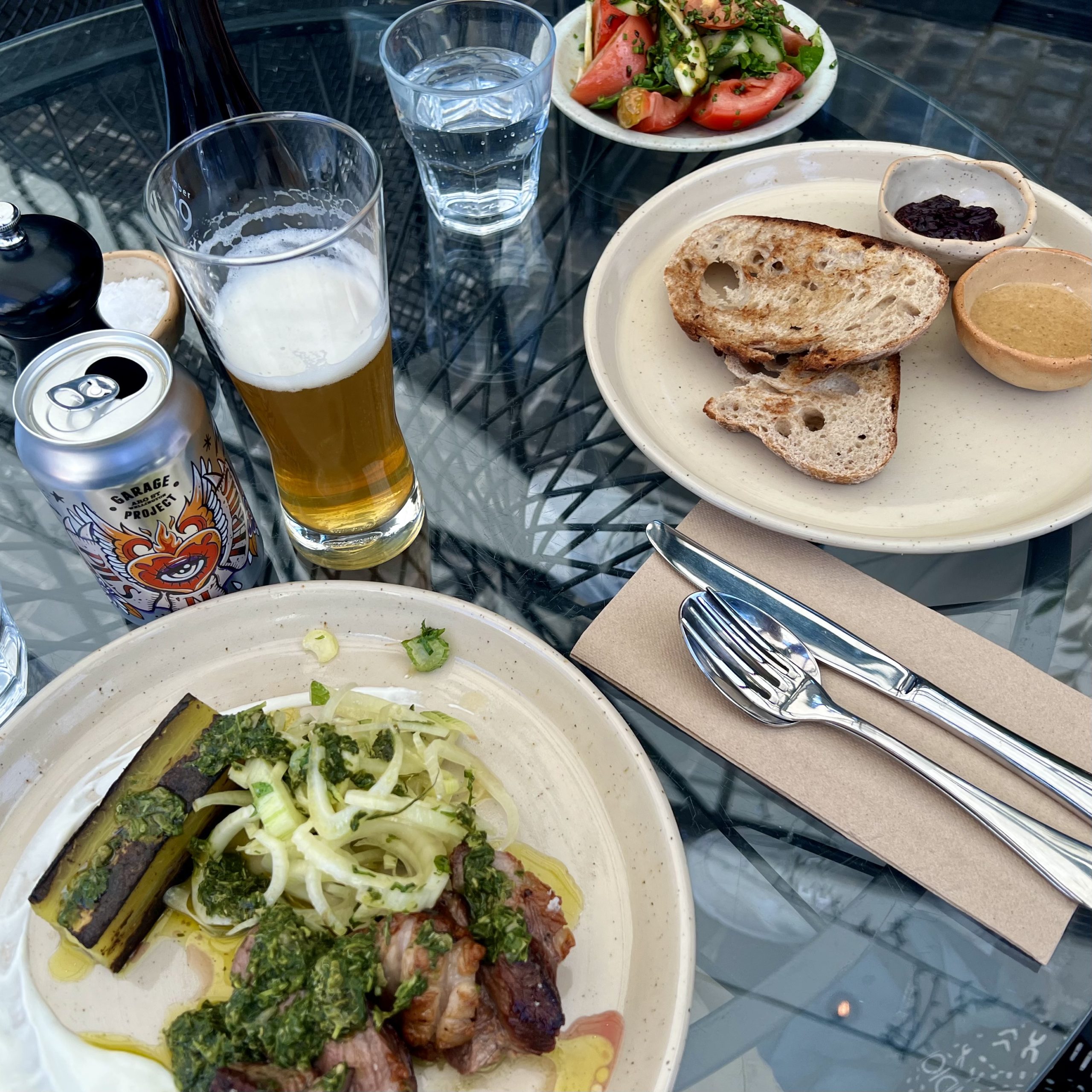
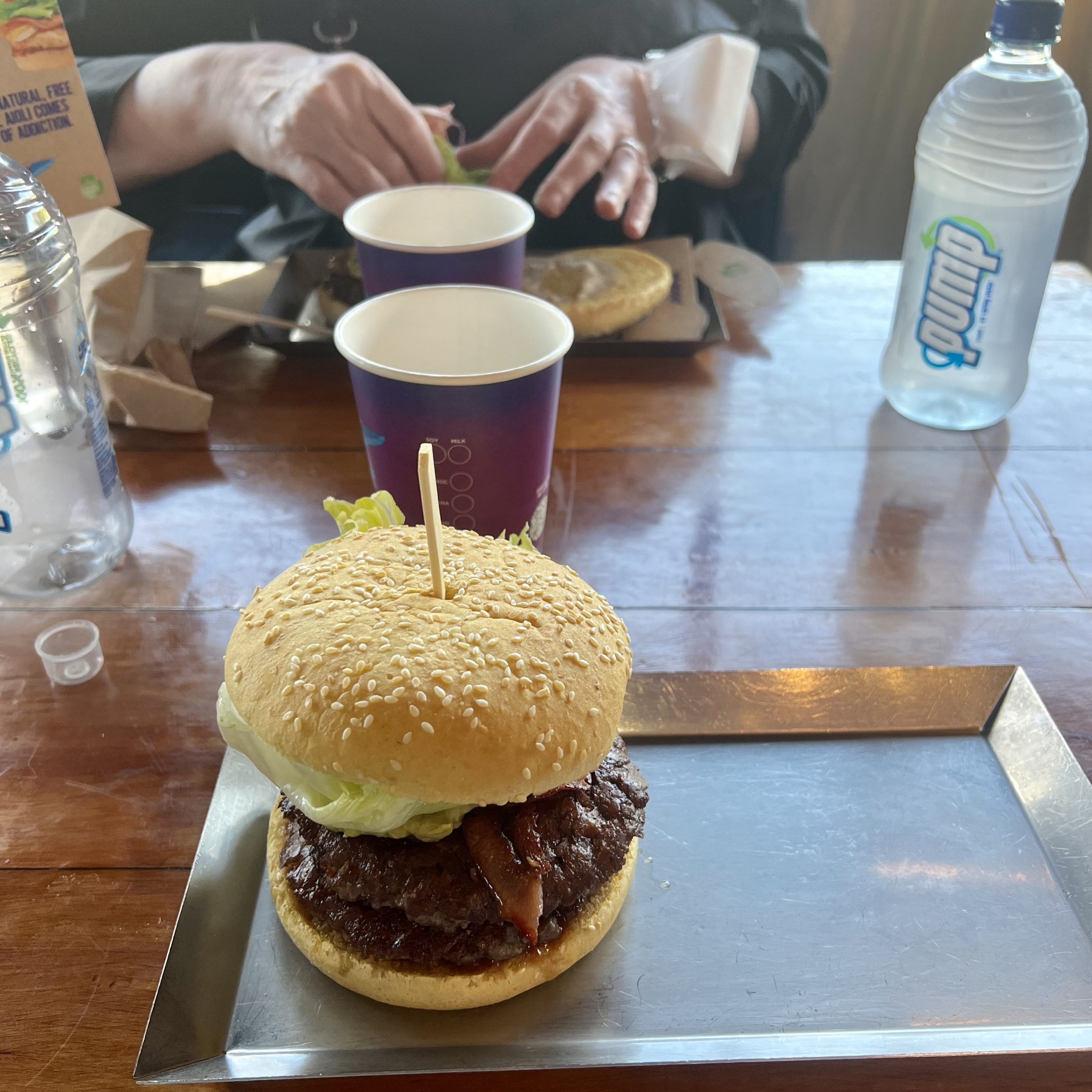
Queenstown
18 – 23 February 2023
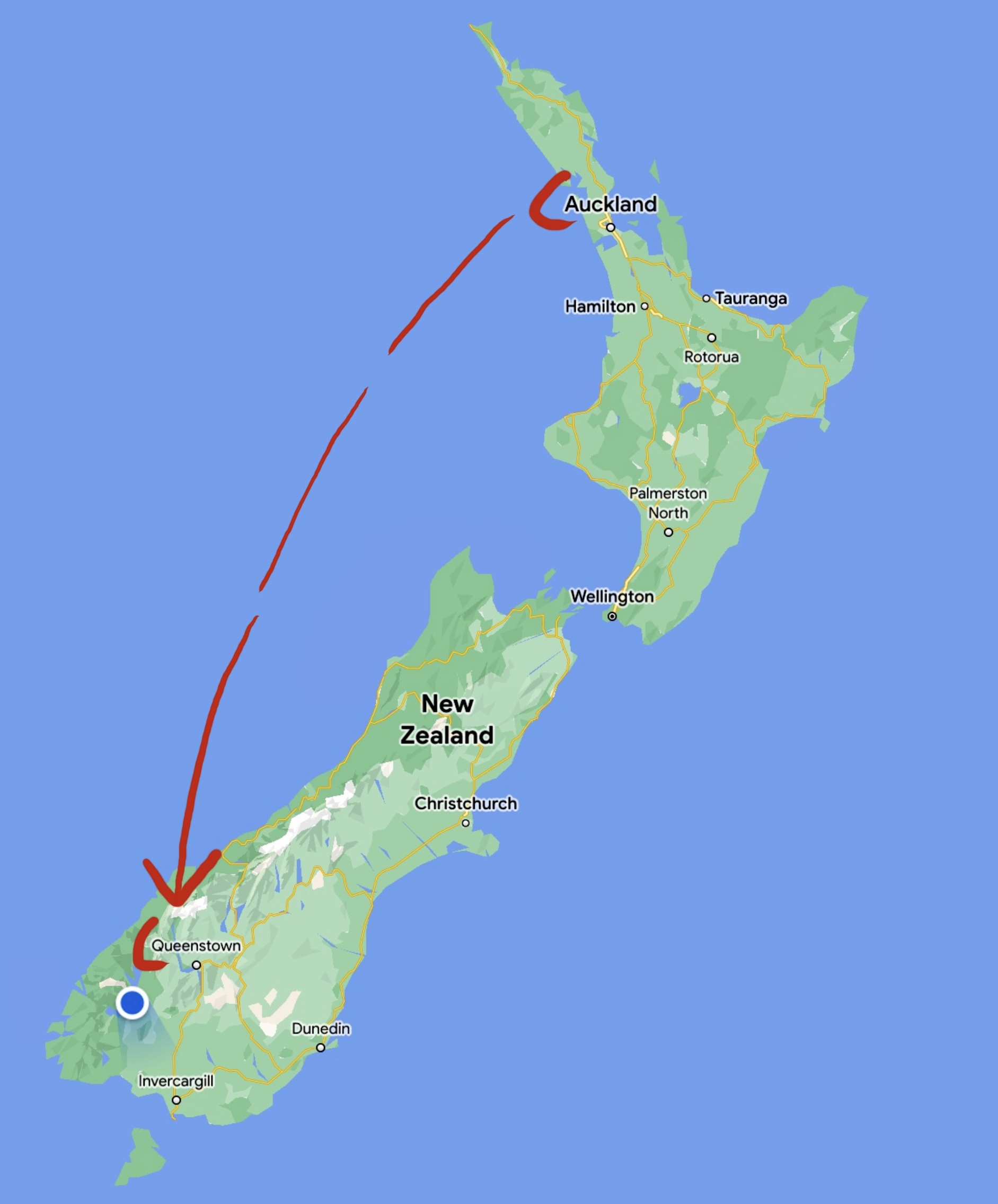
We took a late morning flight from Auckland to Queenstown and picked up a Toyota Rav4. Steering wheel on the left. Bonnie can hear Robert chanting as he drives, “Stay on the left. Left. Left. Left.” He is getting used to driving this way, although he hugs the left side of the road too close at times. He also makes the American Wave often, by starting the windshield wipers instead of the turn signal. We foreign drivers forget that turn signals and windshield wipers are on opposite sides here.
Our lodging and dates with fishing guides have been made in advance by Best of New Zealand Flyfishing, based in Los Angeles. which we used happily in the past. No need for Bonnie to research hotels, which is fortunate because they are often quite sparsely scattered and because the boom in foreign tourists this season means almost everything is fully booked right now.
Queenstown is the most important tourist destination in the country. It is set at the edge of a stunning lake with the Remarkable Mountains in the background. This was base camp for many Lord of the Rings shoots. Although population estimates for the town are all over the map, it seems to have a permanent urban population of about 16,000, with four million visitors surging in each year and numbers increasing rapidly. It feels a little like Tahoe with university retail, minus the campus. Skiing in the winter, many outdoor sports in the summer. If there is a world center for backpackers, it is Queenstown. Although there are plenty of gray-haired retirees ambling around, you see lots of people in their 20s and 30s with well-worn backpacks, staying a few days on their journey around New Zealand. The majority of streets near the water in the center of town are pedestrian only or are in the process of becoming pedestrian. Makes for pleasant strolling. The majority of stores offer not products but adventures: rides in jet boats, kayaking, bungee jumping, bike rentals, canyoning, helicopter rides, steam boat excursions, and guided hikes. You also see a few hunters on the streets, given away by their camouflage clothing. Lots of visitors from abroad. While downing some popular FergBurgers, we shared a table with Australian and British kids visiting the South Island on their way to Fiji.
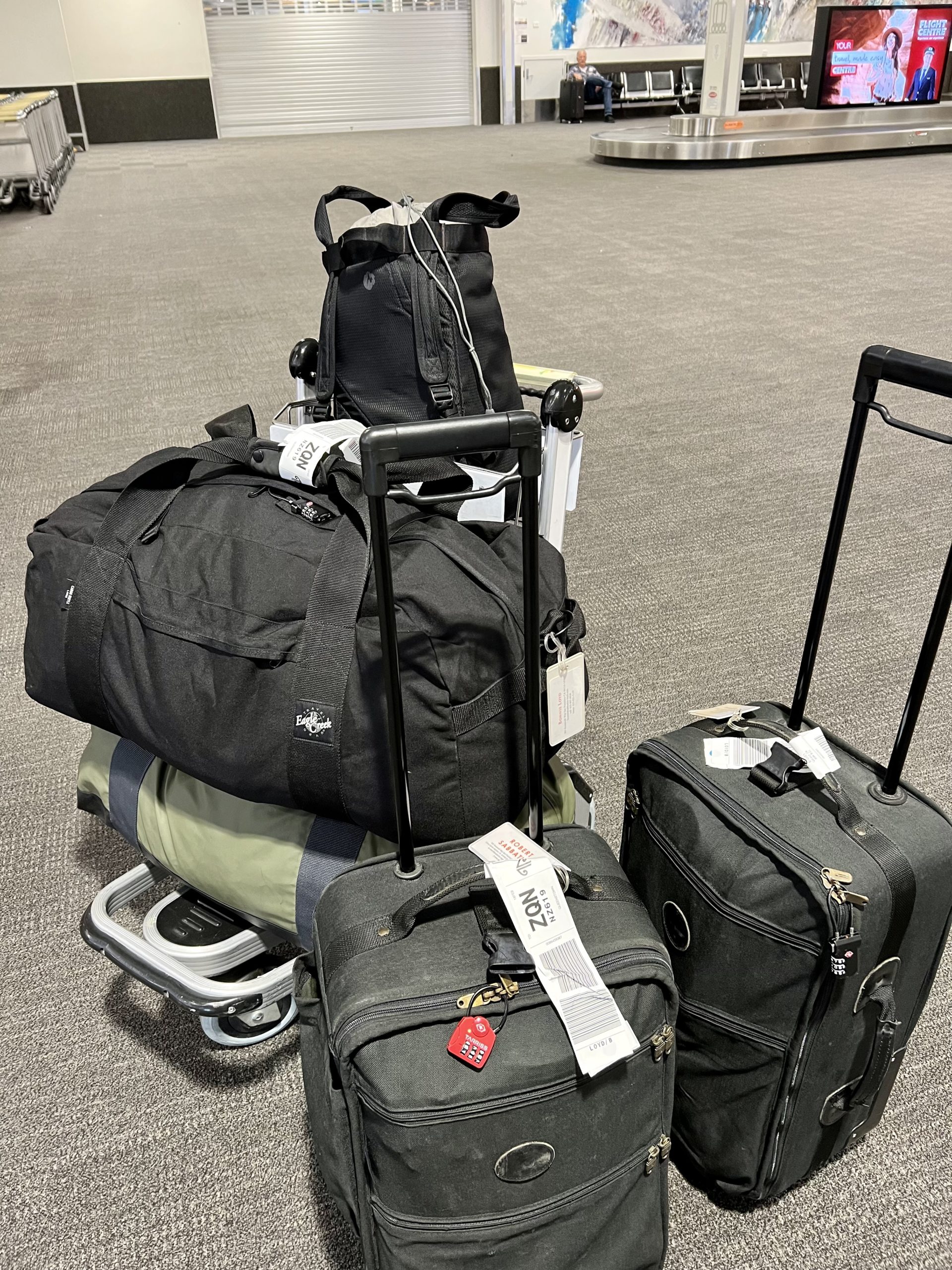
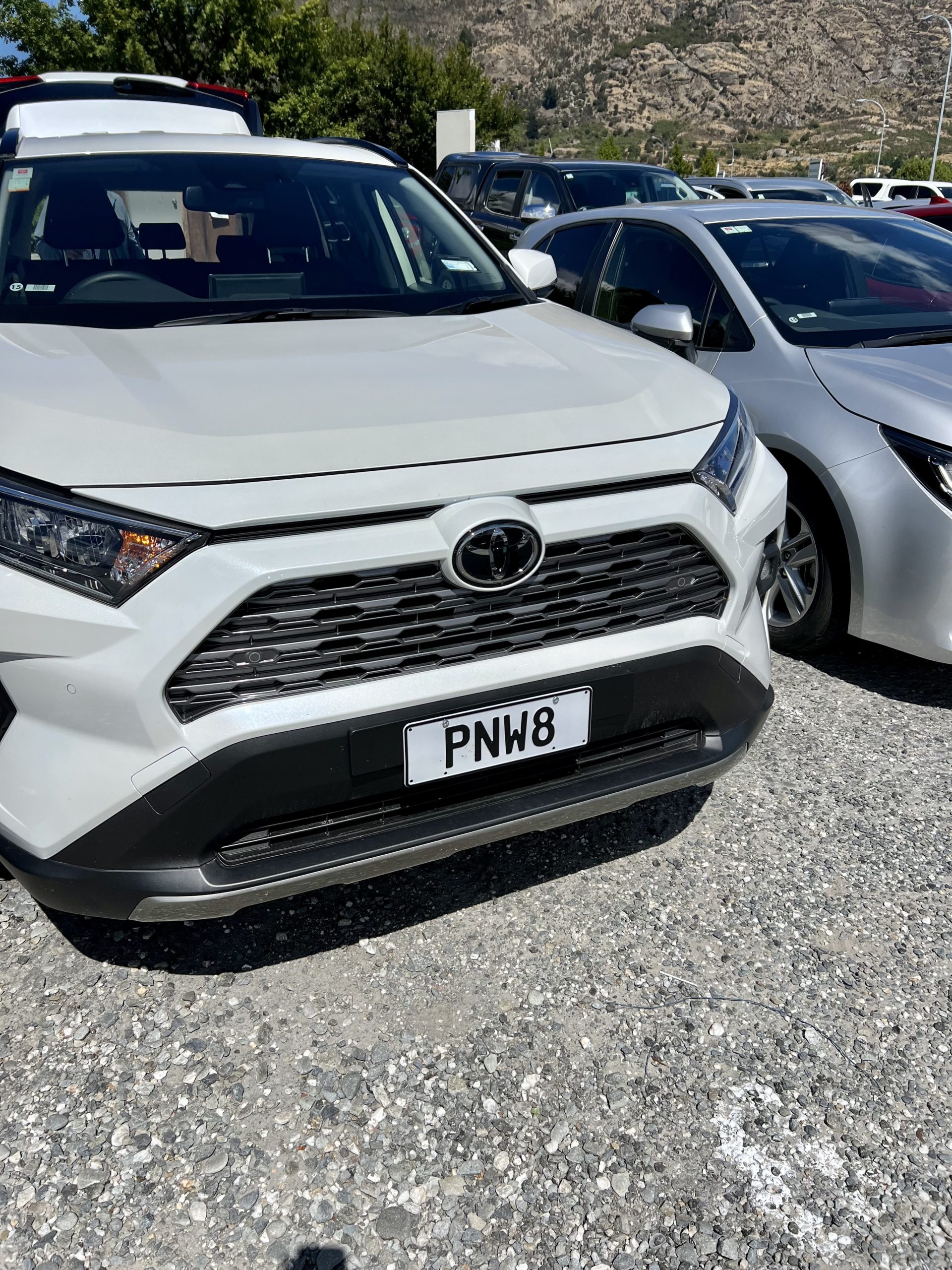
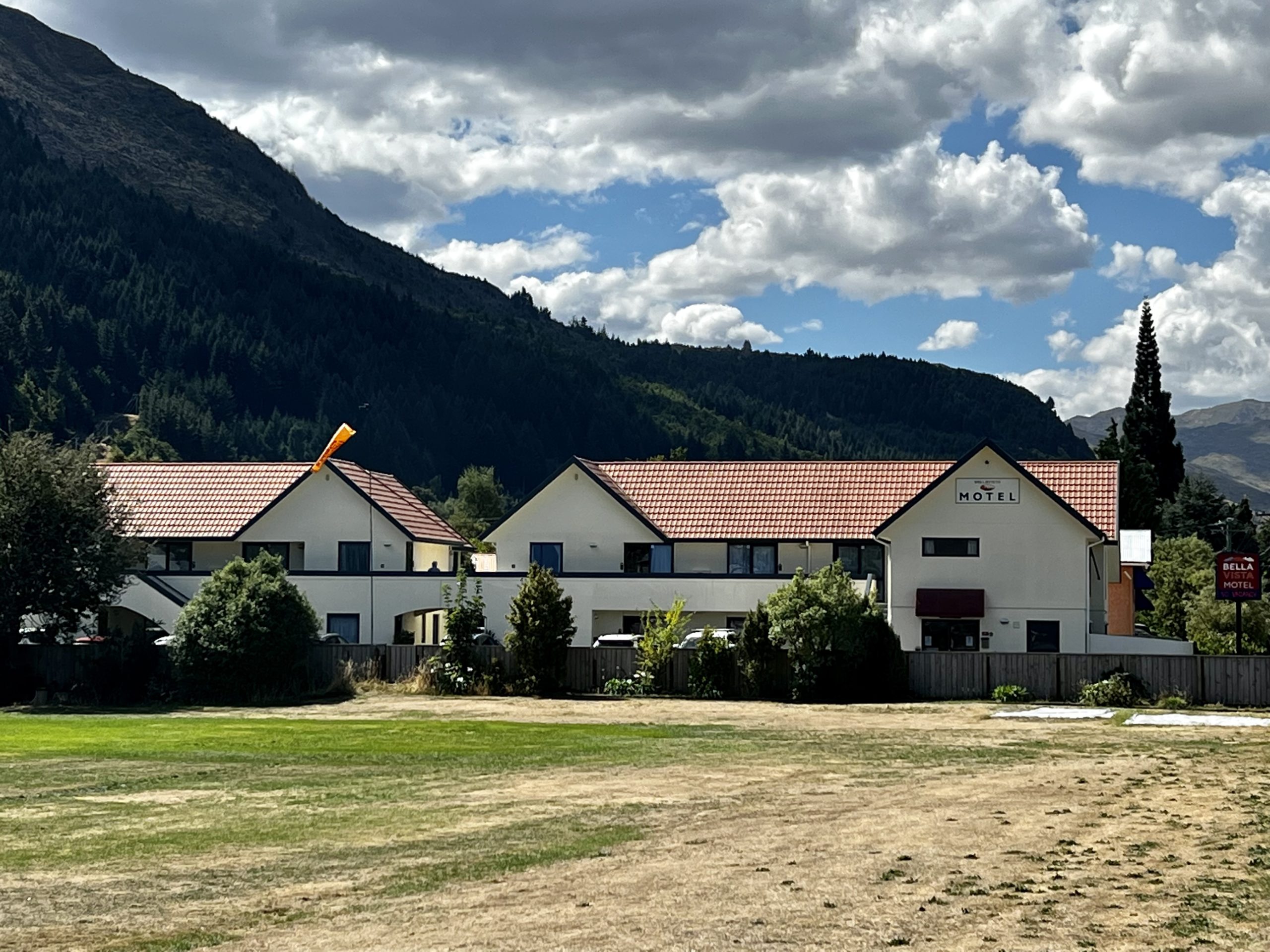
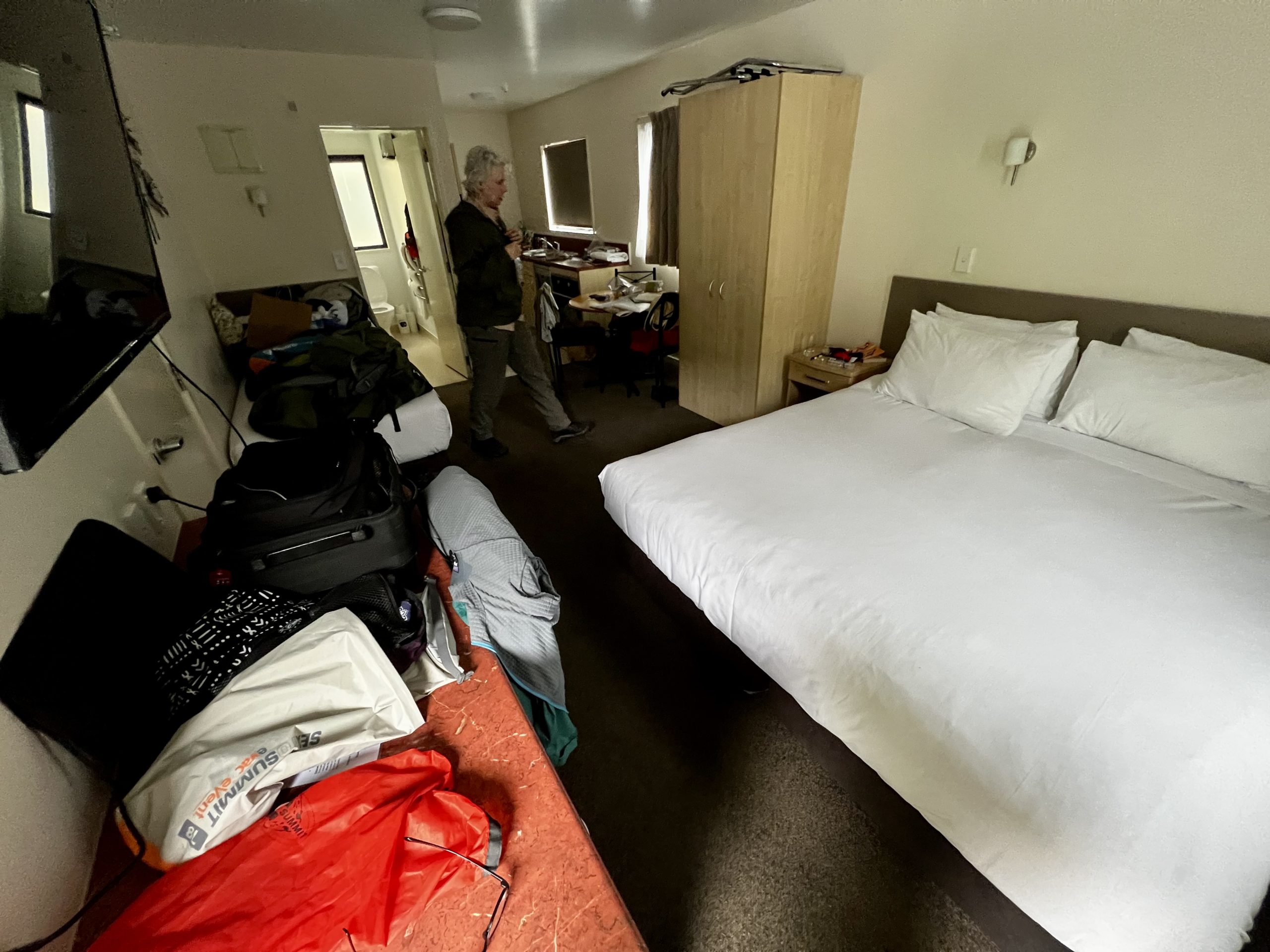
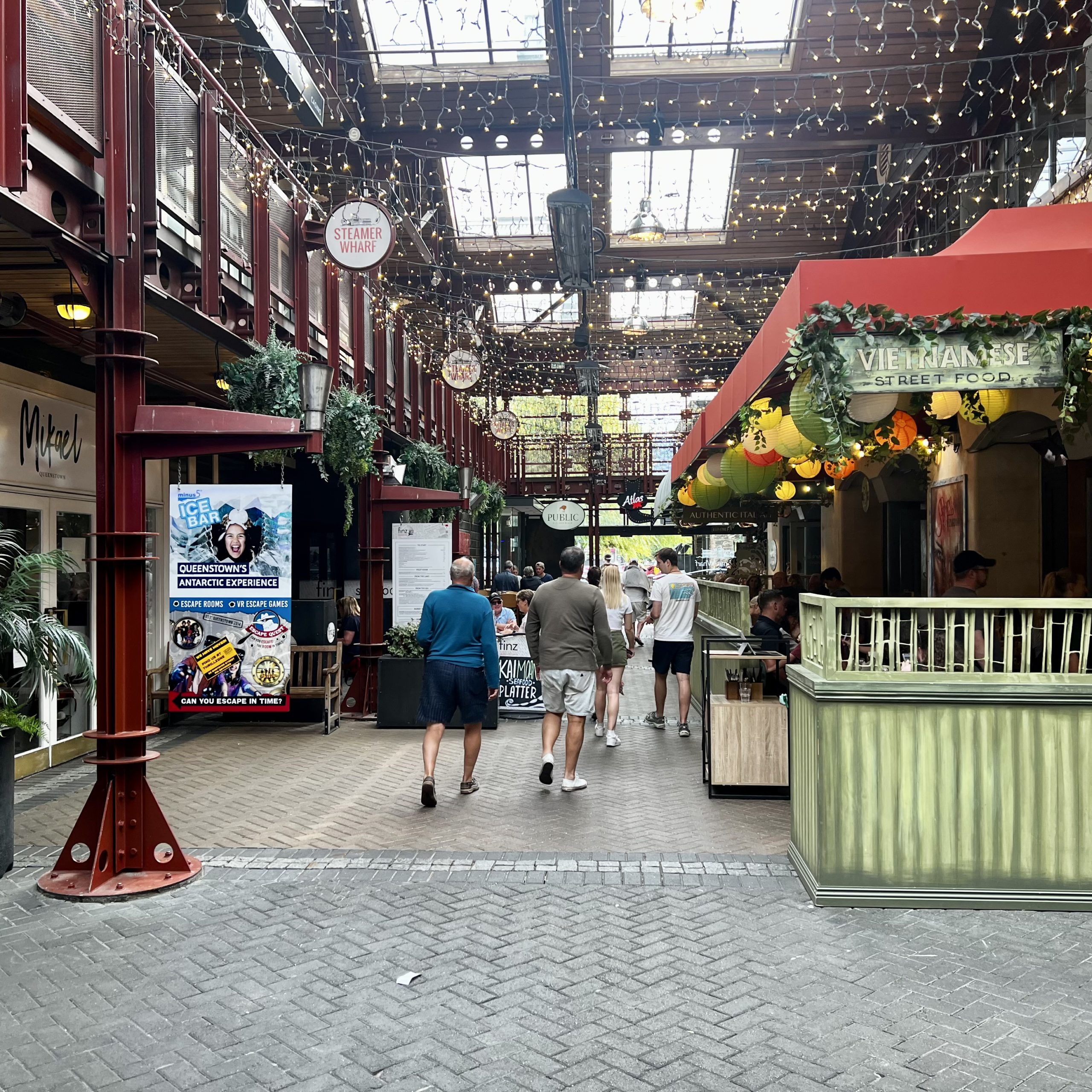
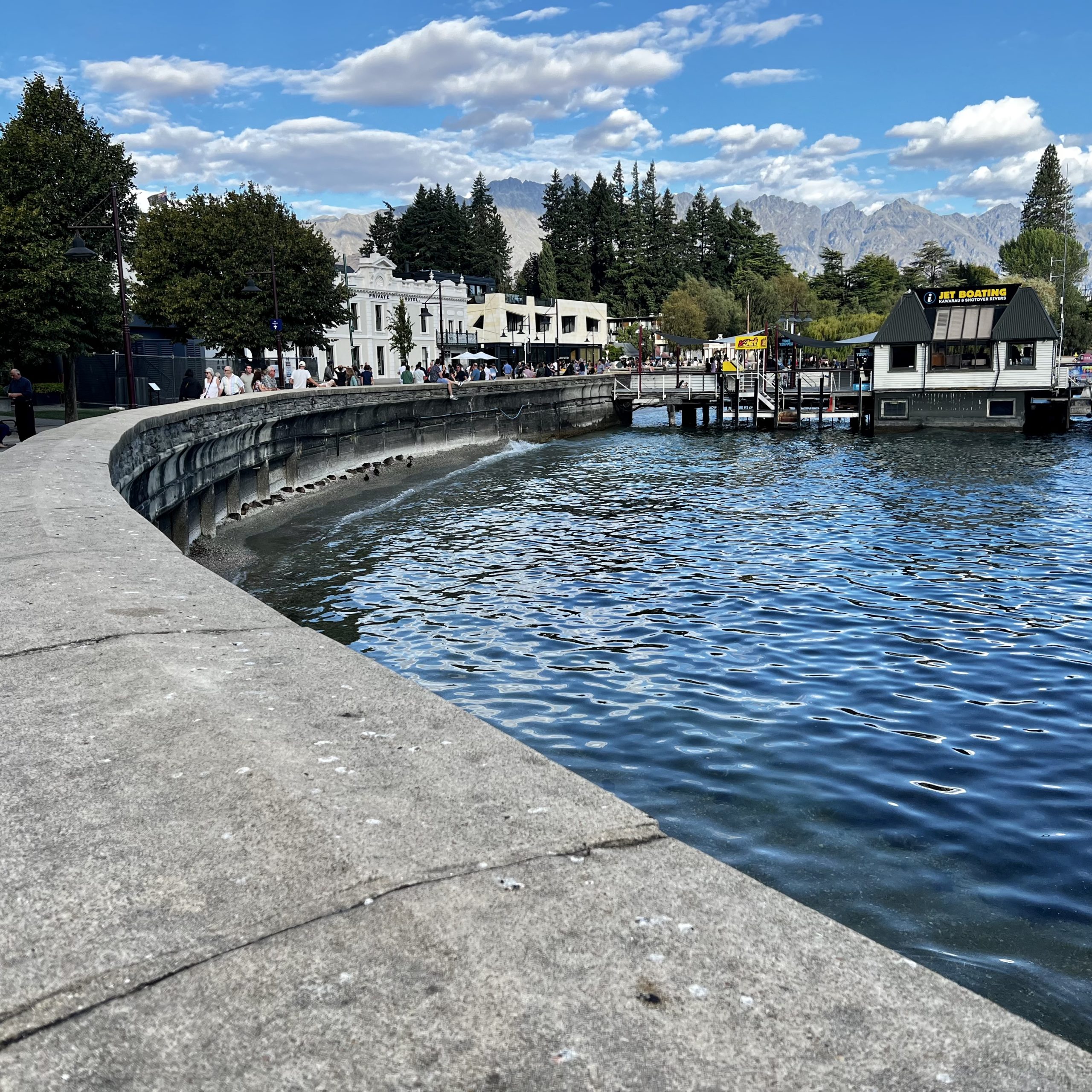
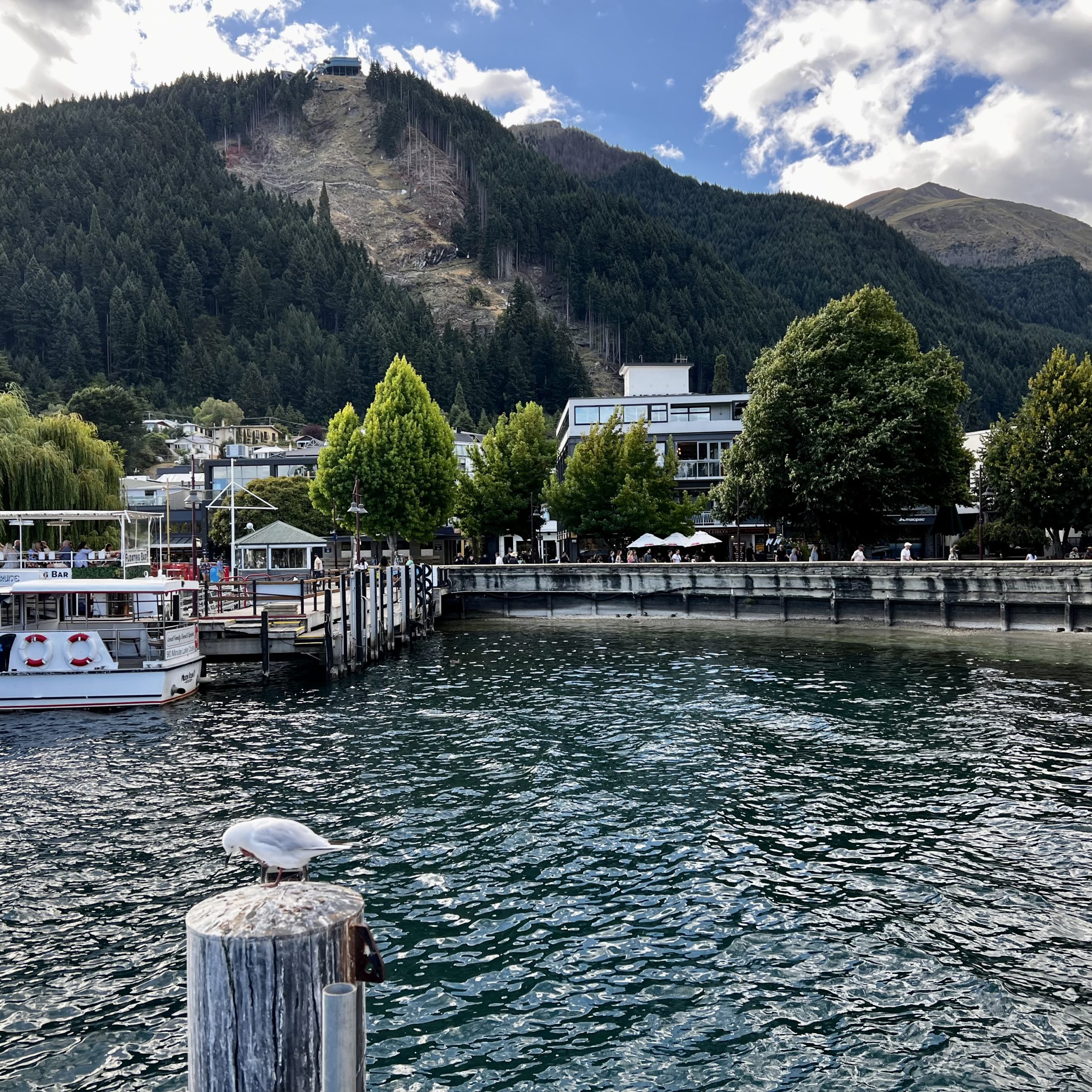

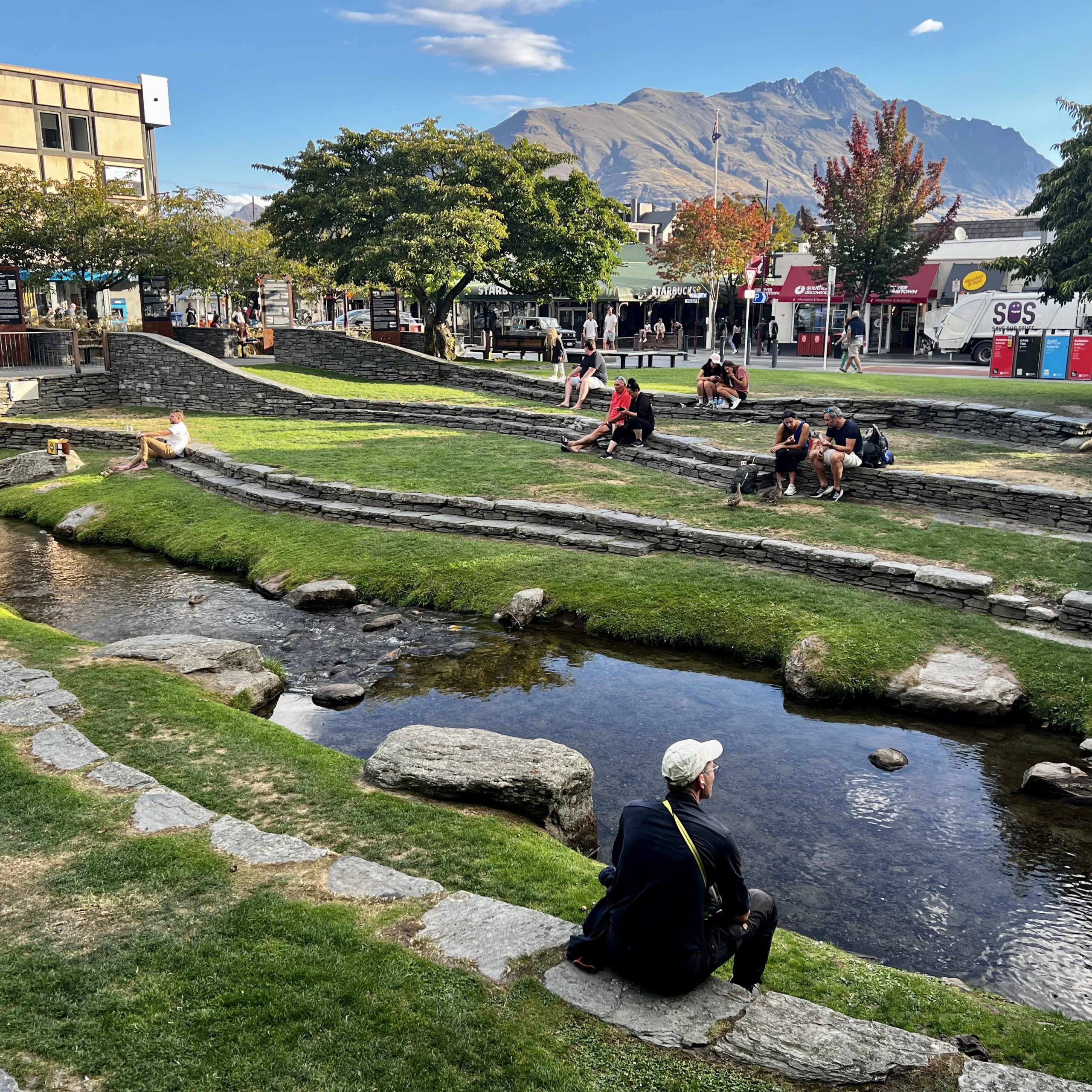

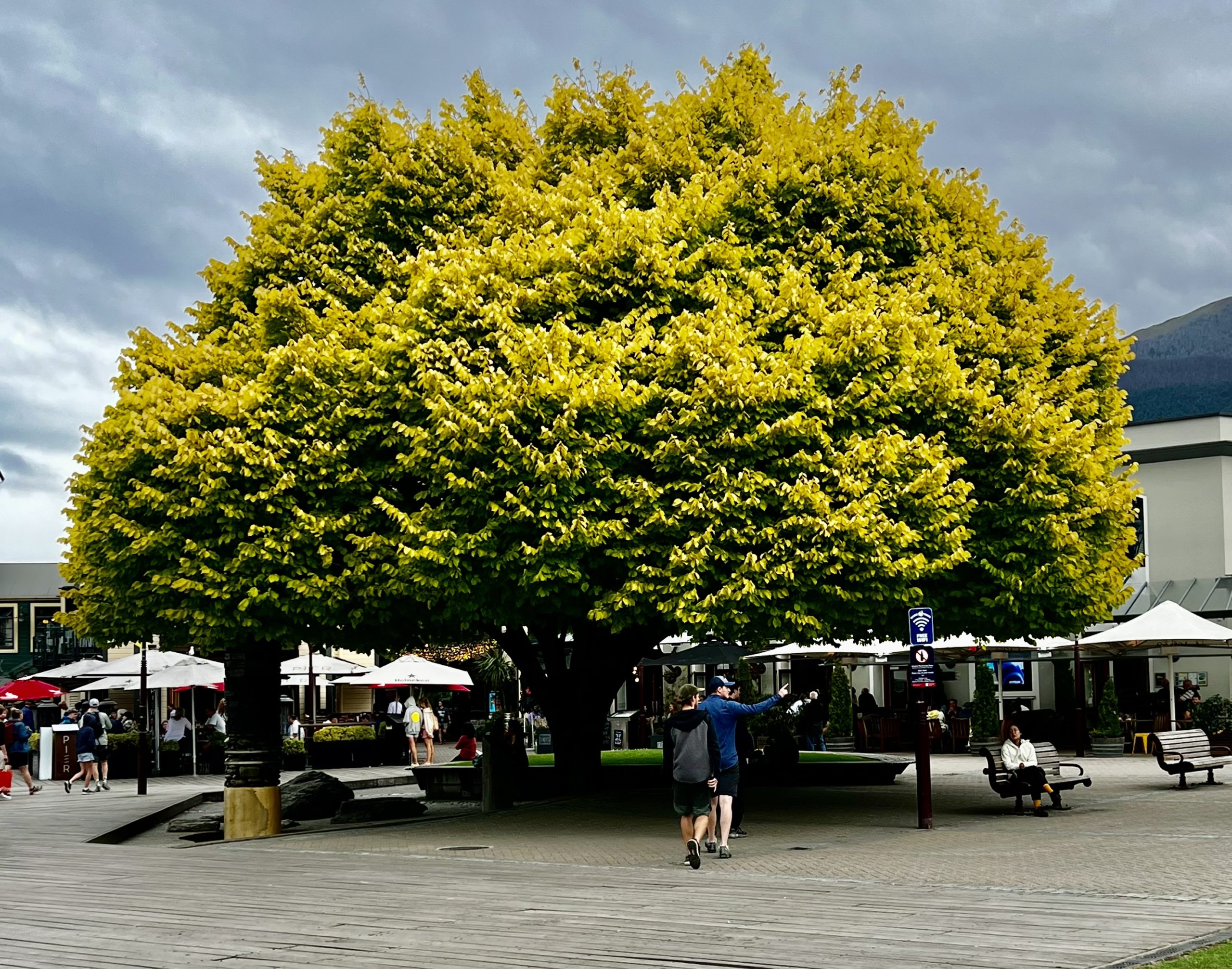
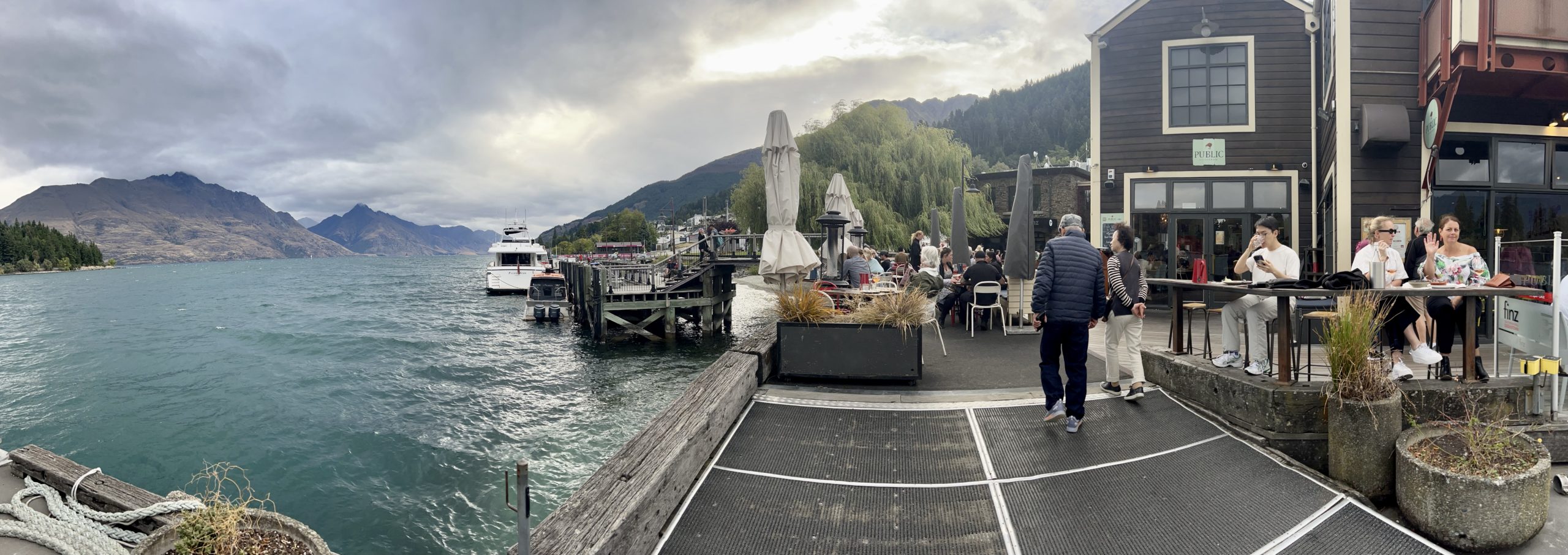
Food and Drinks
The food in Queenstown is definitely bar food. Hard to find a salad. And they take beer seriously. It appears before the wine on drink menus. Burgers, pizza, and Asian food are the staples. We missed more than one dinner because all the restaurants we checked were fully booked. Even if you could score a table, they warned you about a forty-five-minute wait for food because they are short on kitchen staff. All the tourists seemed to be experiencing the same thing.
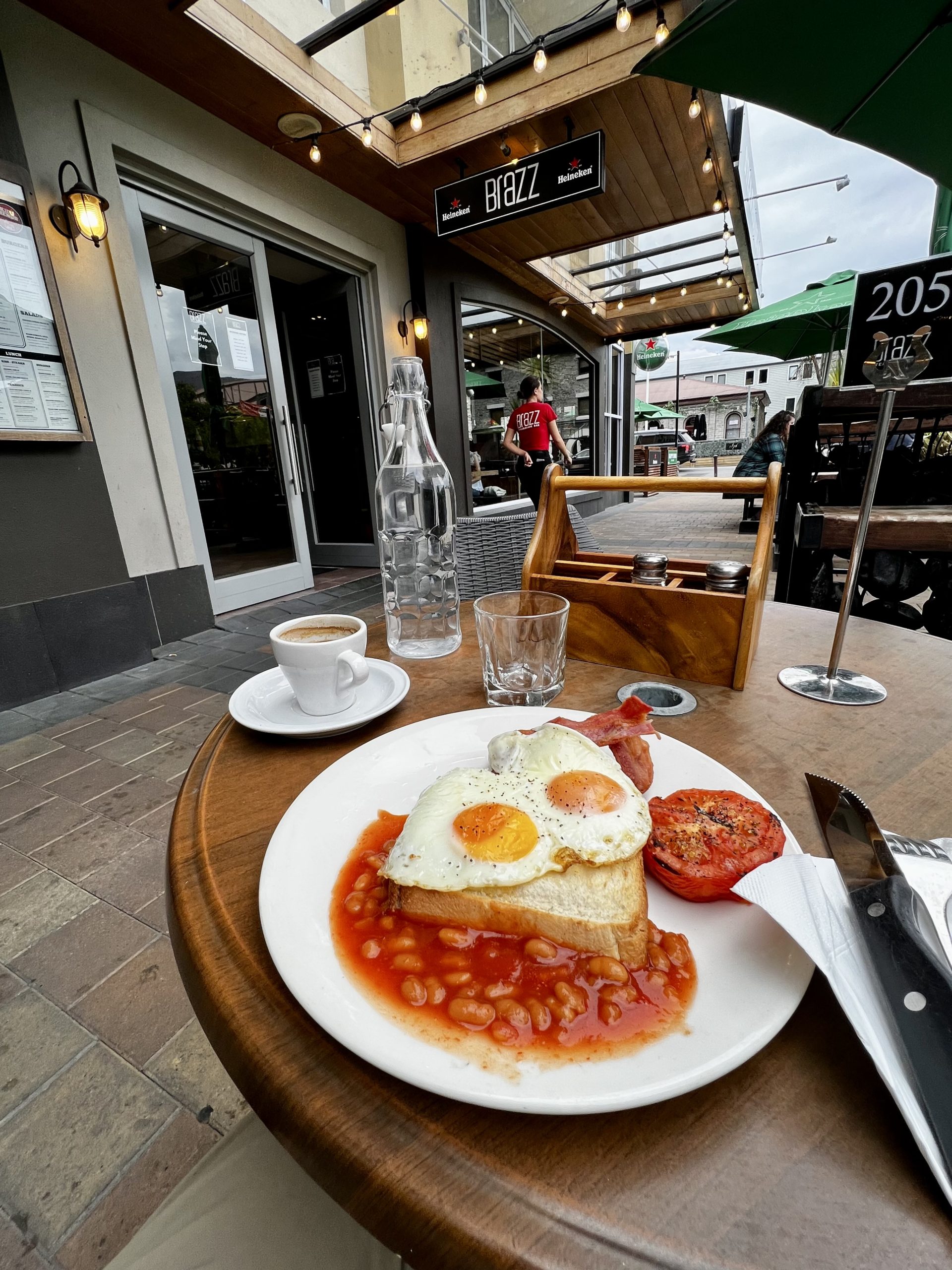
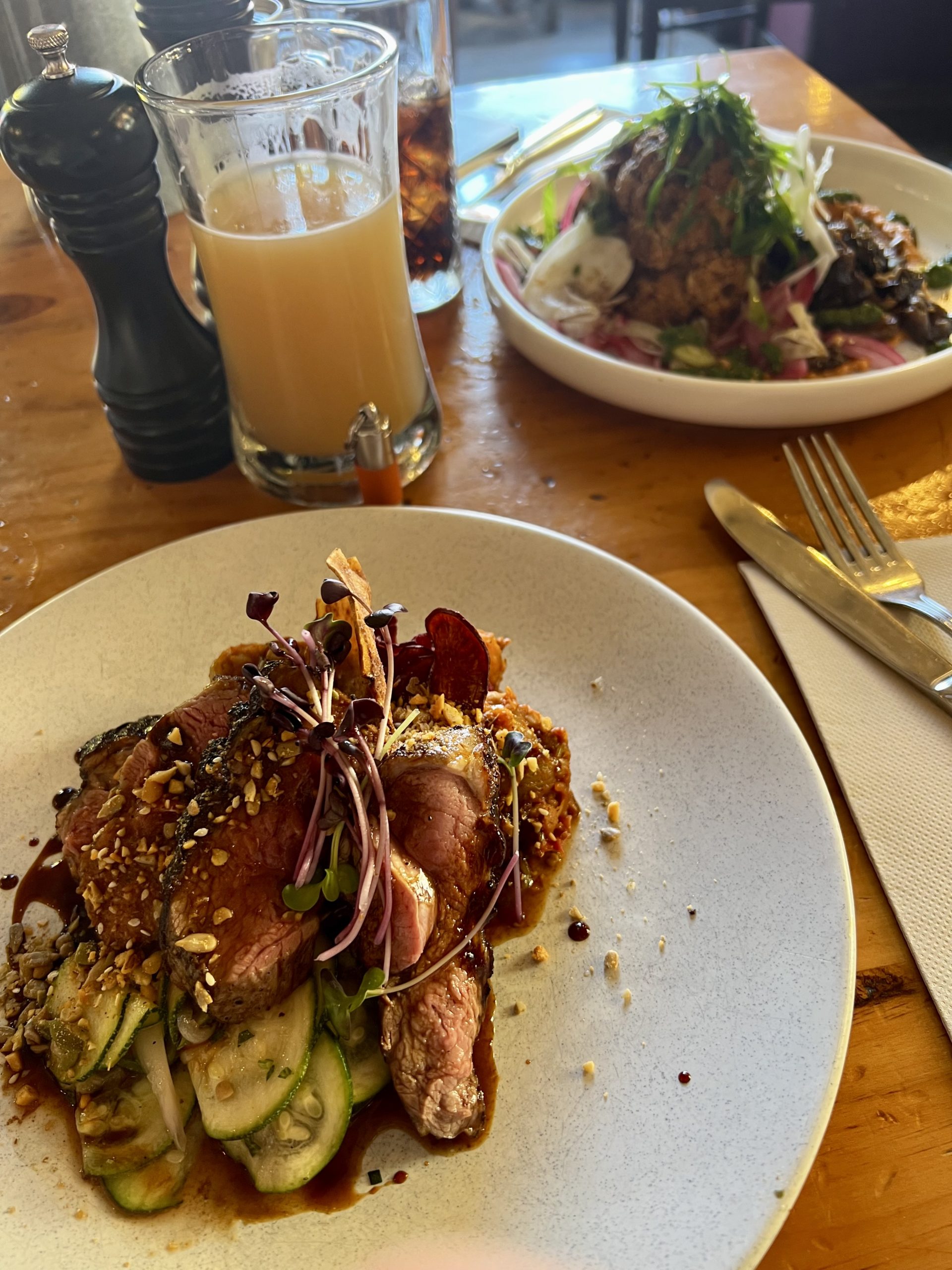
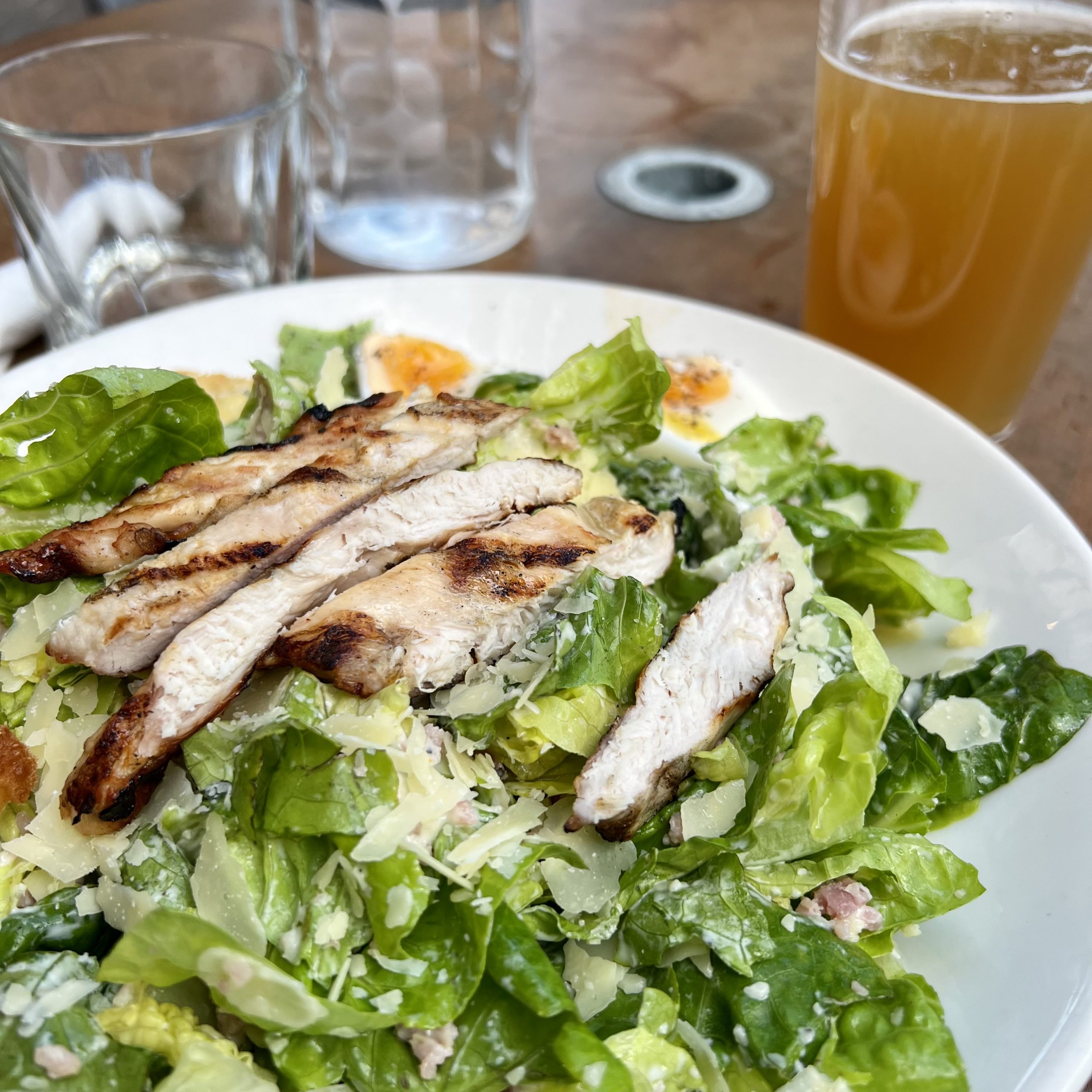
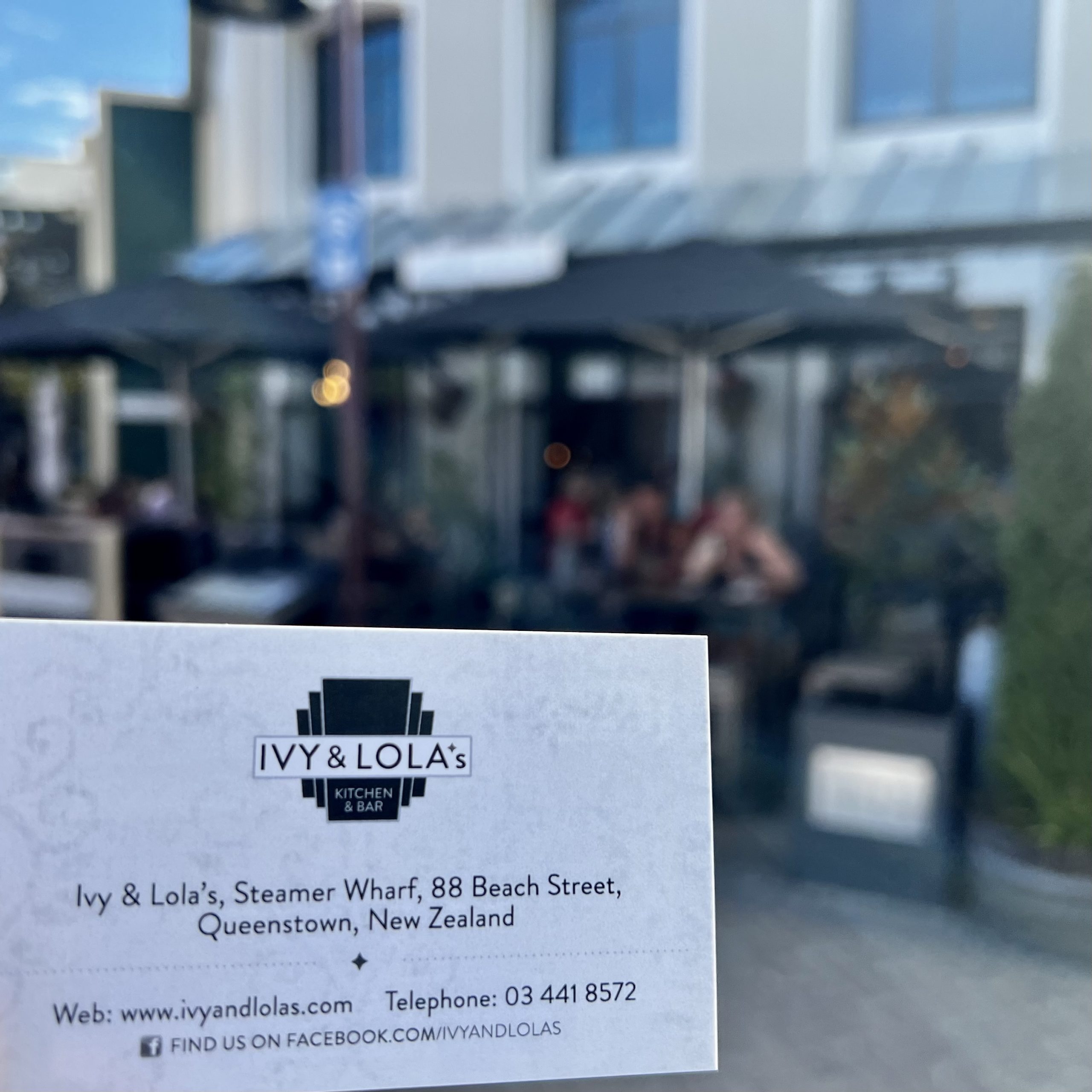
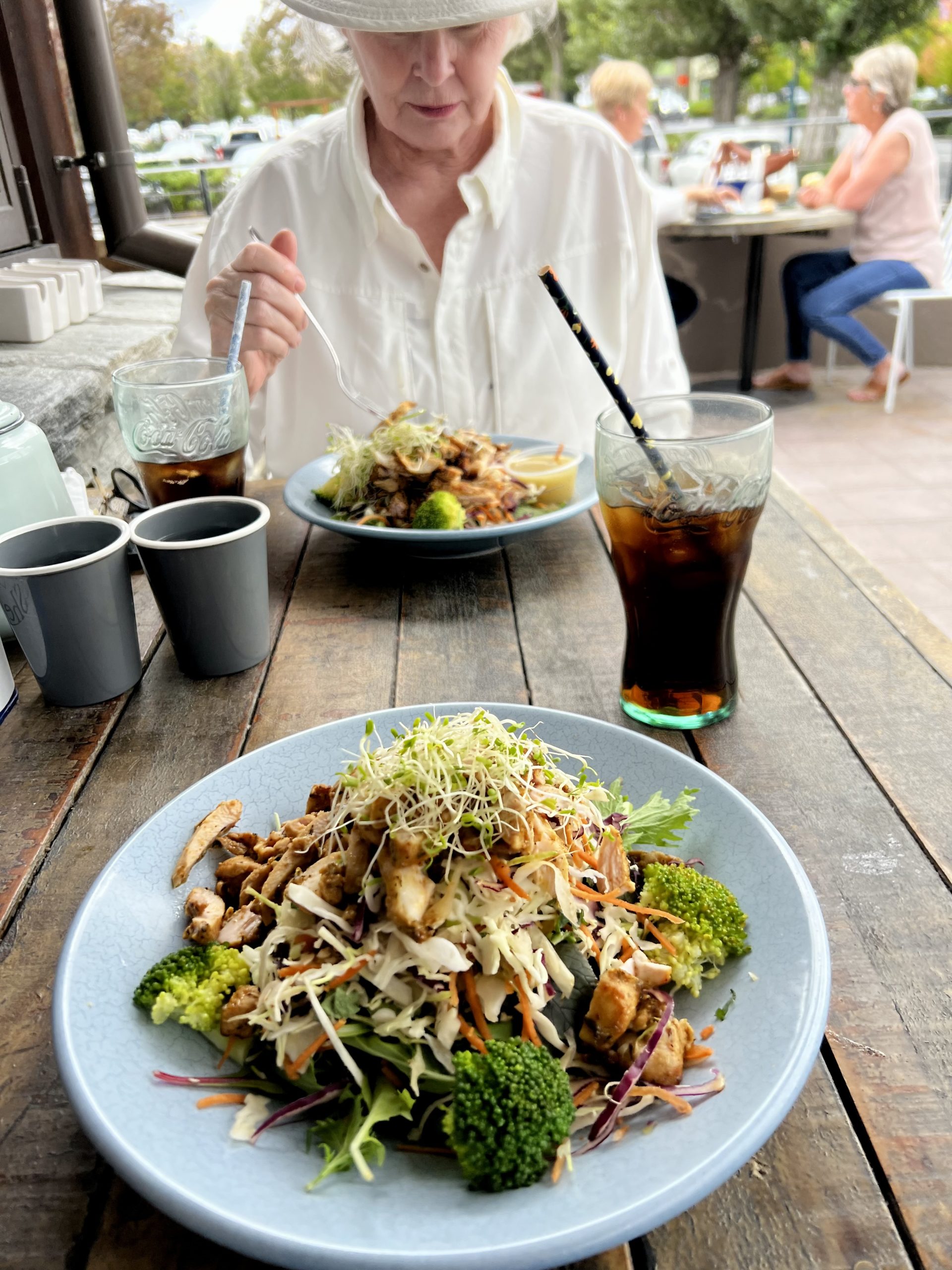

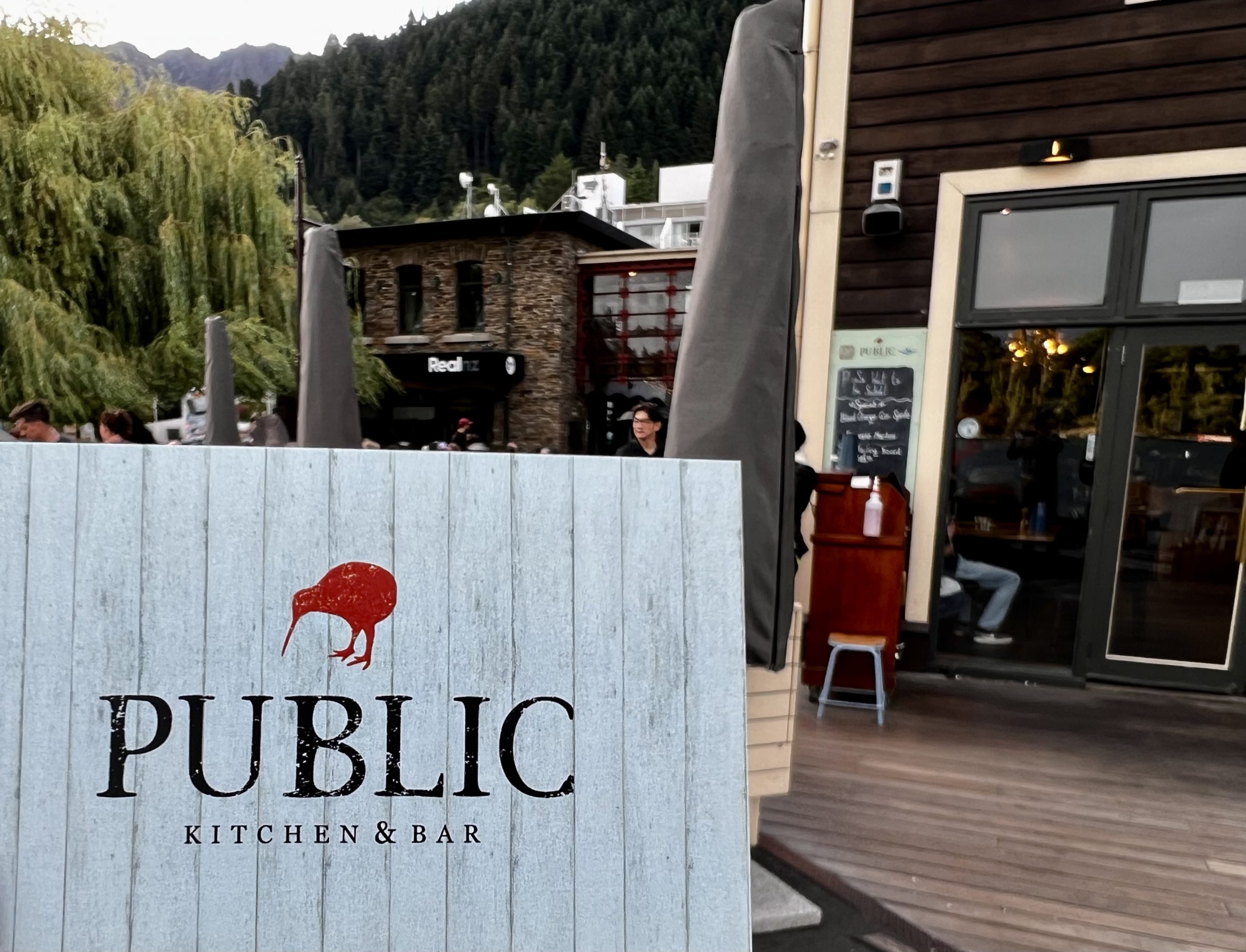
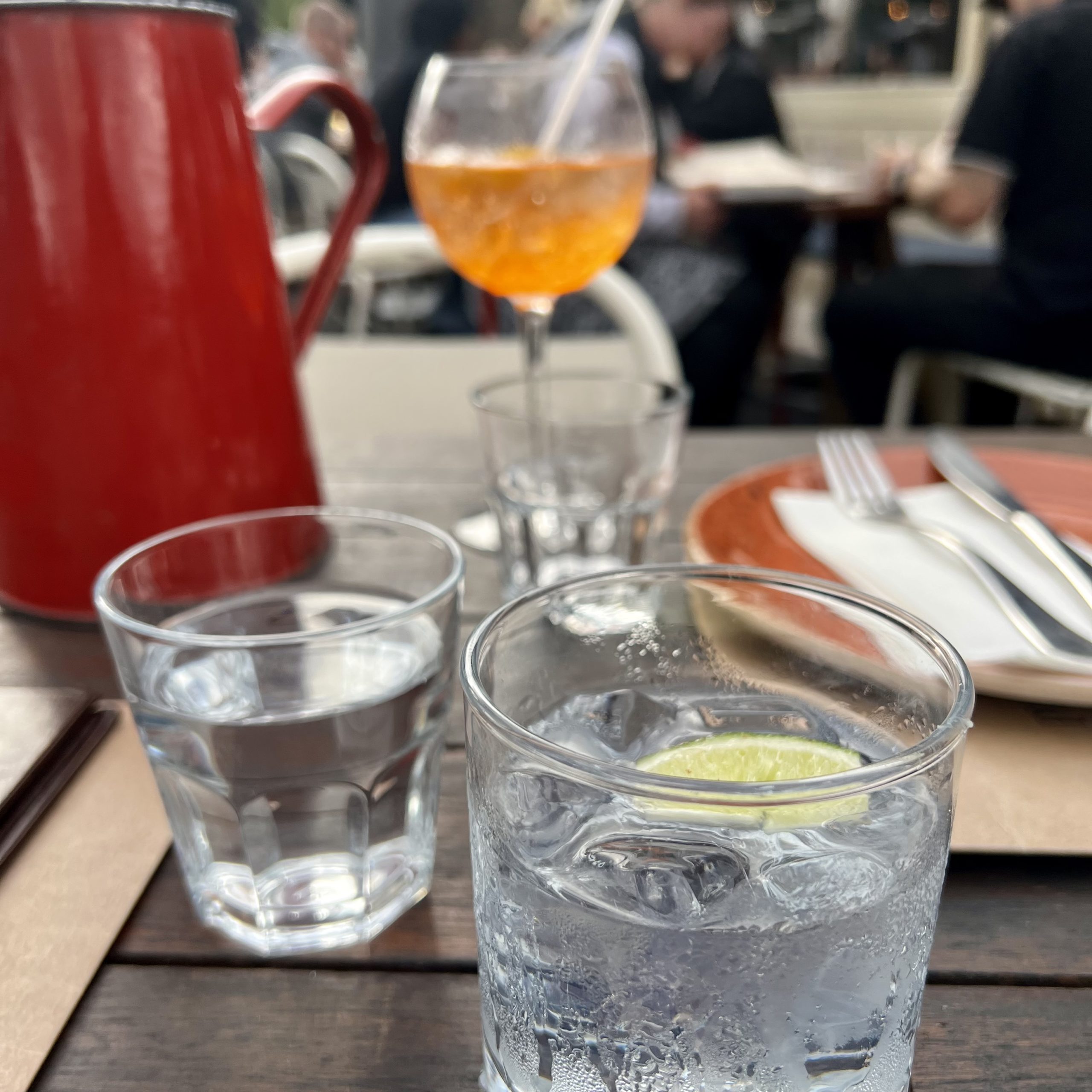
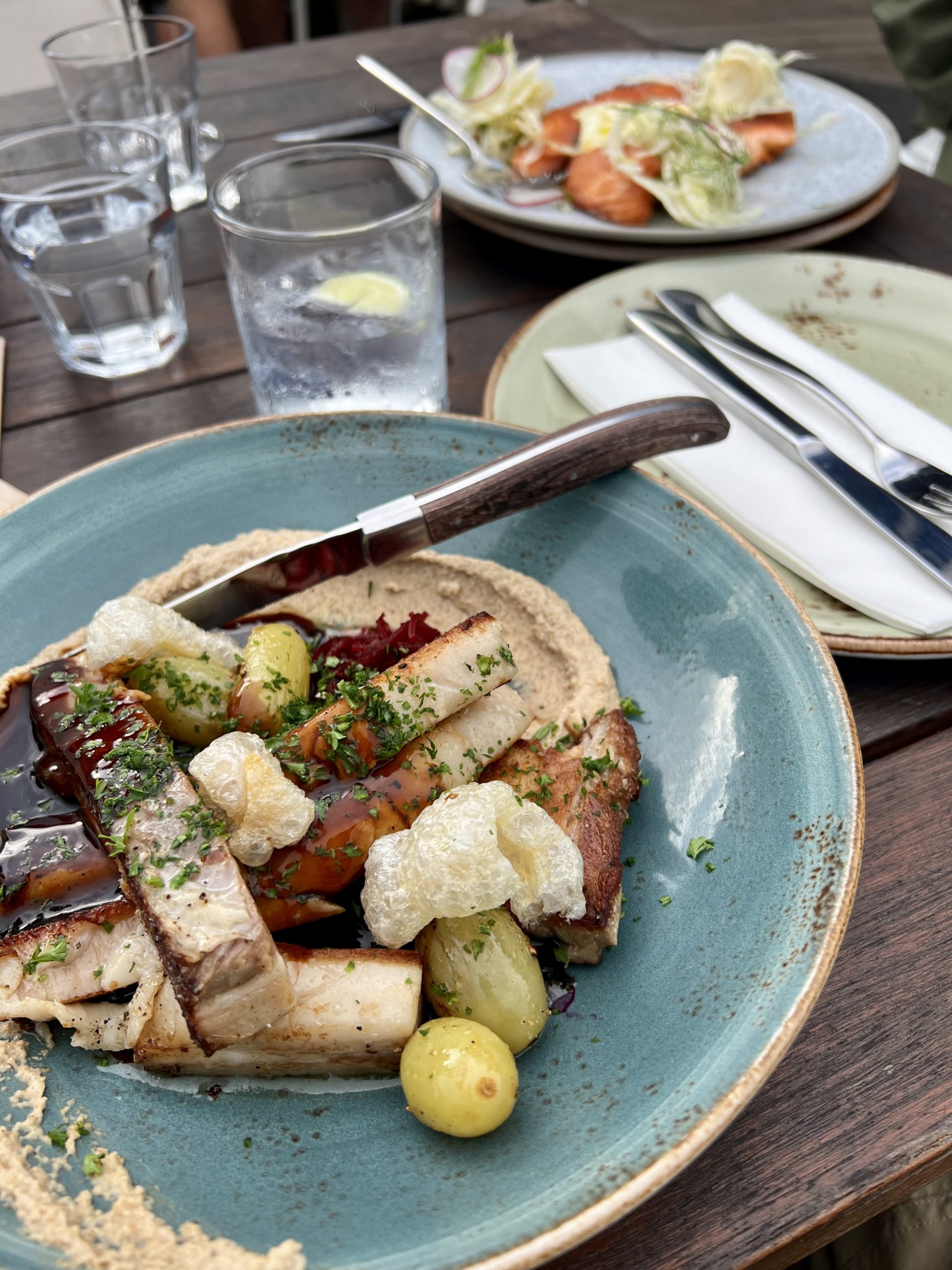
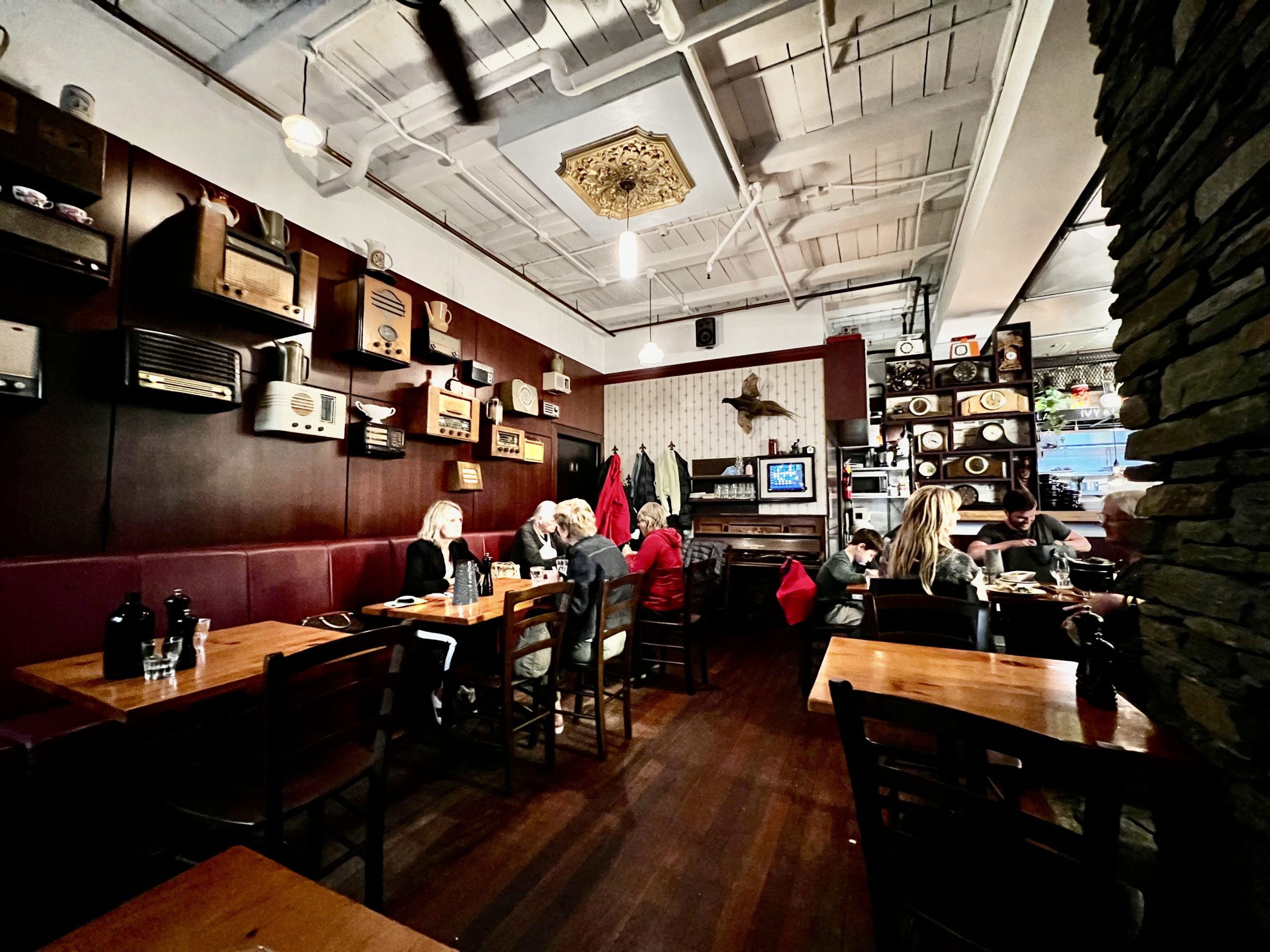
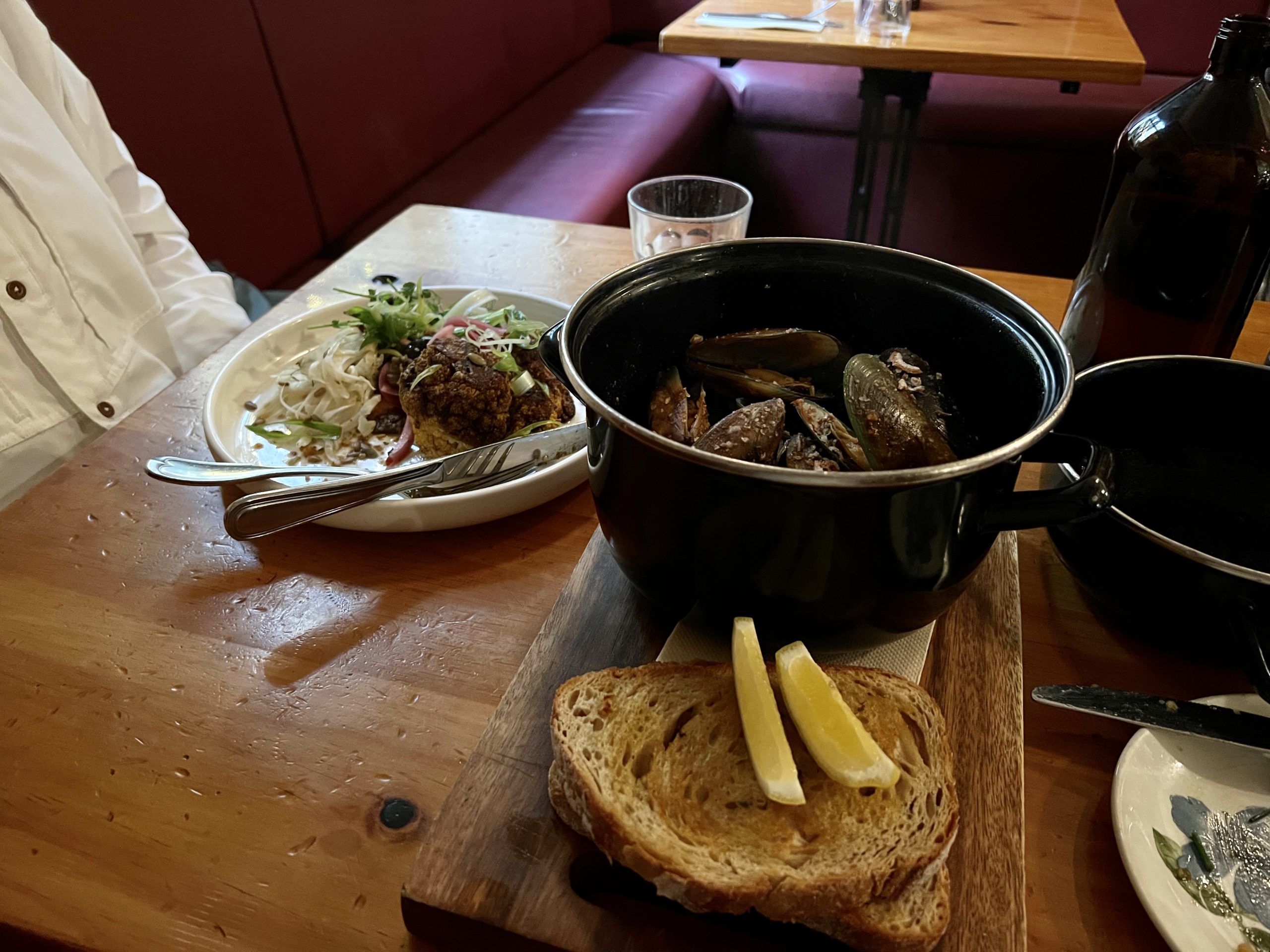
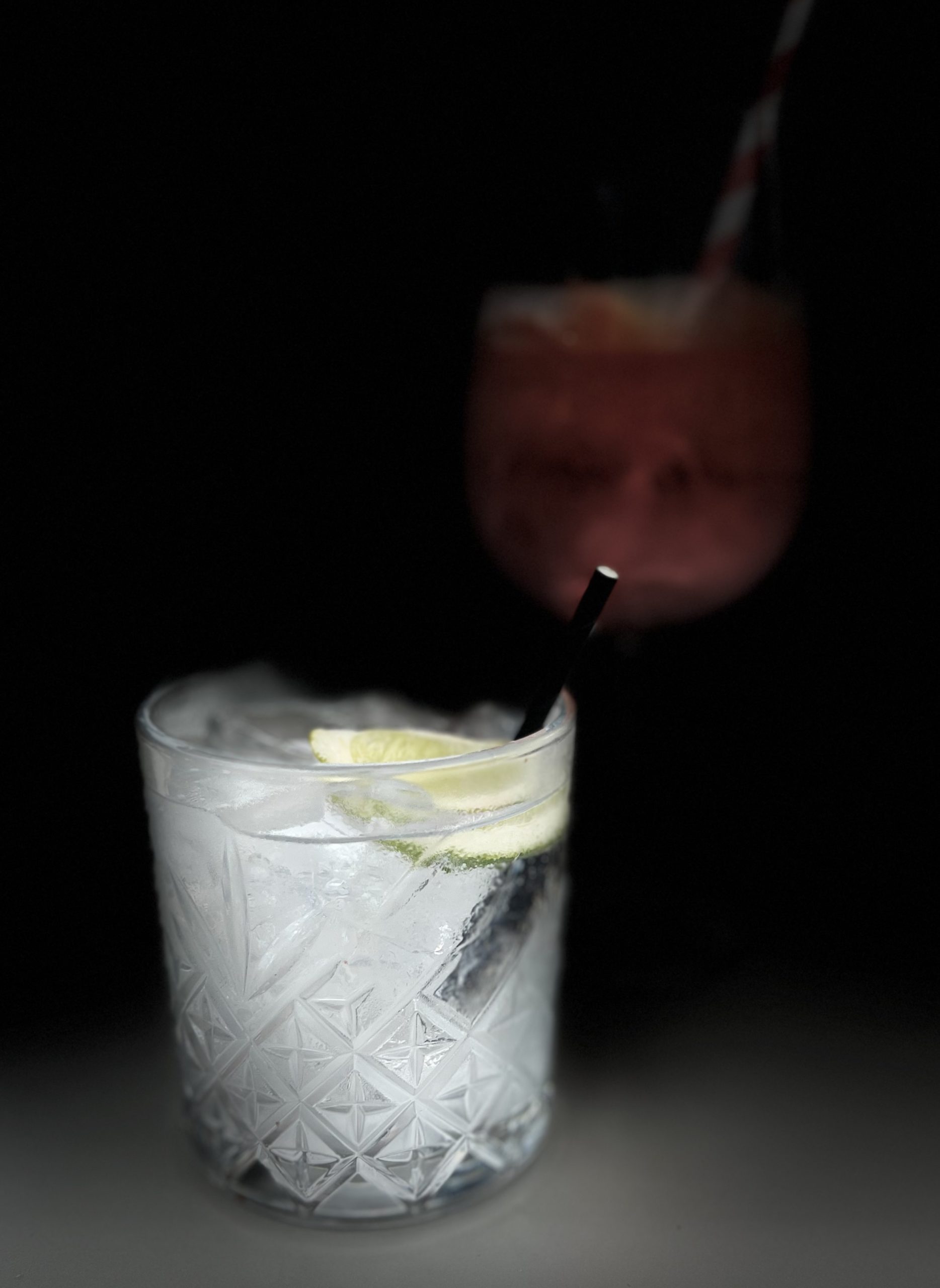
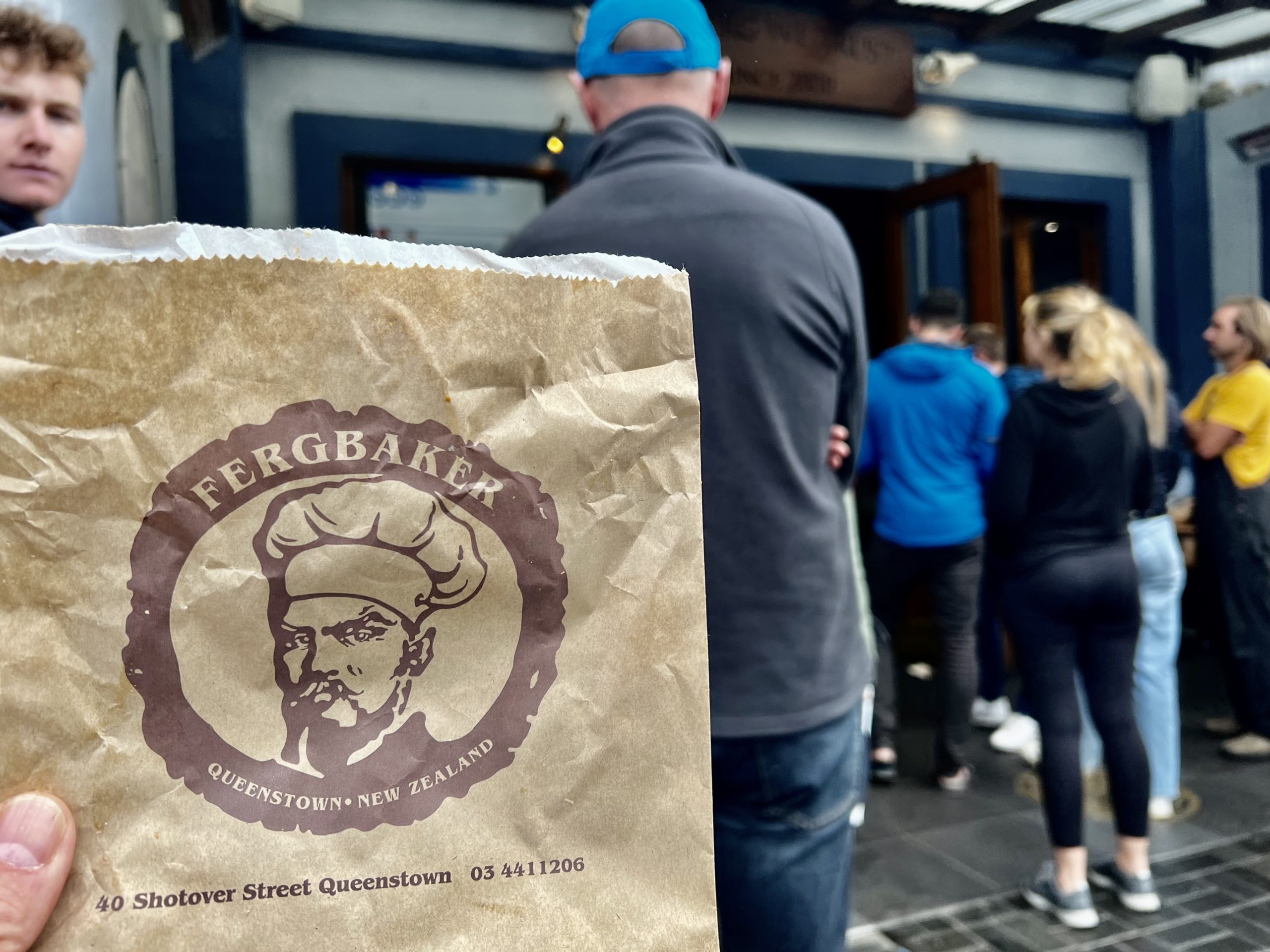
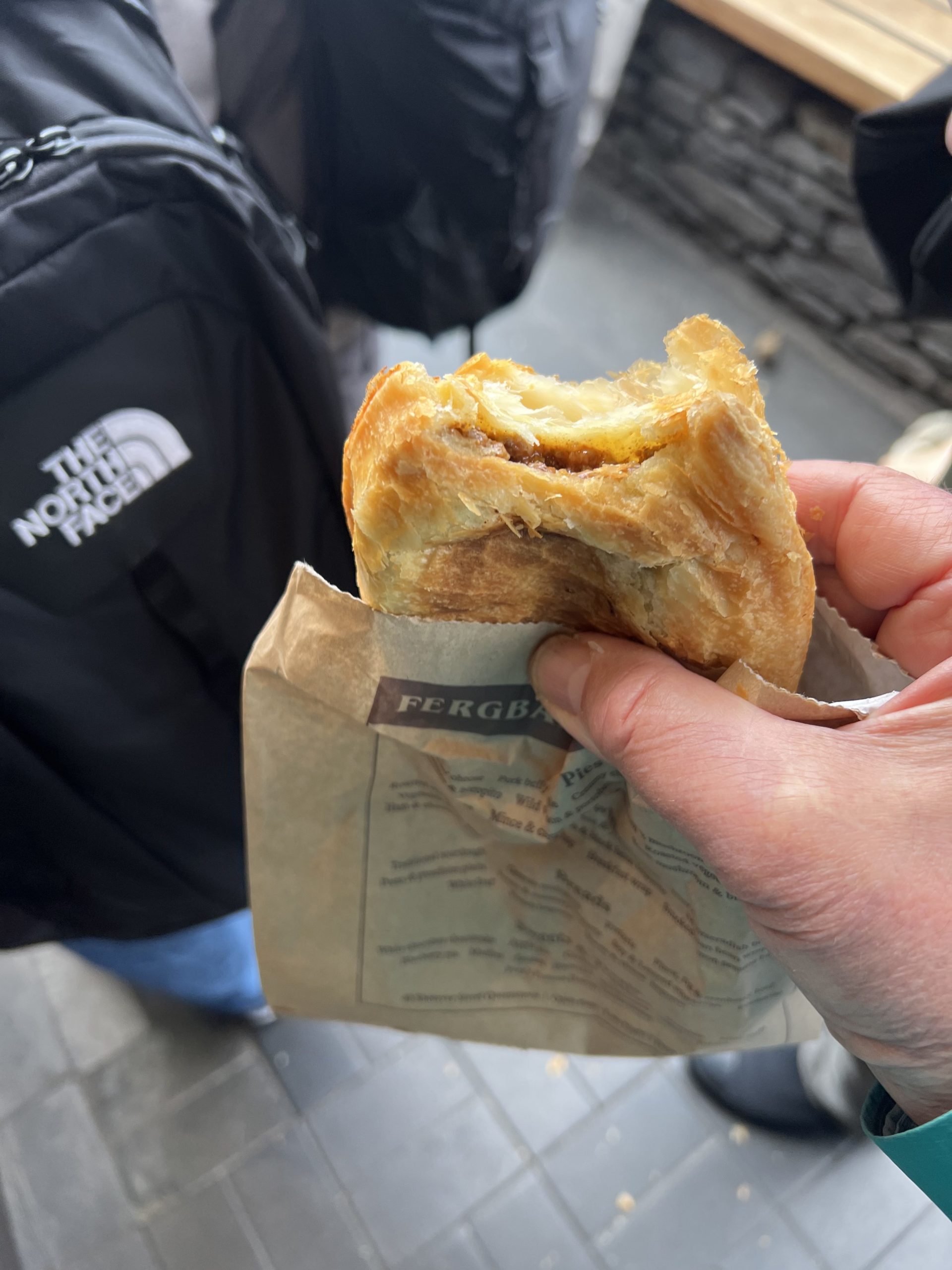
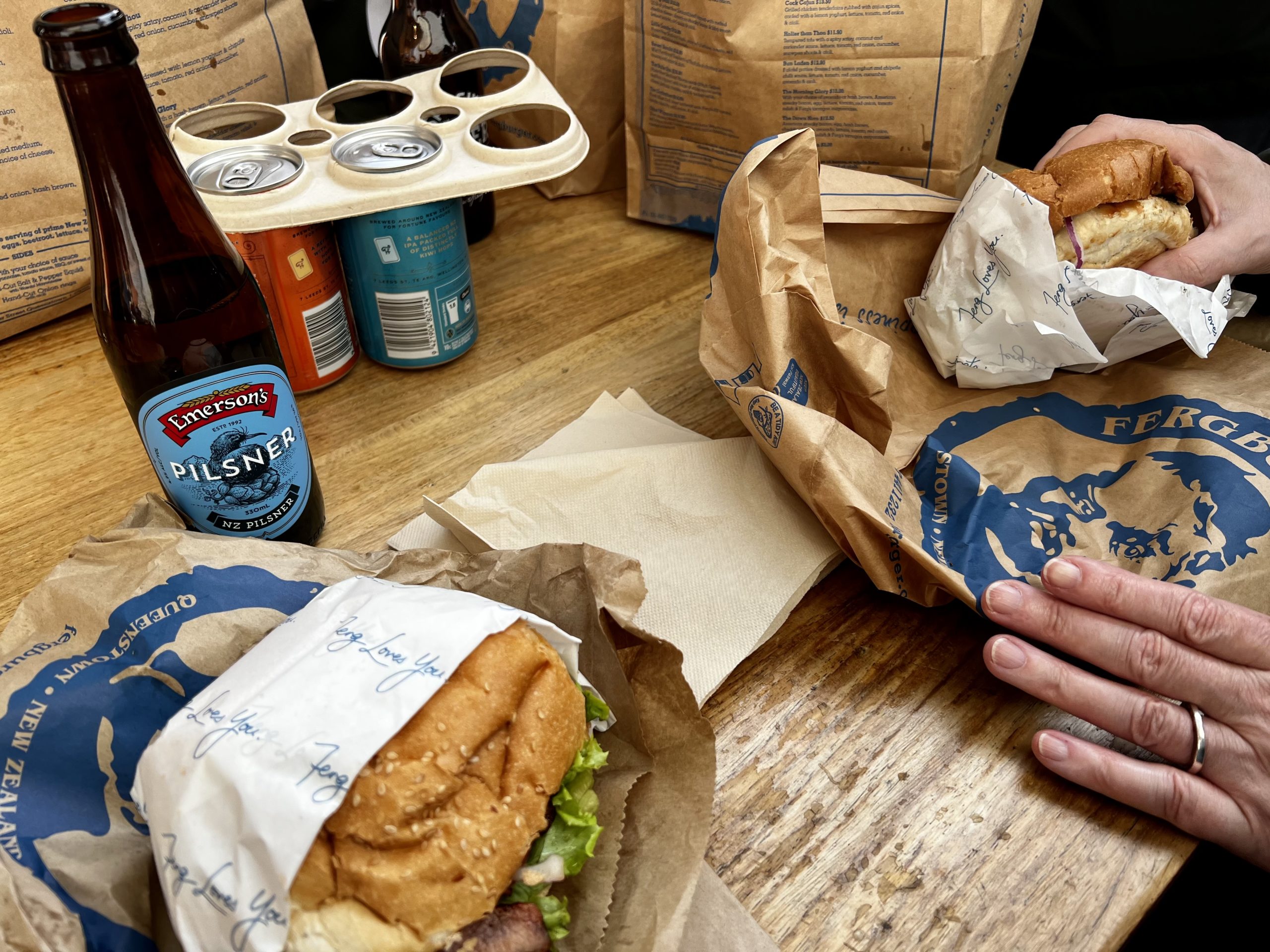
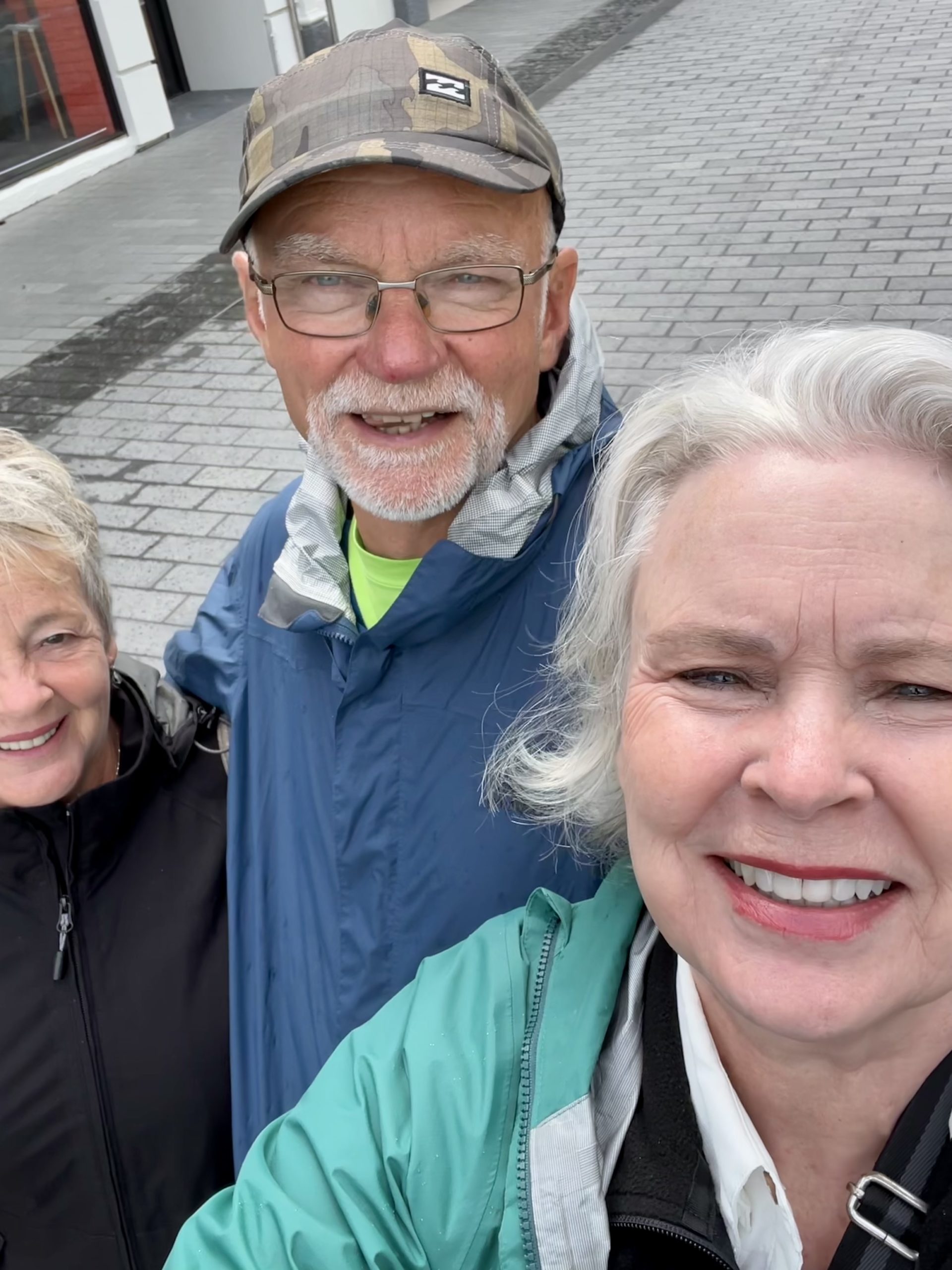
Arrowtown
We made a brief side trip to Arrowtown, near Queenstown, the site of a gold rush in 1862. Miners swarmed in after gold rushes in Australia played out. This tiny spot is sort of Nevada City tinged with Carmel. Very charming. On this visit we were surprised to see high-end shops and expensive cars, including an Austin Martin, along the one-block stretch of retail. Things have changed. Arrowtown had a Chinese settlement nearby that is well documented by the government with preservation of a few homes and good historic signage. Worth a short visit.


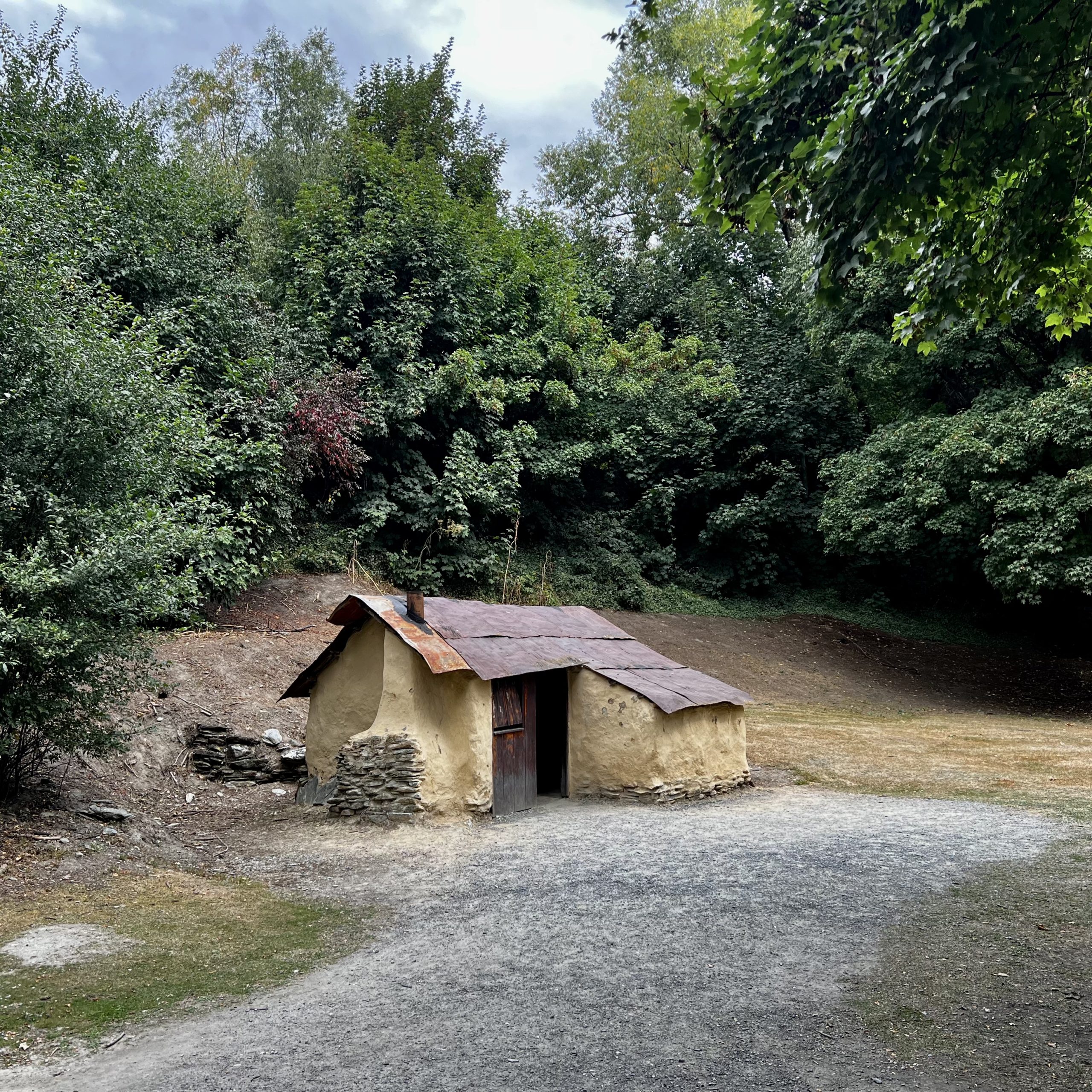
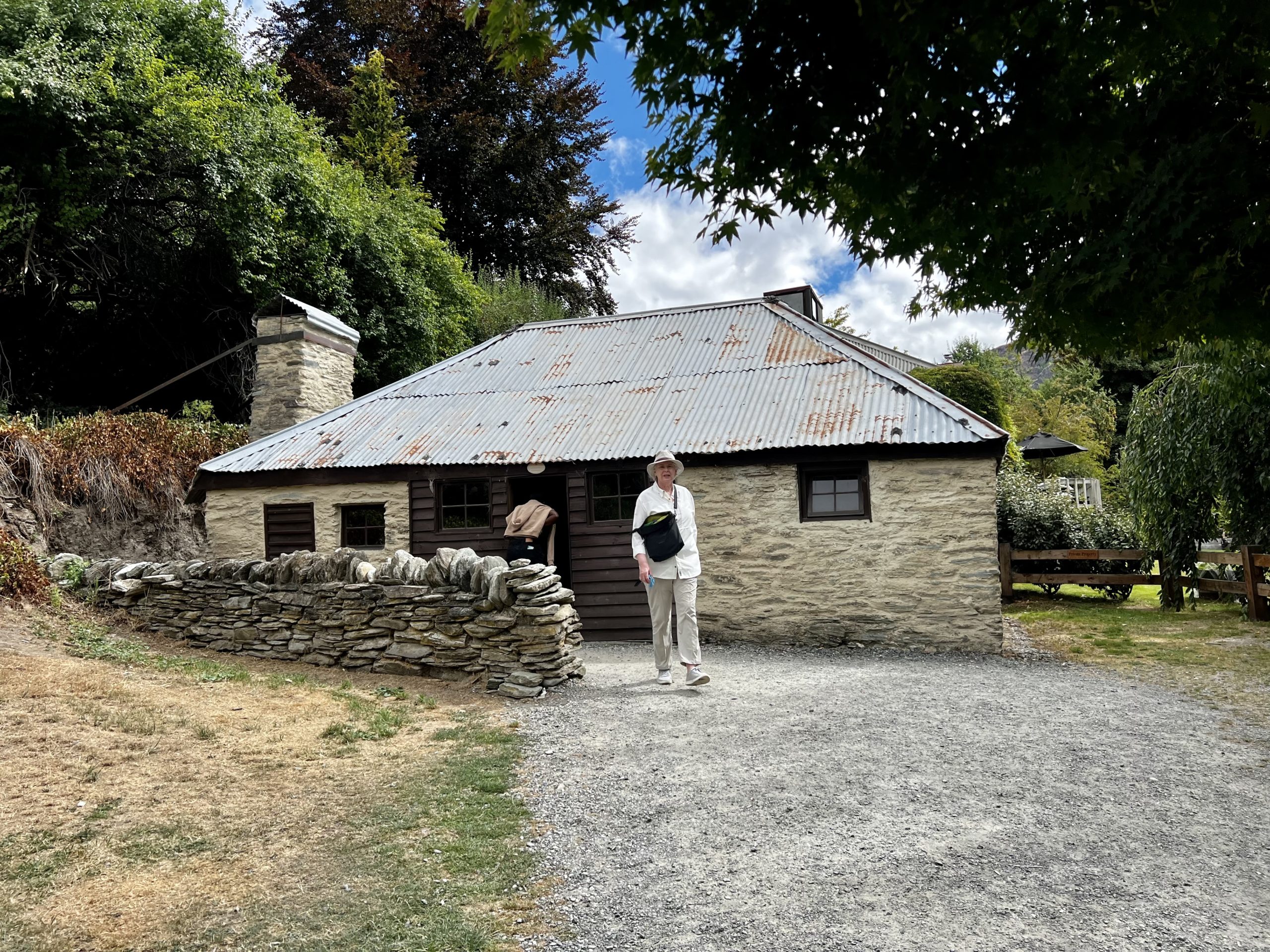
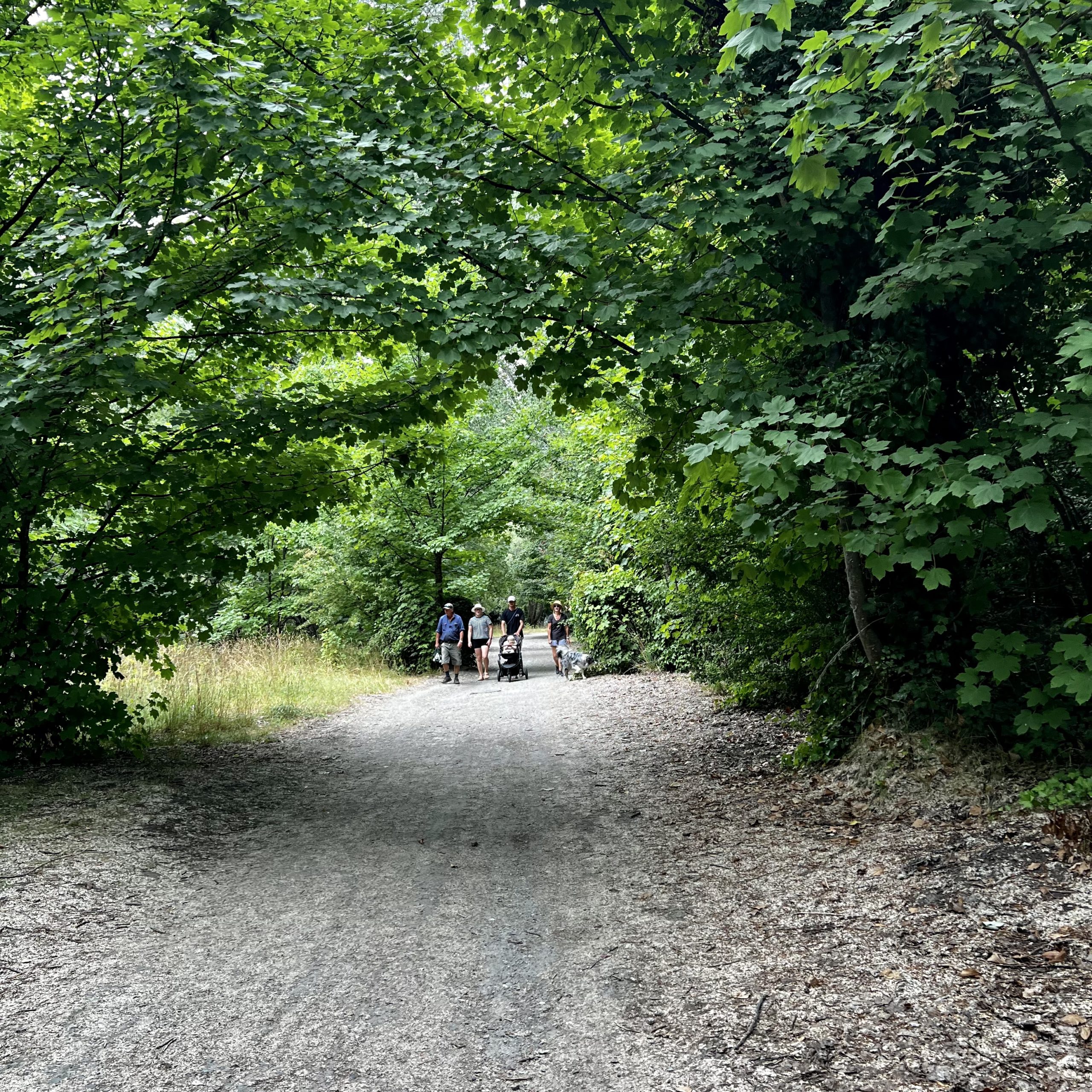
Last-Minute Supplies and Licenses for Fishing
We set out Sunday morning to the Fishing and Hunting store, part of a chain, outside of Queenstown. Wow! What a great place. (Said Robert.) Bought a few items, like another duffle bag, along with fishing licenses for all of New Zealand. Fishing starts Monday with a guide for three days. We will report on fishing in a separate post, hopefully filled with pictures of Bonnie and Robert holding many a fish!
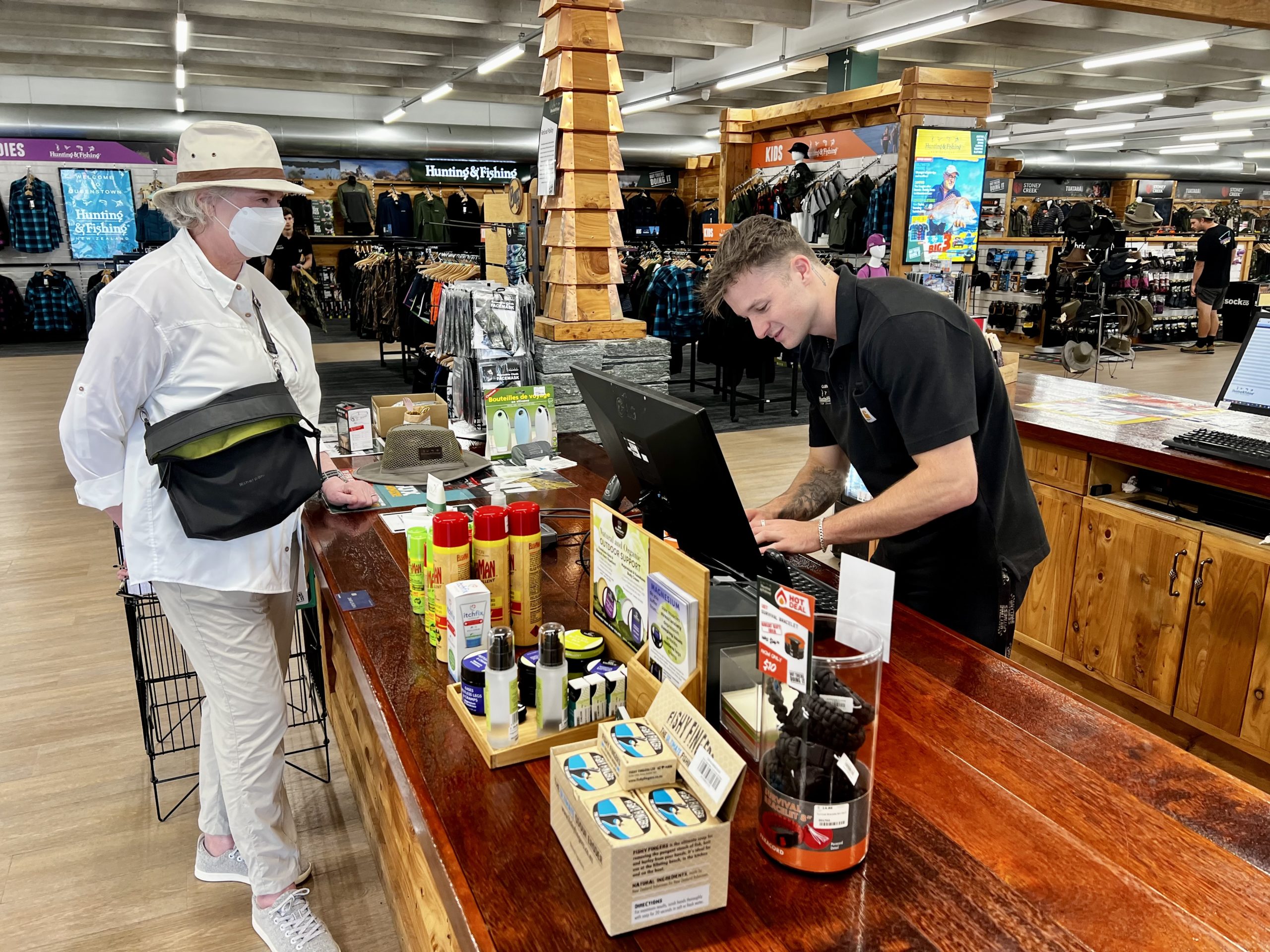
Te Anau
23 – 27 February 2023
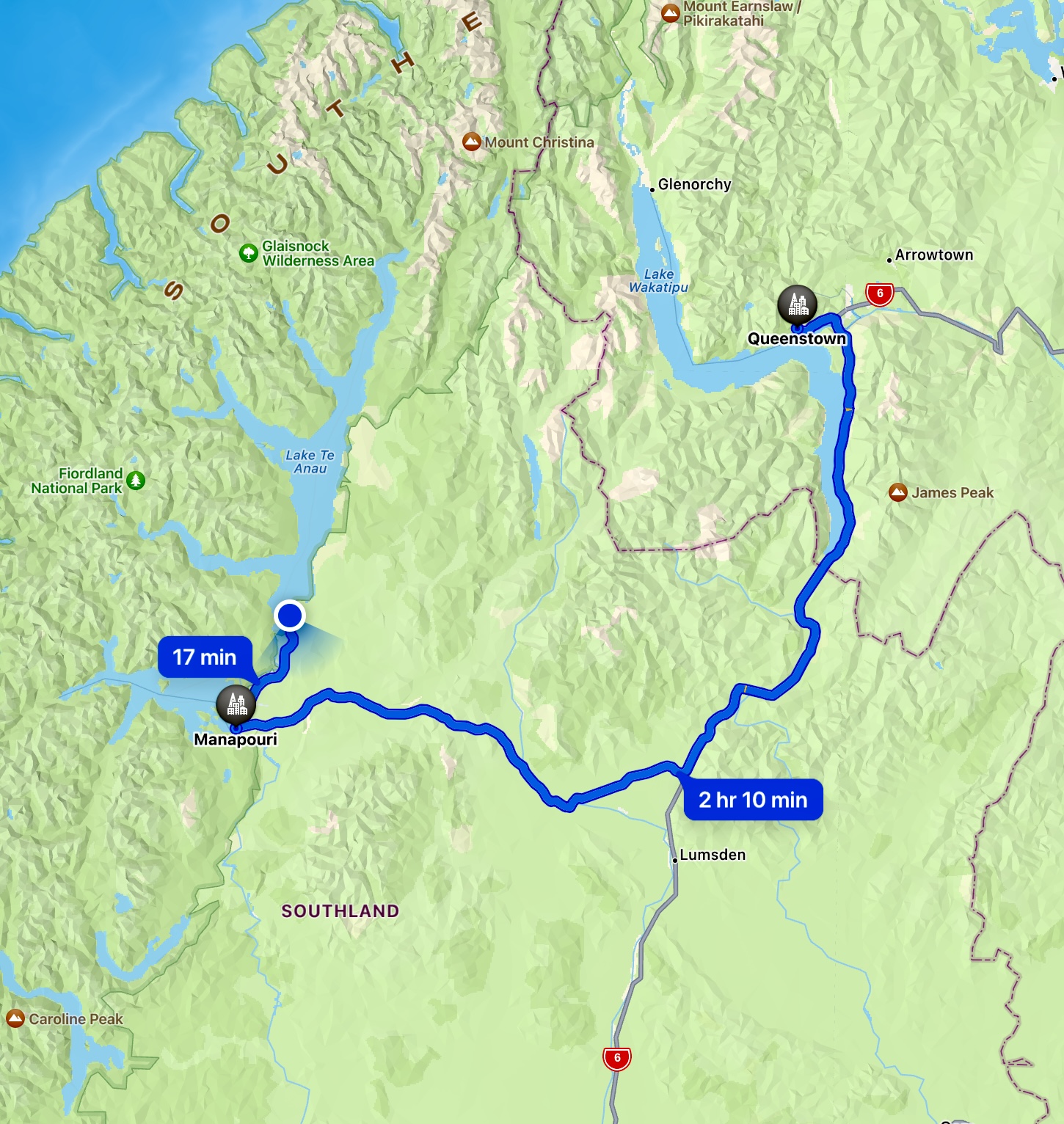
On the Way to Te Anau

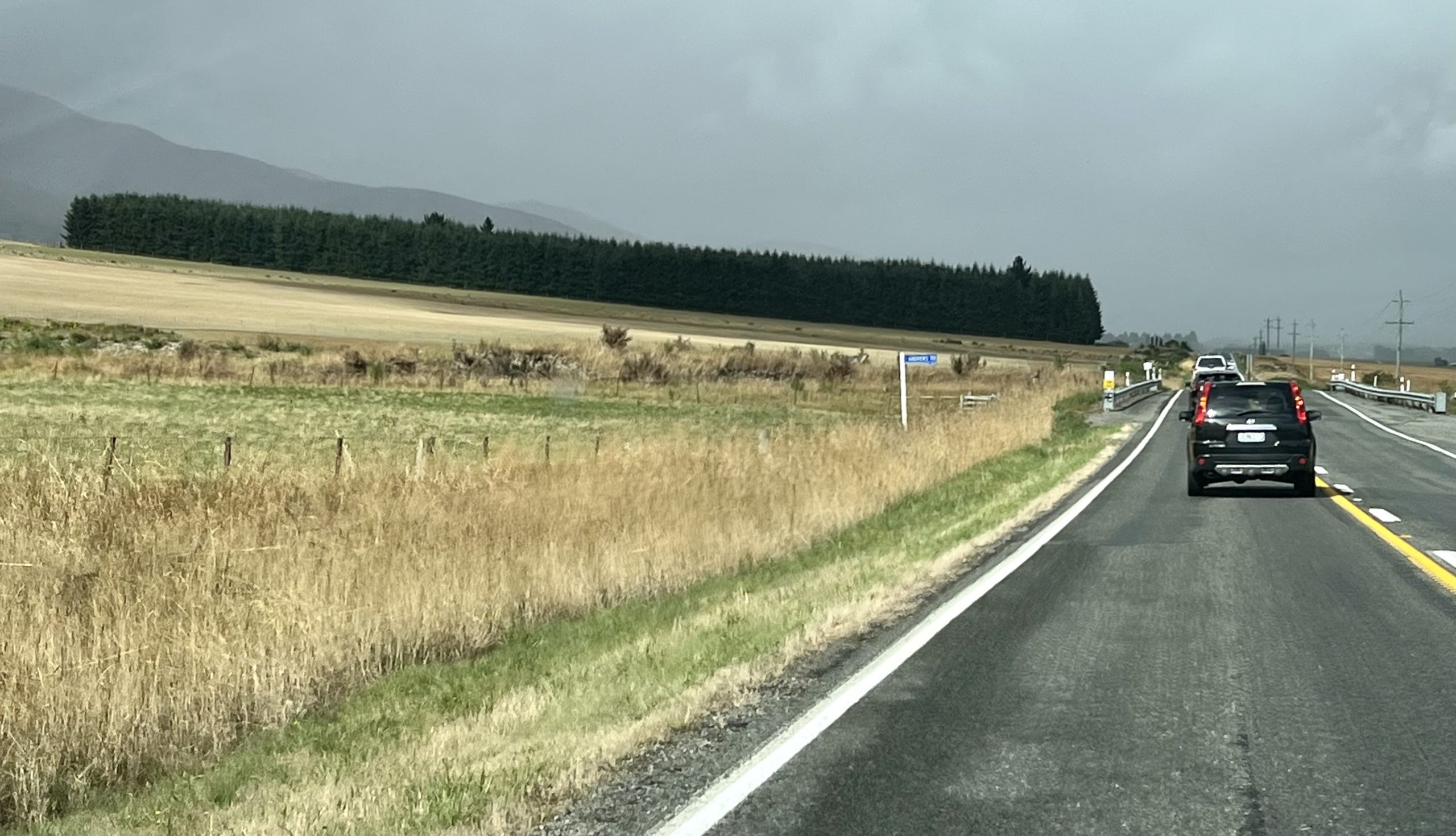
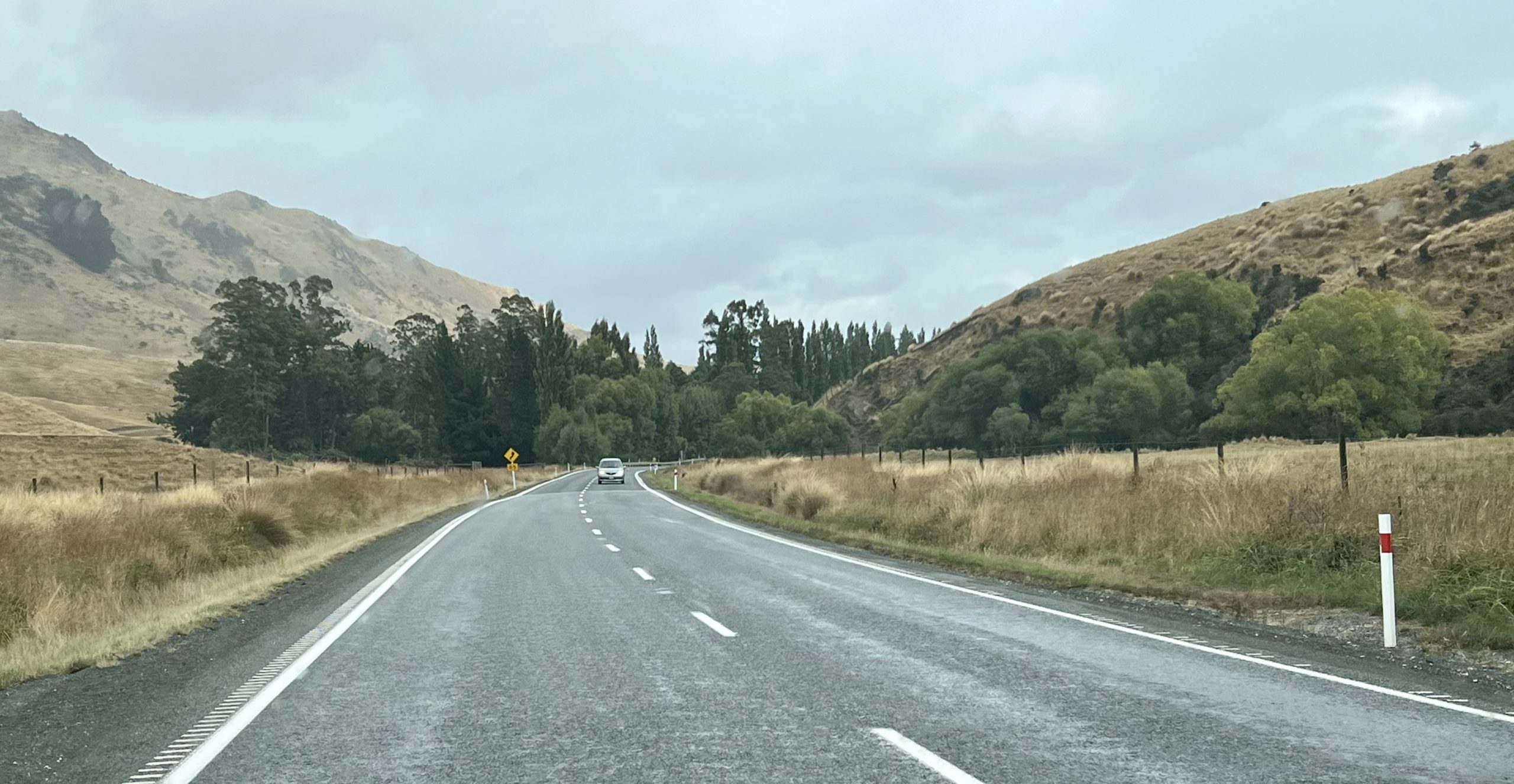
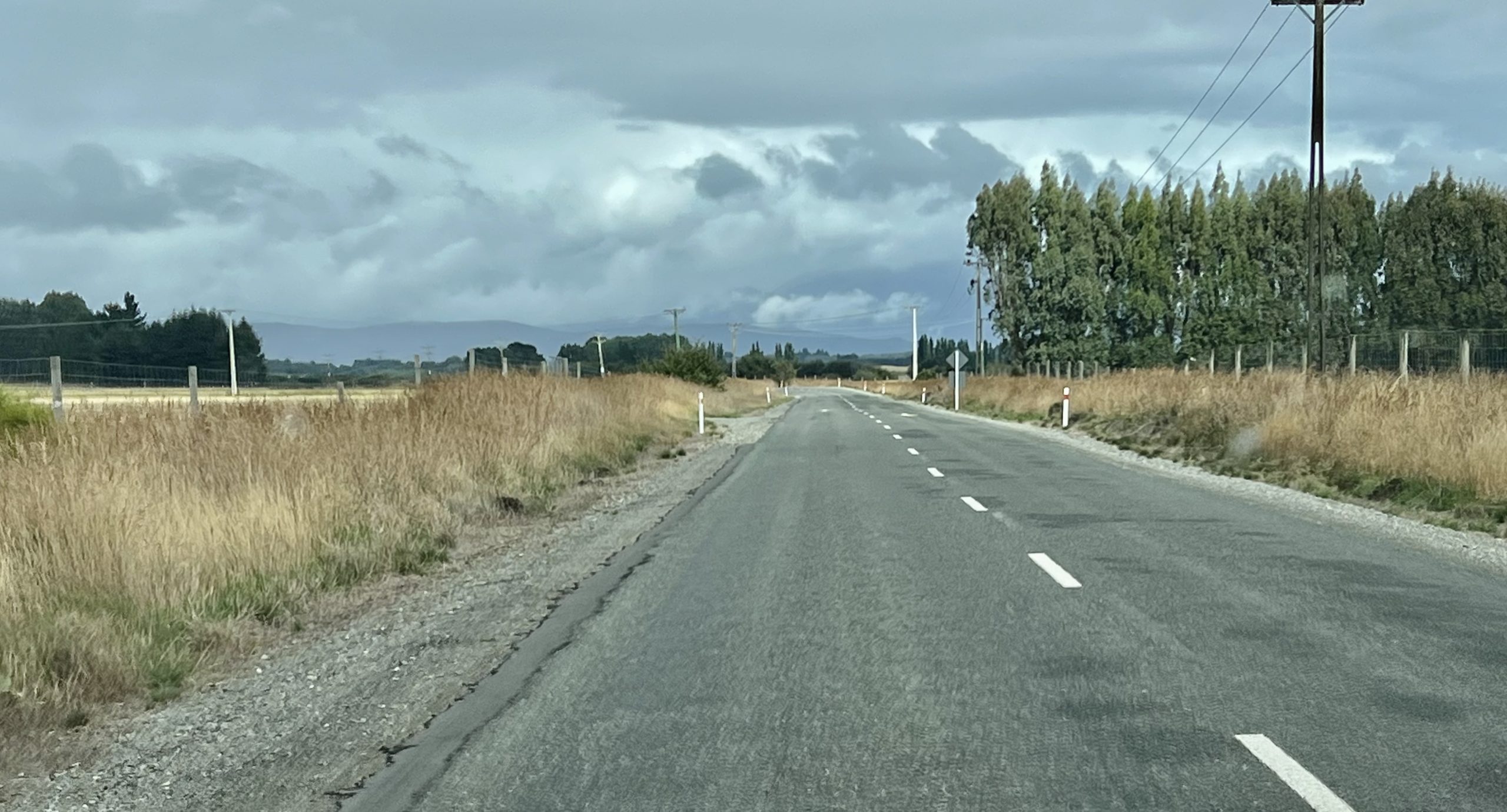

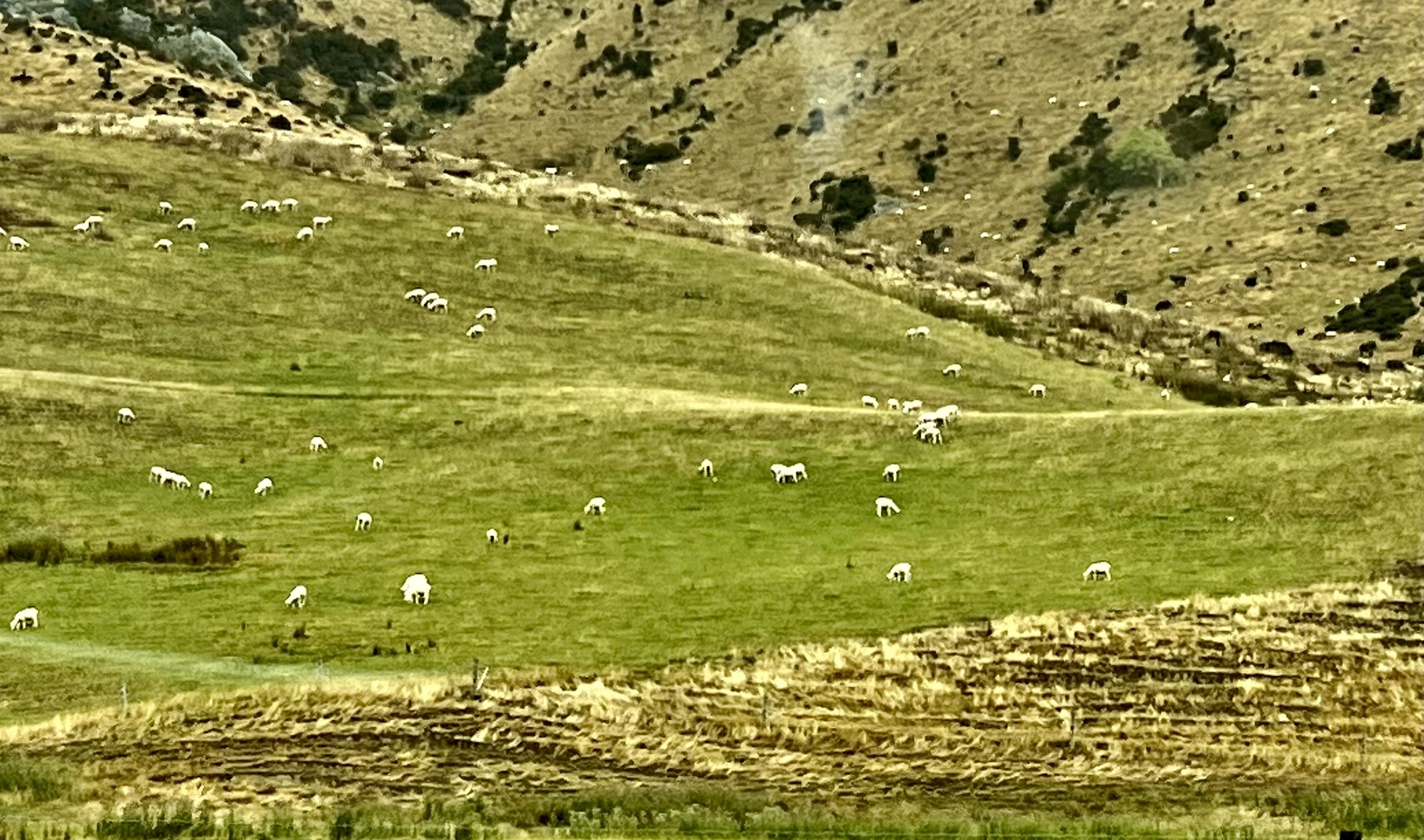
Accommodations
The Bella Vista chain has twenty-seven motels in New Zealand. Kind of a Holiday Inn with a slightly homier New Zealand appeal. They all look alike. Agatha, the chirpy manager in the small town of Te Anau, population 3,000 and the gateway to New Zealand’s Fiordland, said they are fully booked and are now taking reservations for February 2025!
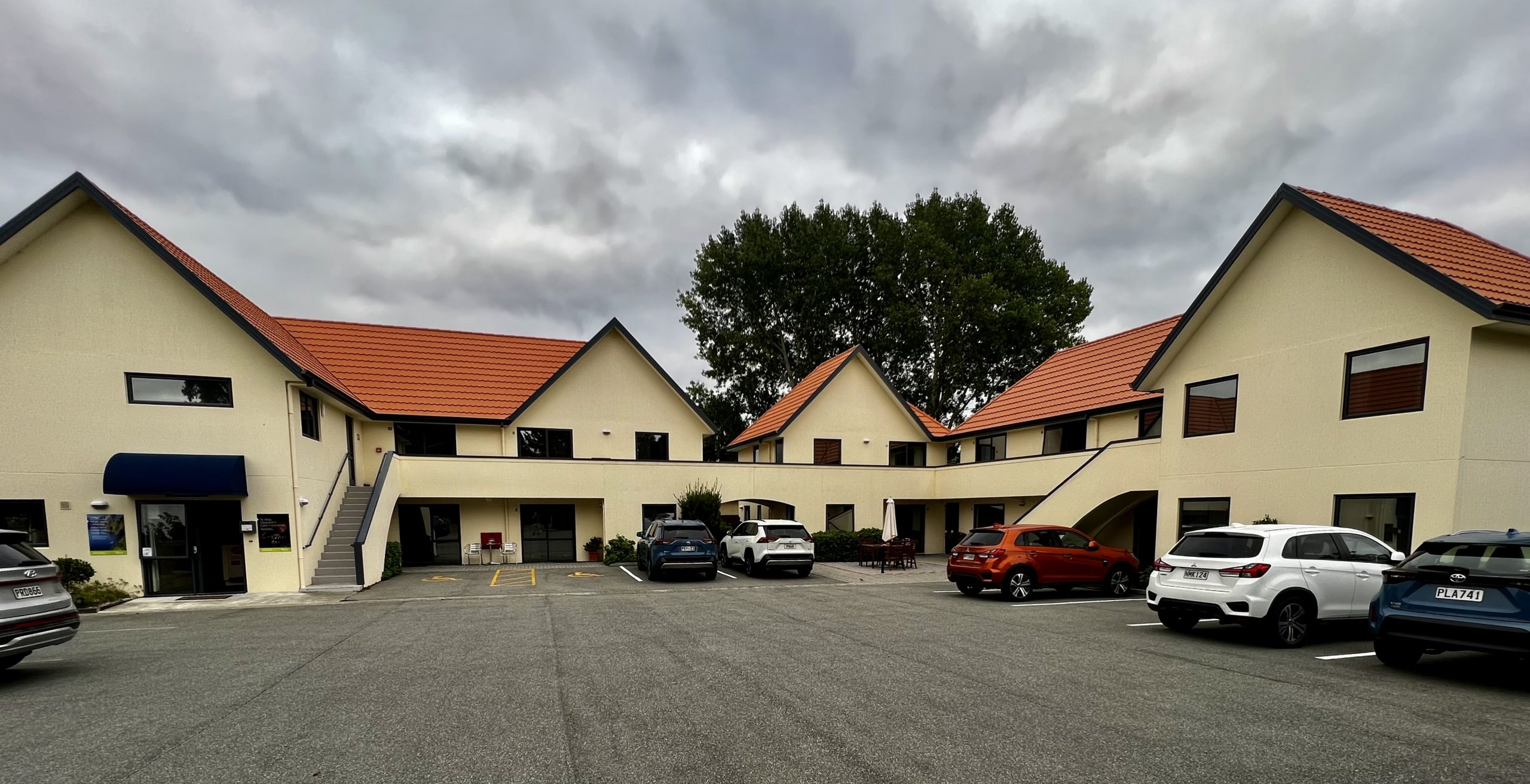
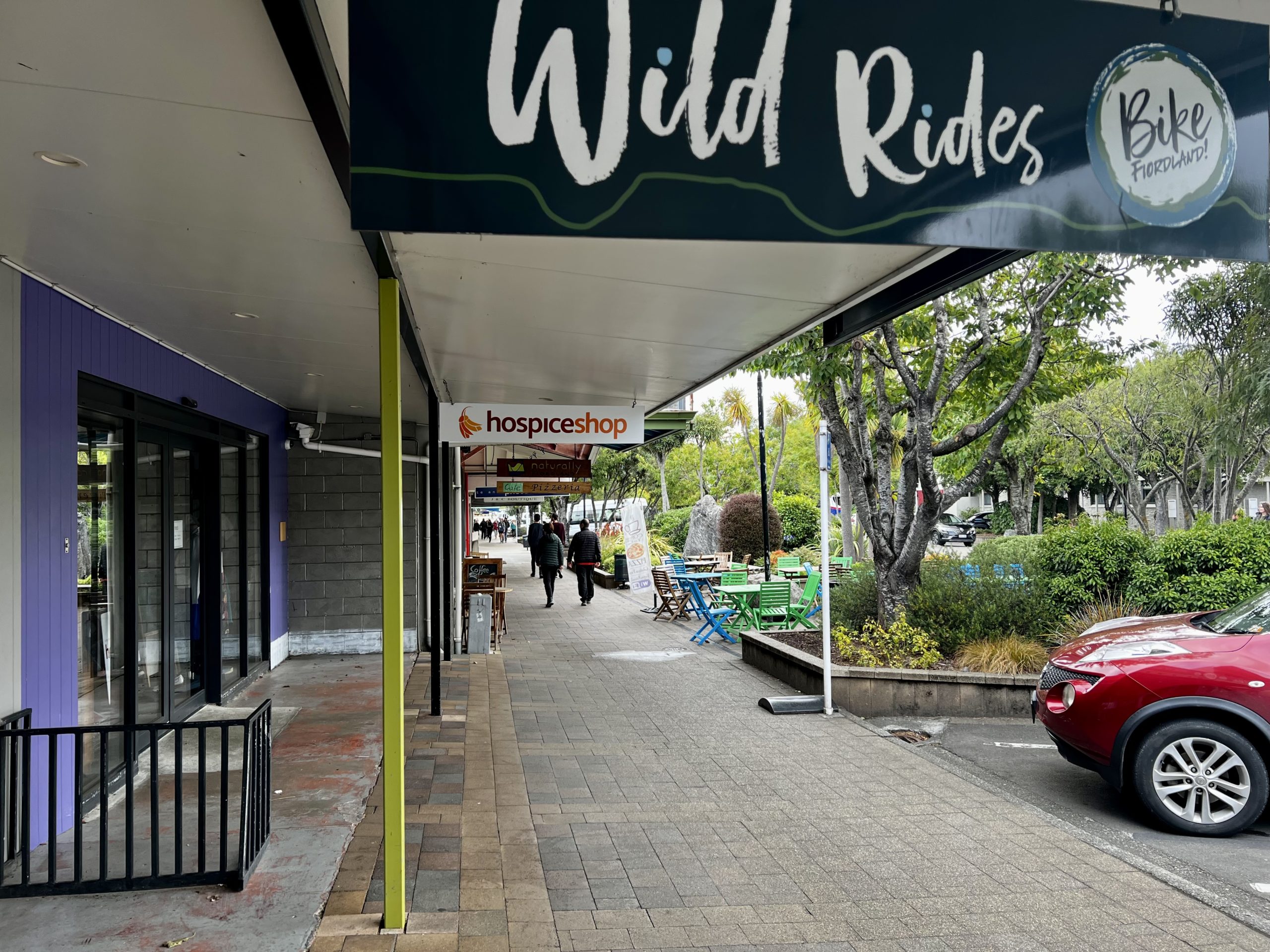
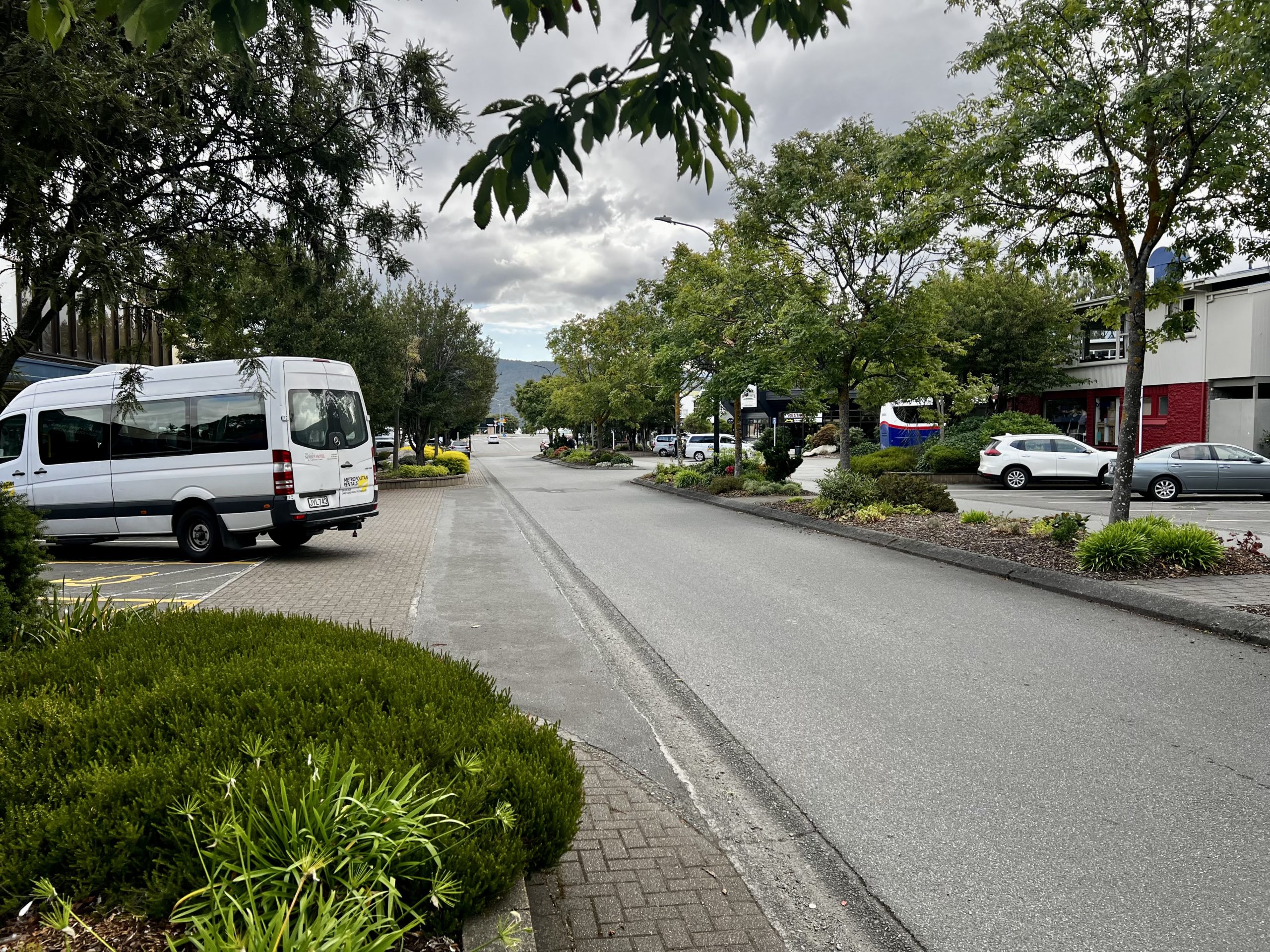
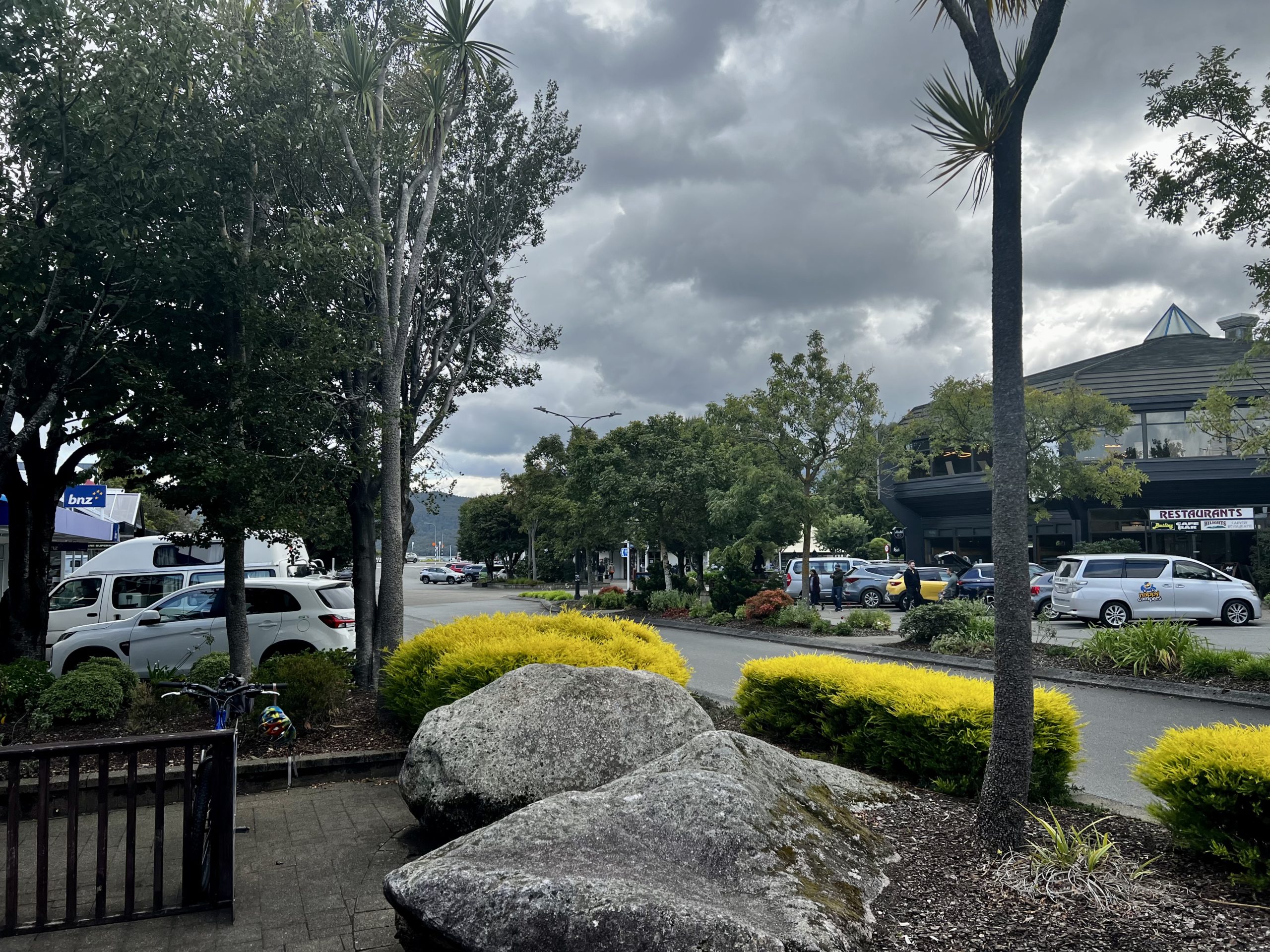
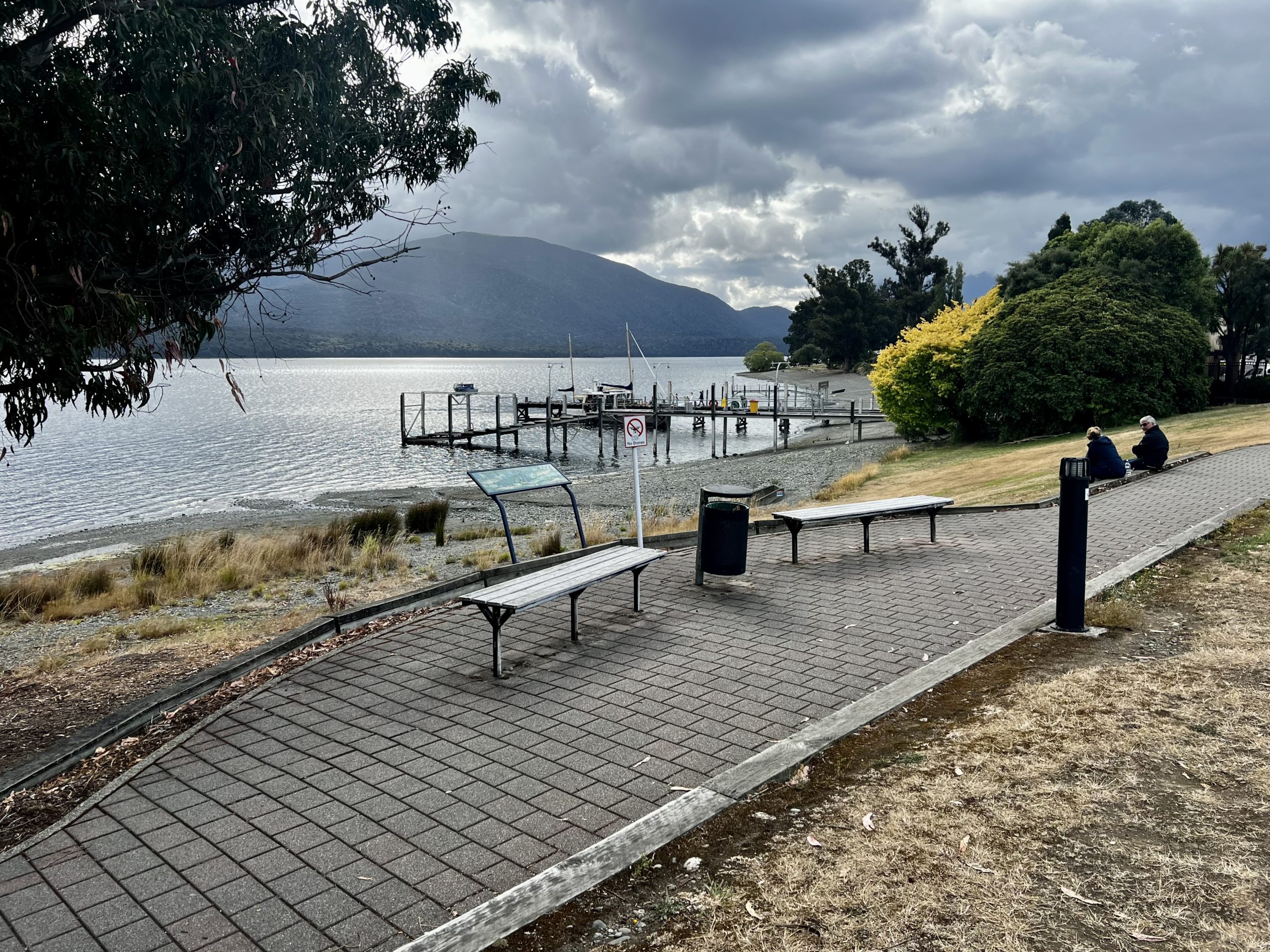
Milford Sound
Southwest New Zealand is famous for scenic fiords. In 2004 we took a van-and-boat tour of Doubtful Sound. This time we chose Milford Sound, about eighty minutes north of Te Anau on the single road built to get you there. The well-organized tour company RealNZ picked us up at our motel in a van and off we went, making frequent stops along the way to see a view, have coffee, take a hike, eat a scone. The driver/tour guide was a retired police officer from the North Island. His excellent commentary, delivered with leisurely confidence, covered landscape, history, and current conservation policies. The drive takes you through a varied landscape, including many Lord of the Rings sites, and eventually leads into New Zealand’s first national park. You arrive at a dock with tour boats that take you on a two-hour cruise of the sound. The mouth of the sound empties into the tempestuous junction of the Tasman Sea and the Southern Ocean called the Roaring Forties. On the boat ride in the fiord we saw waterfalls, a very visible seismic seam in the mountain, and even dolphins. Highly recommended.
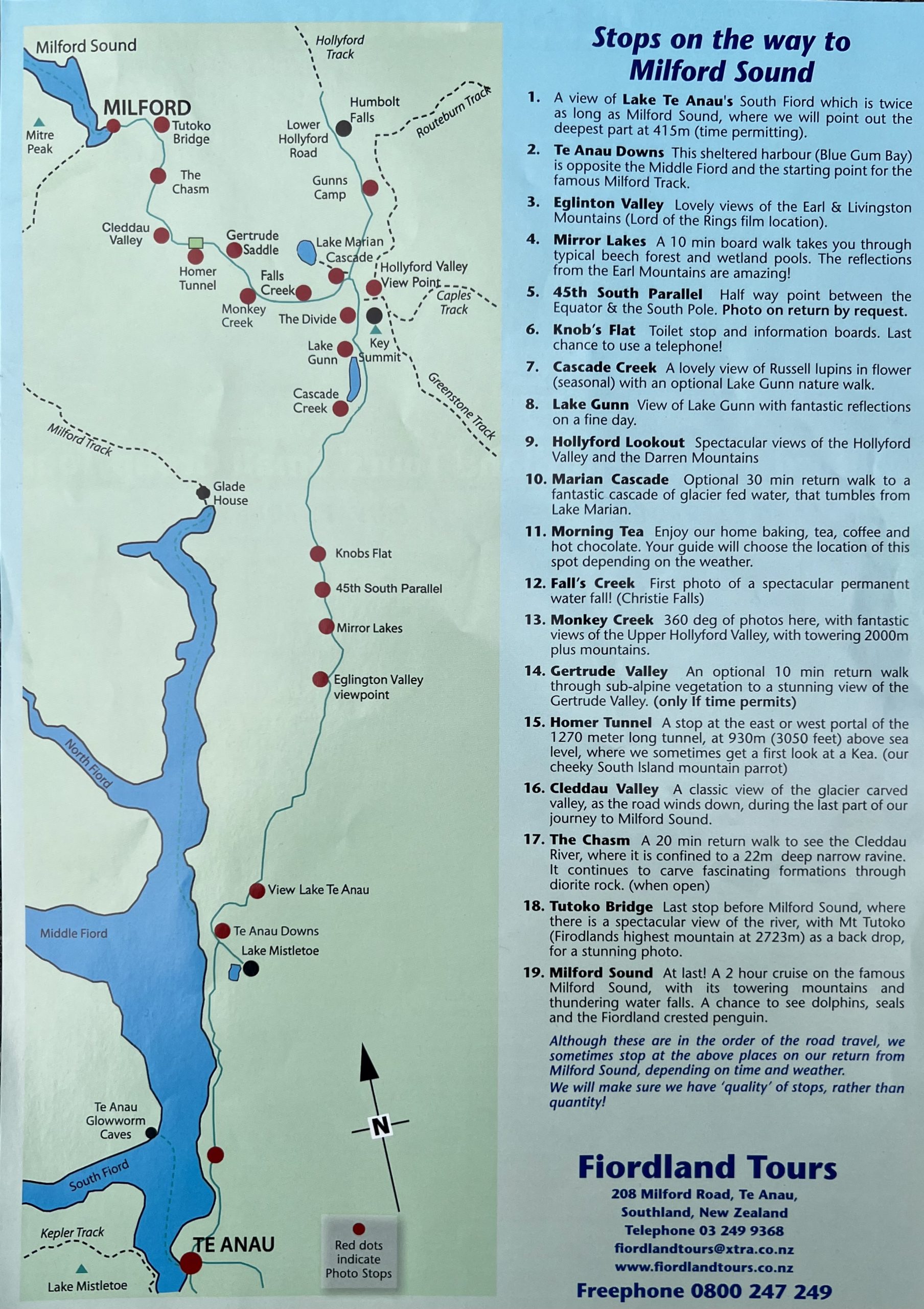
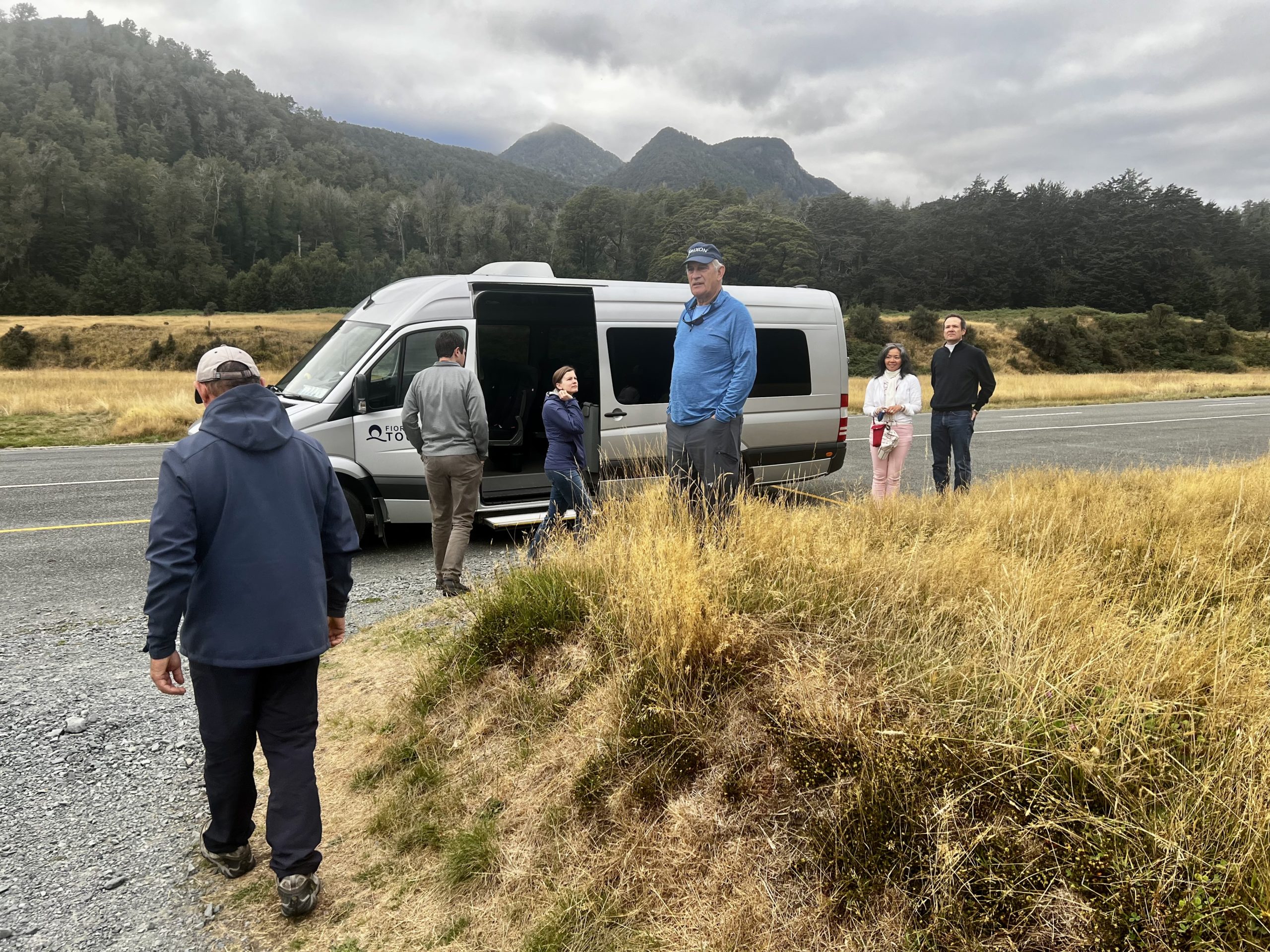
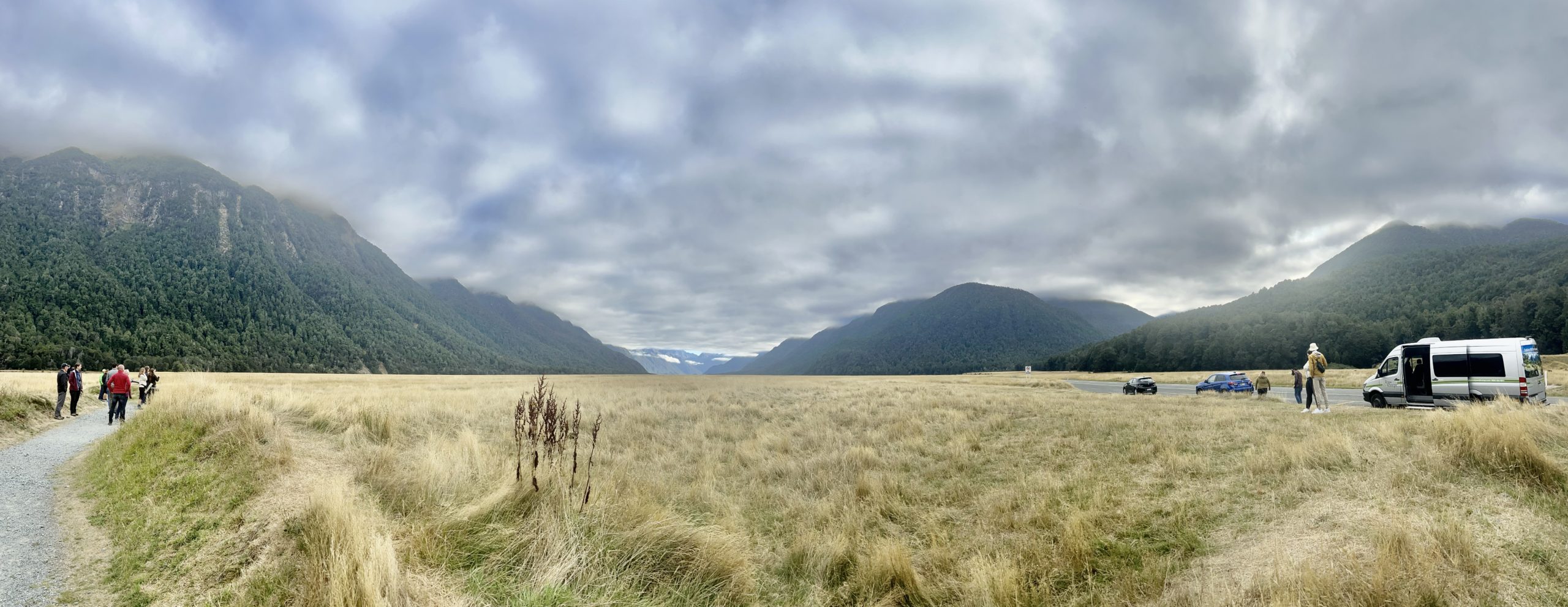
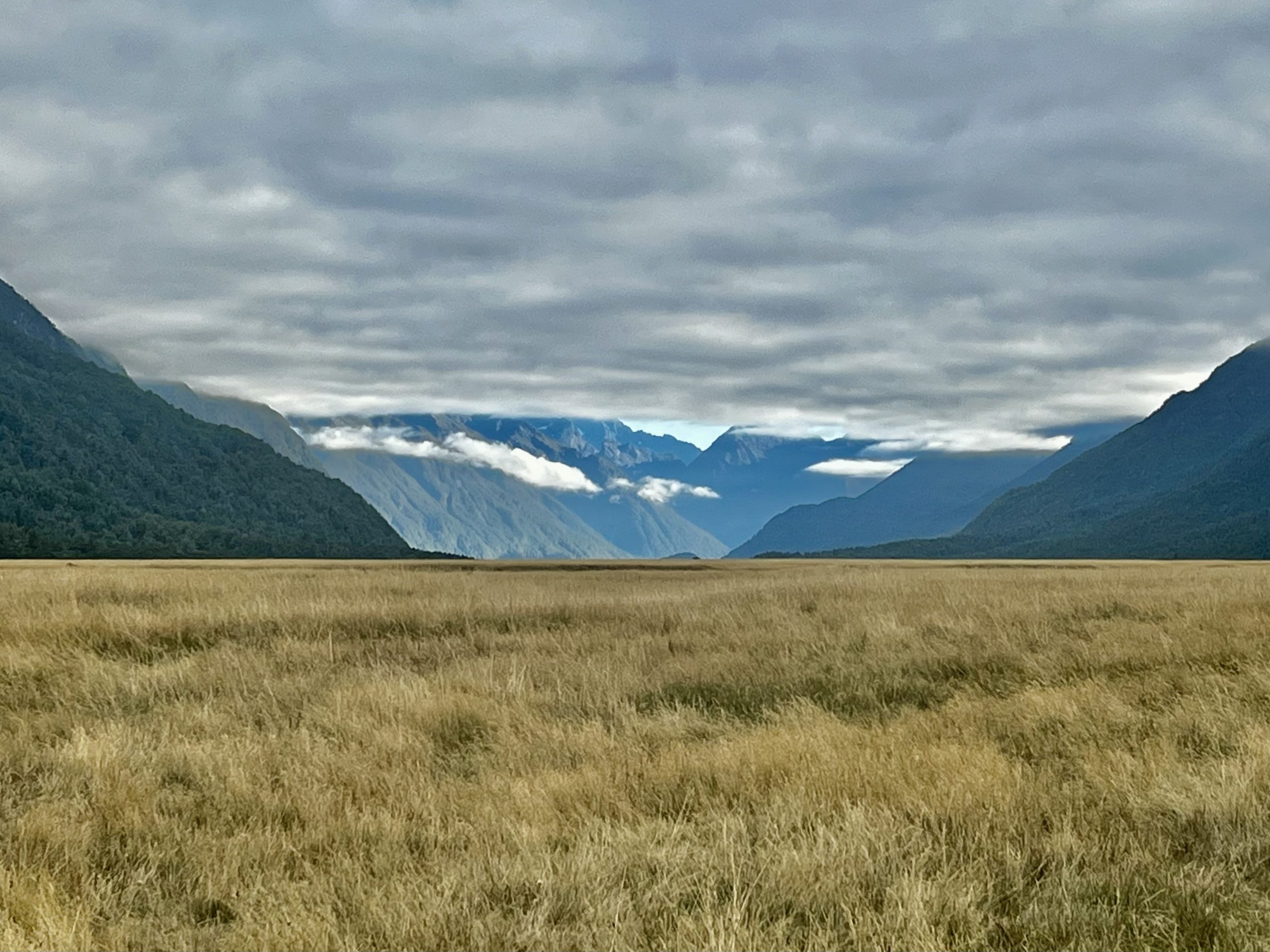
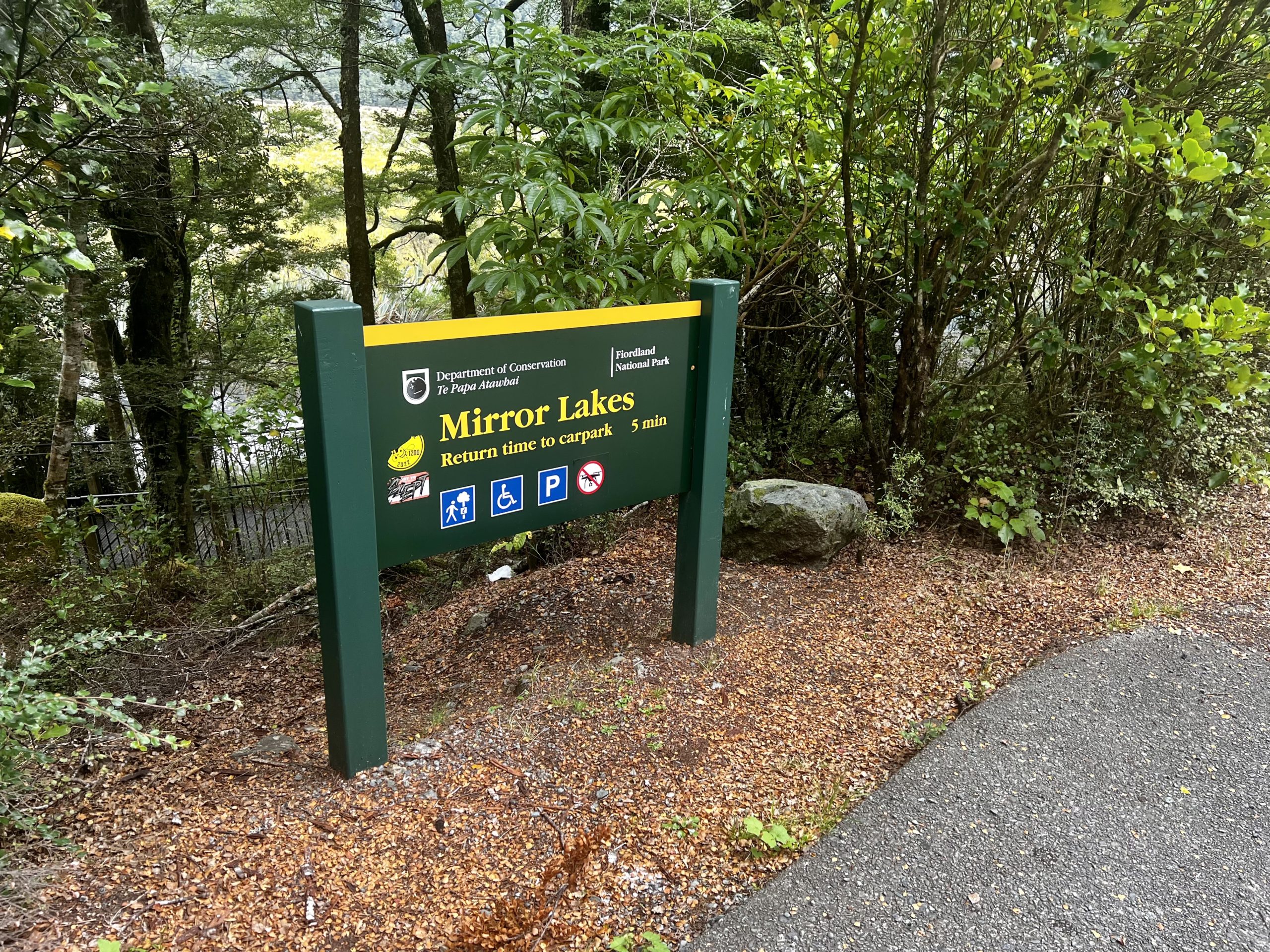
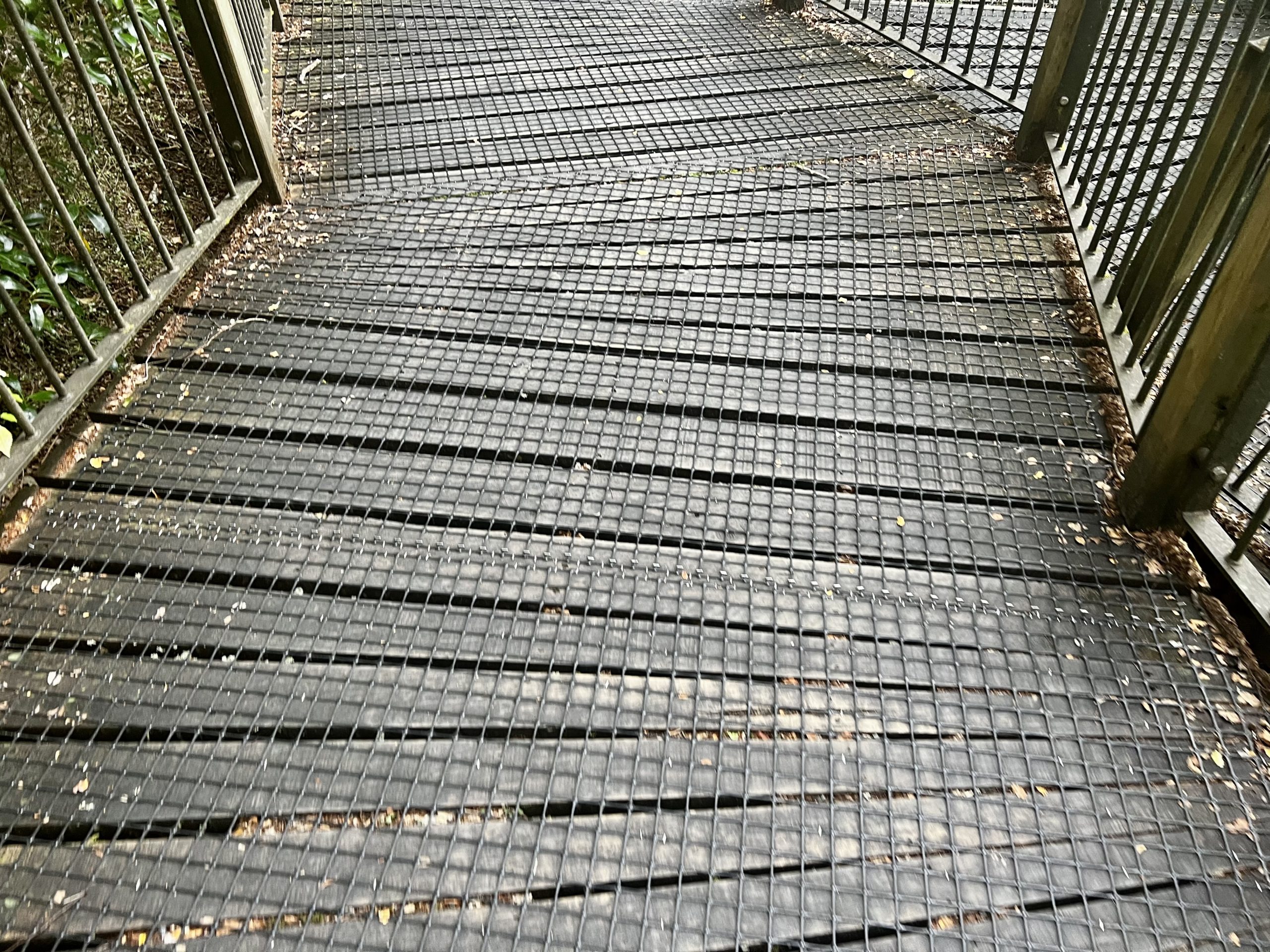
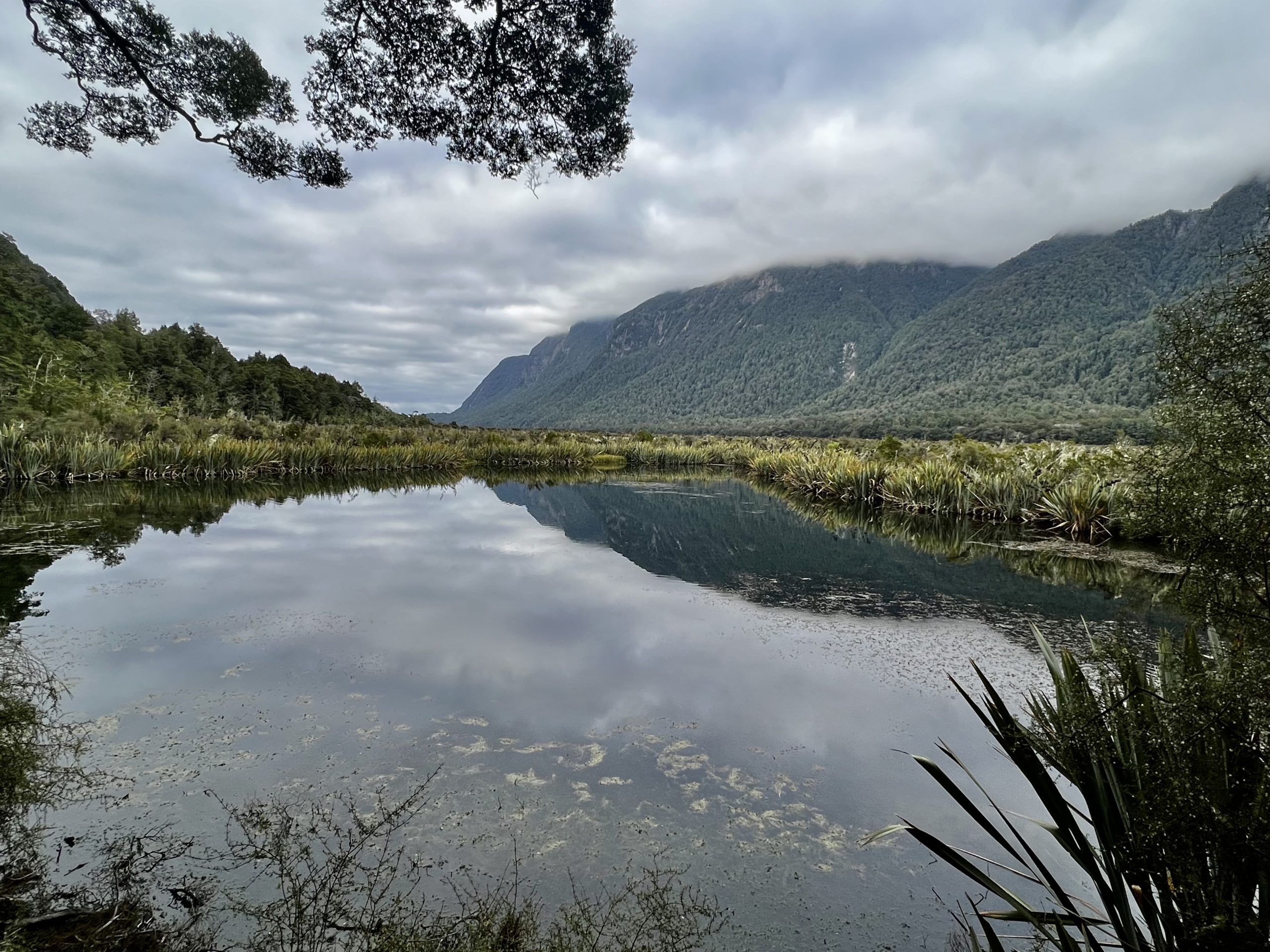
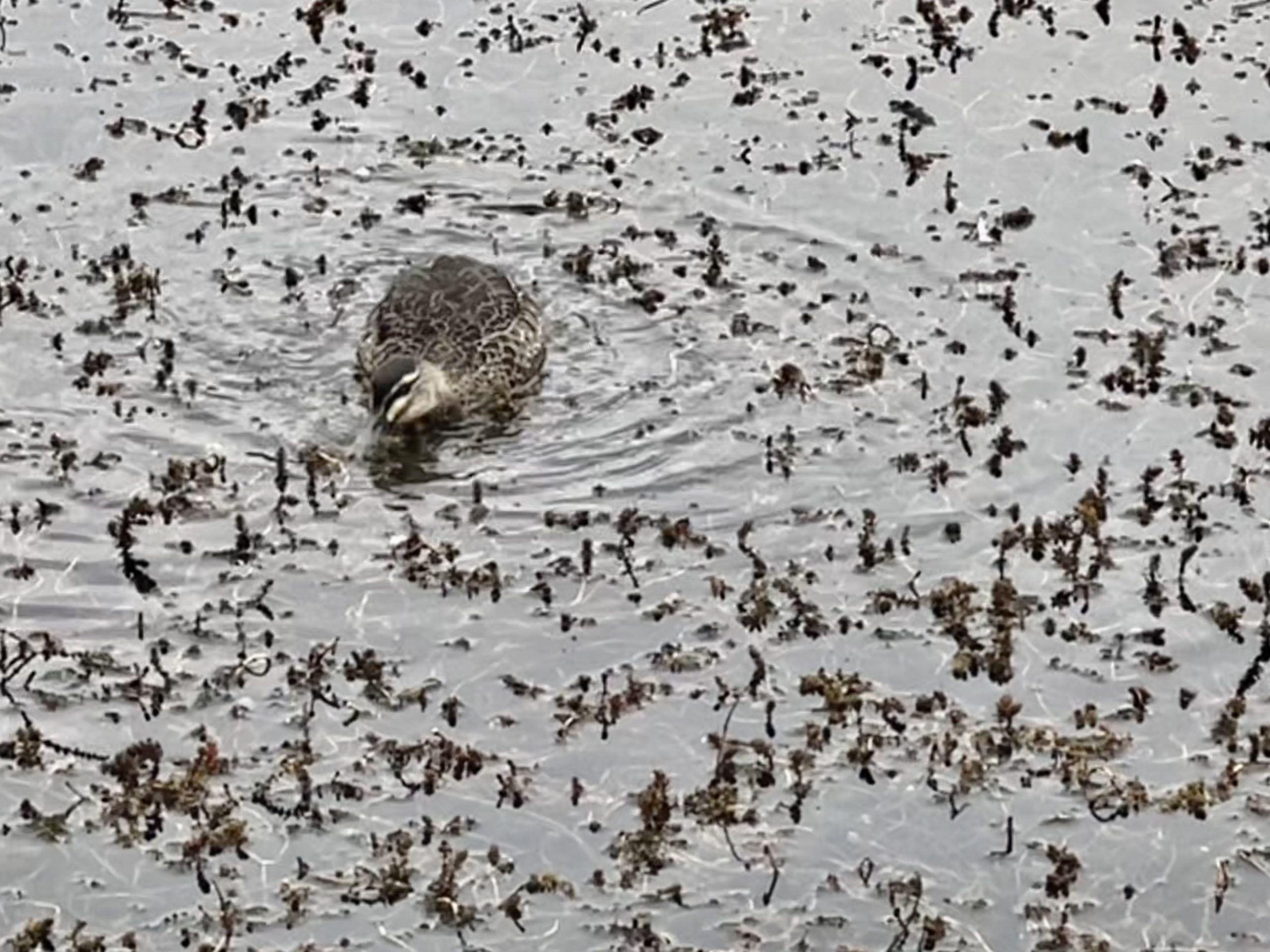
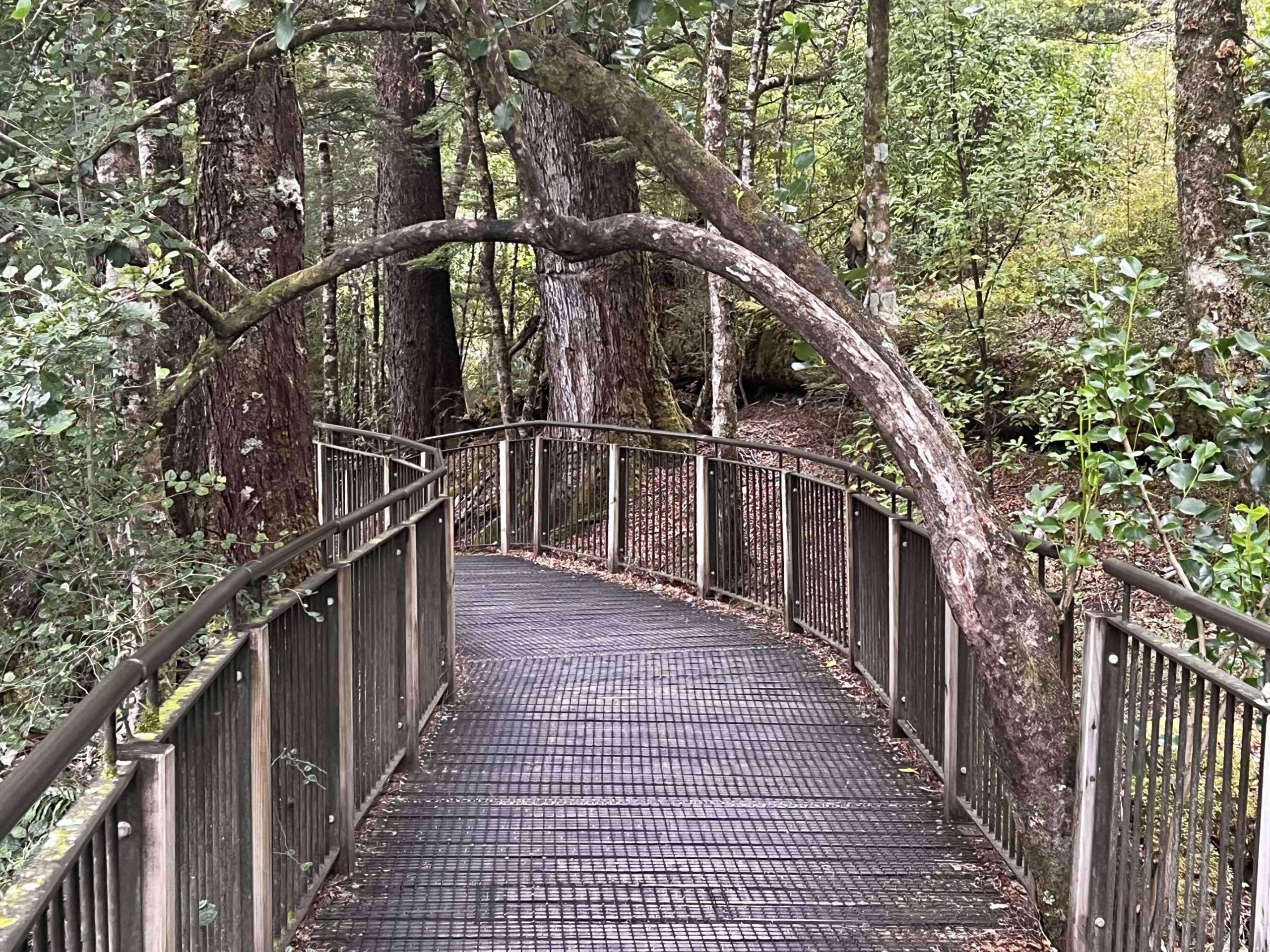
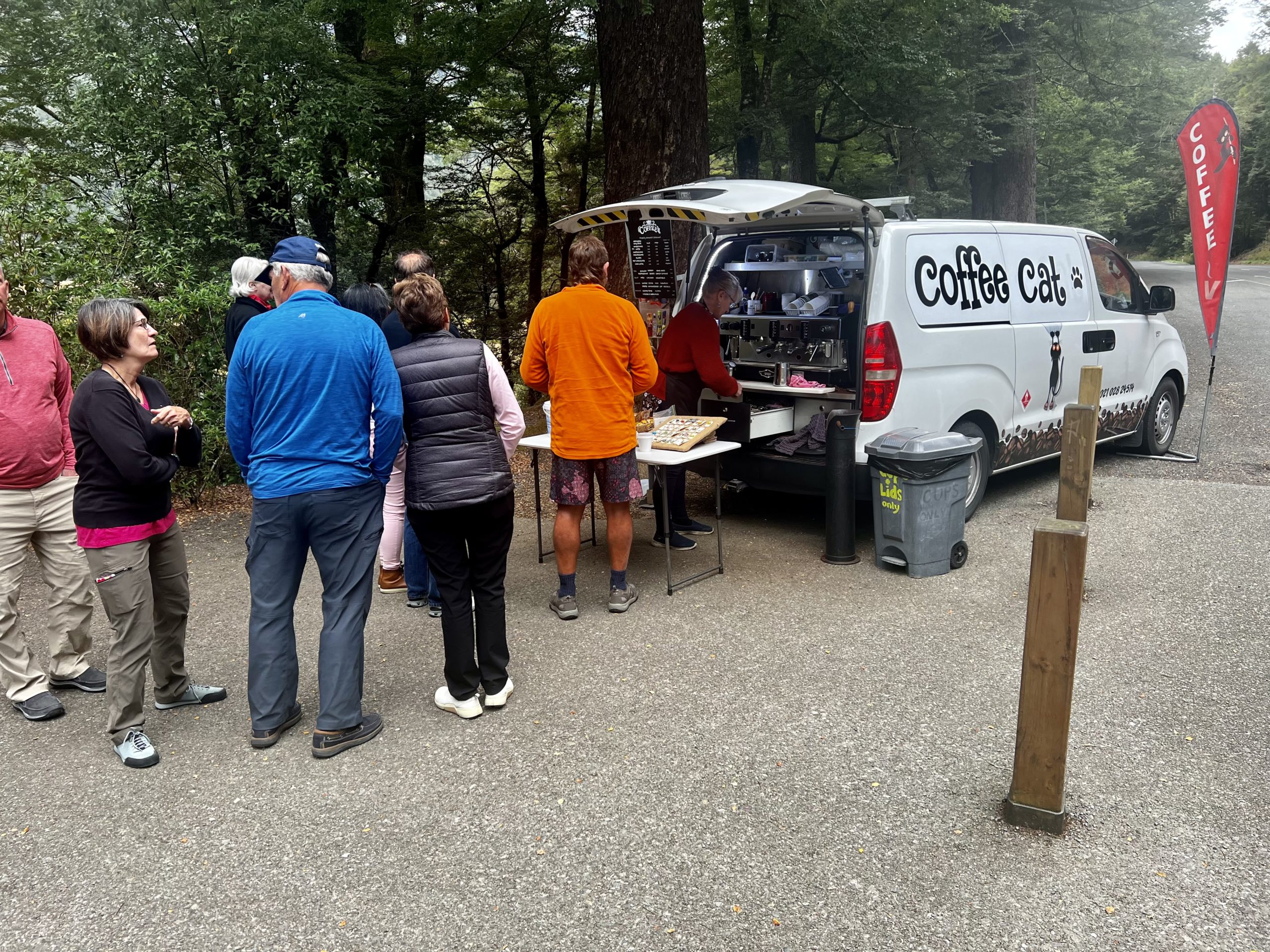
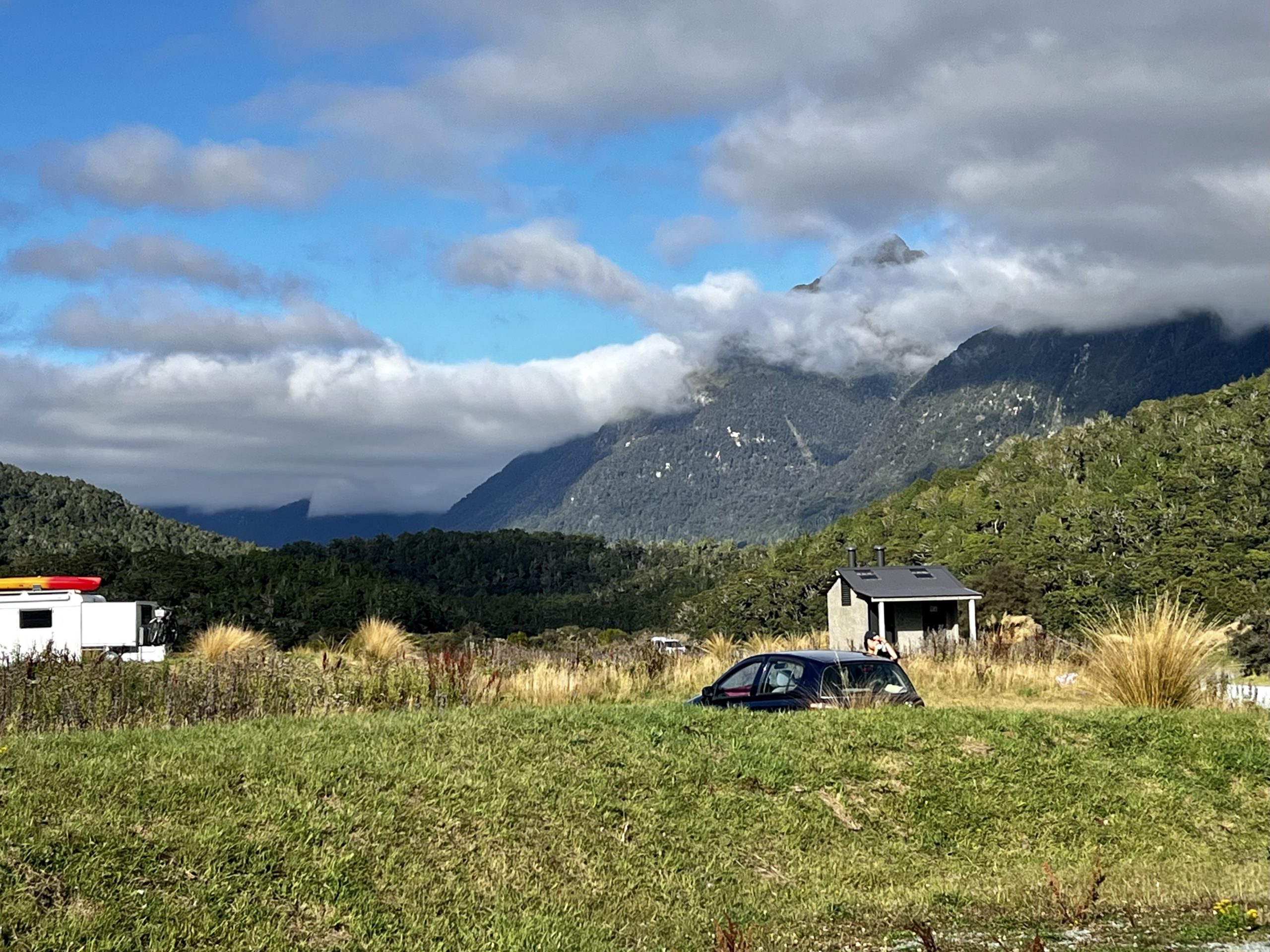

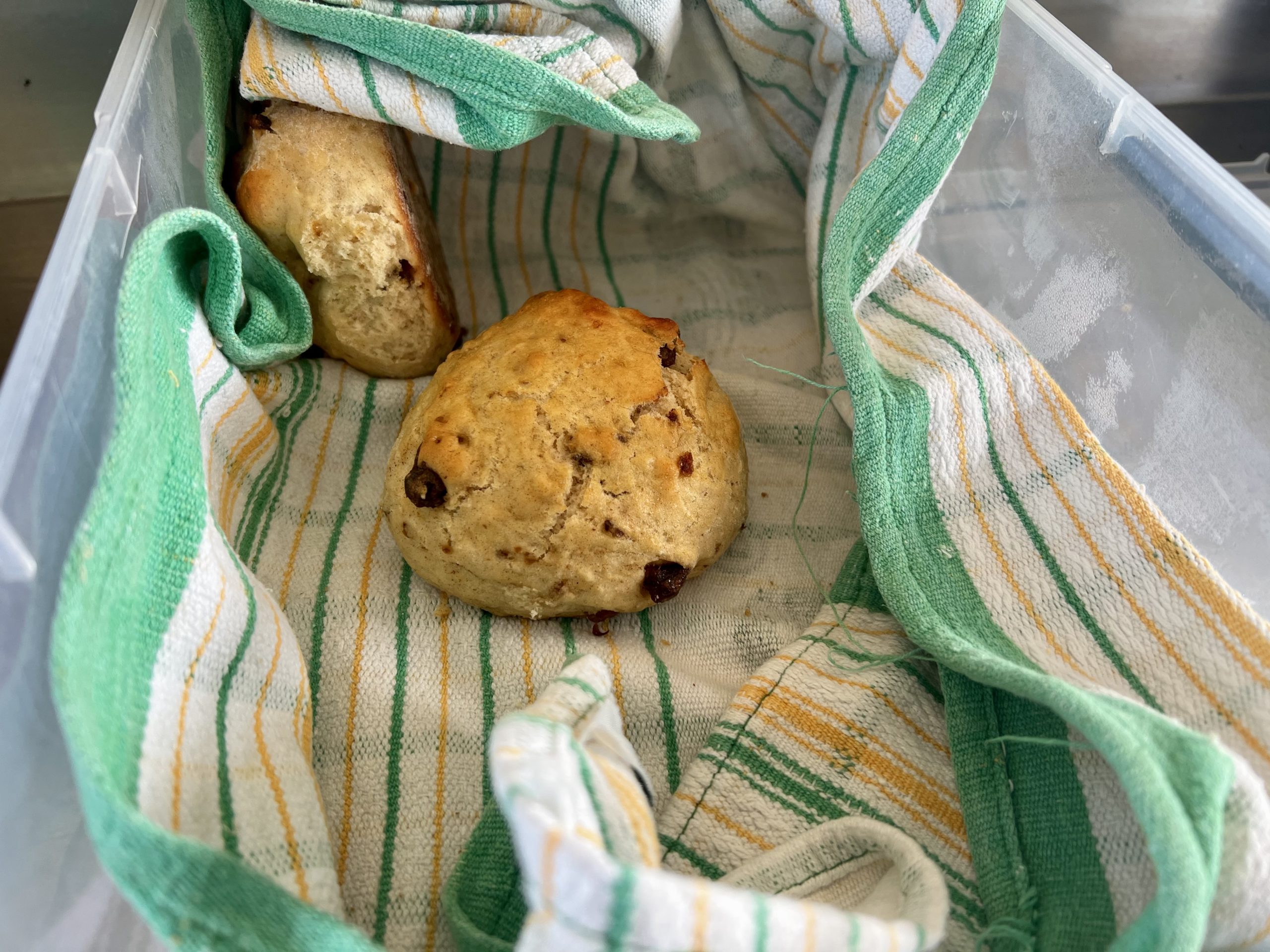
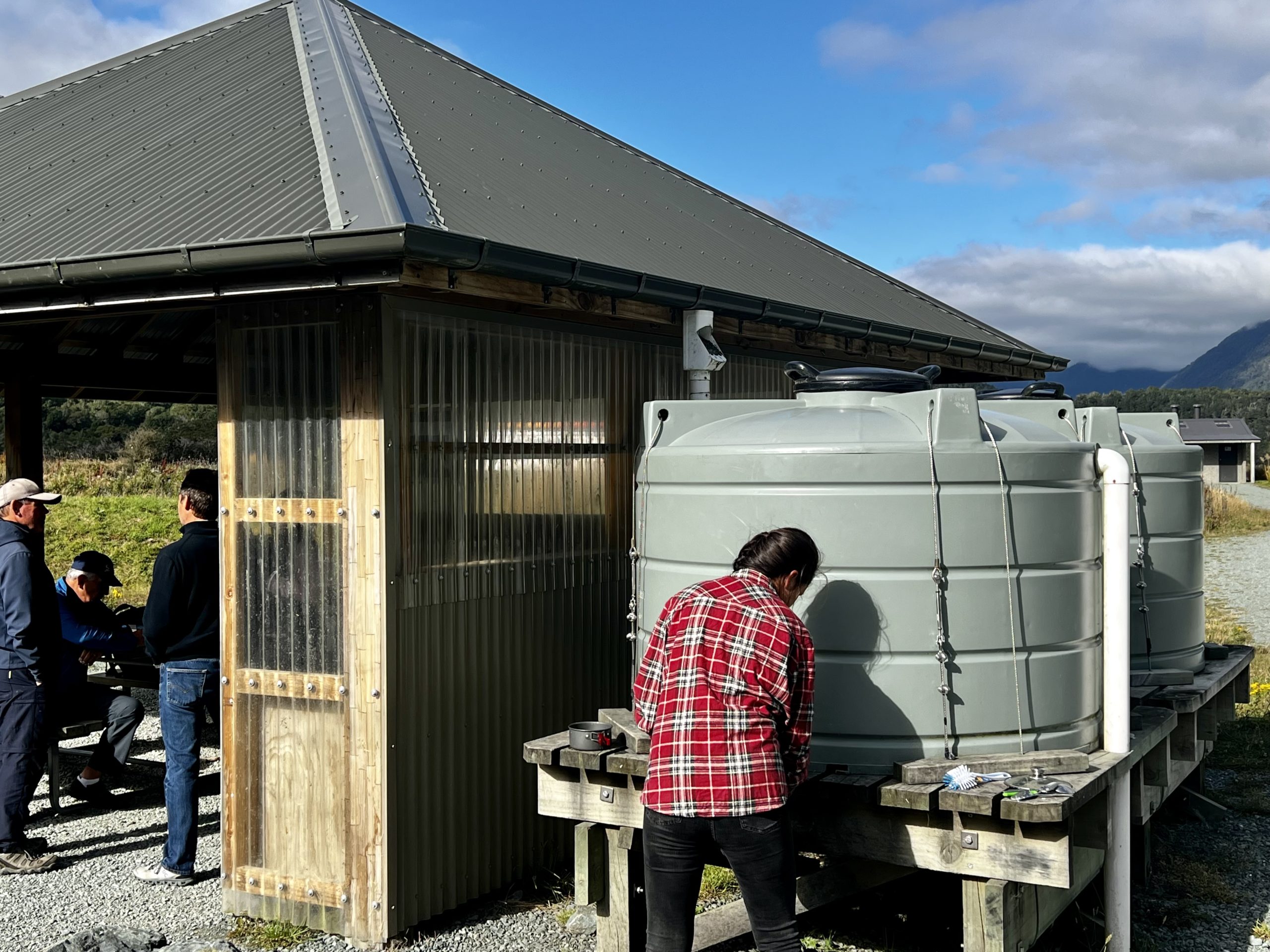
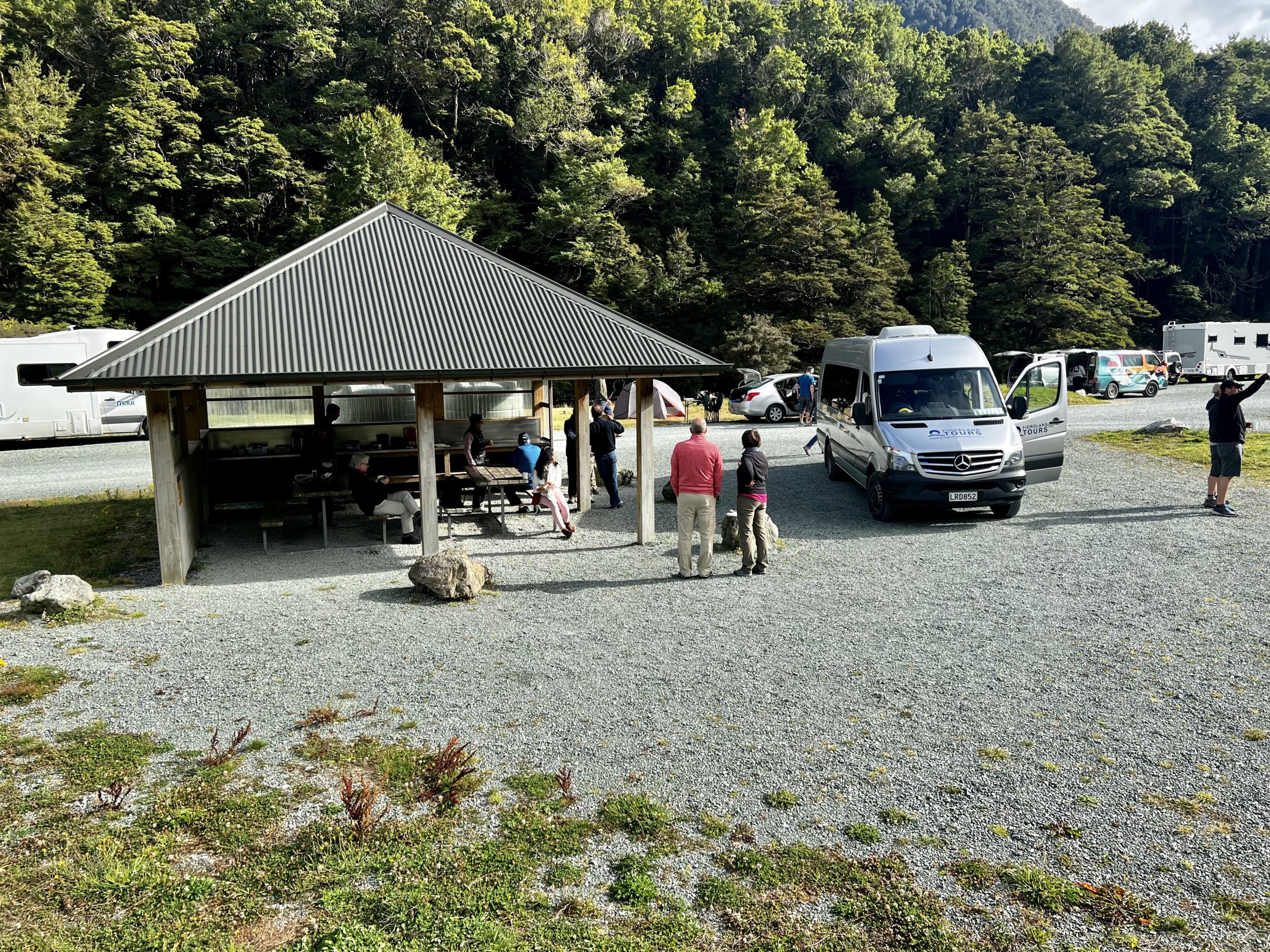



















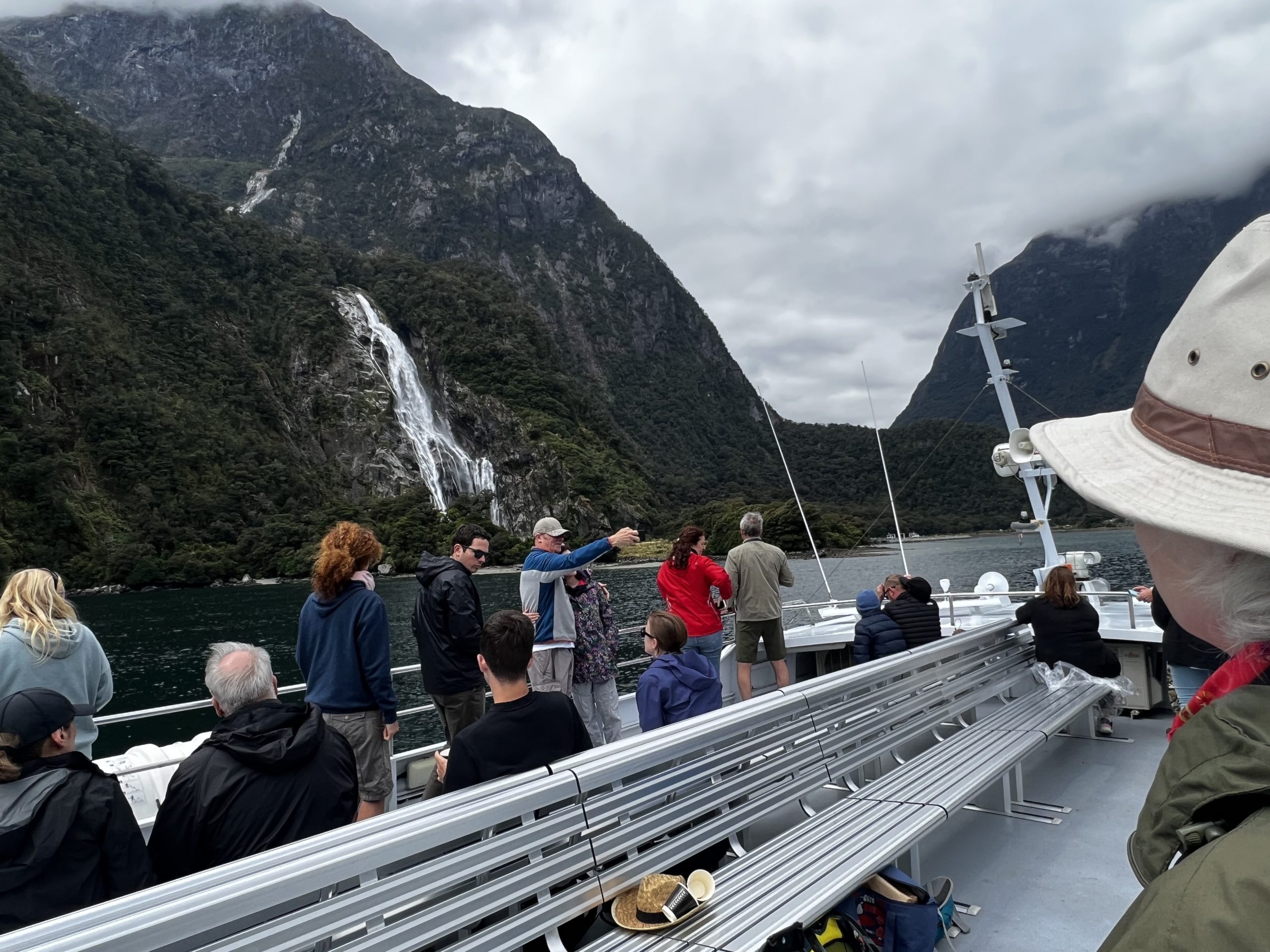
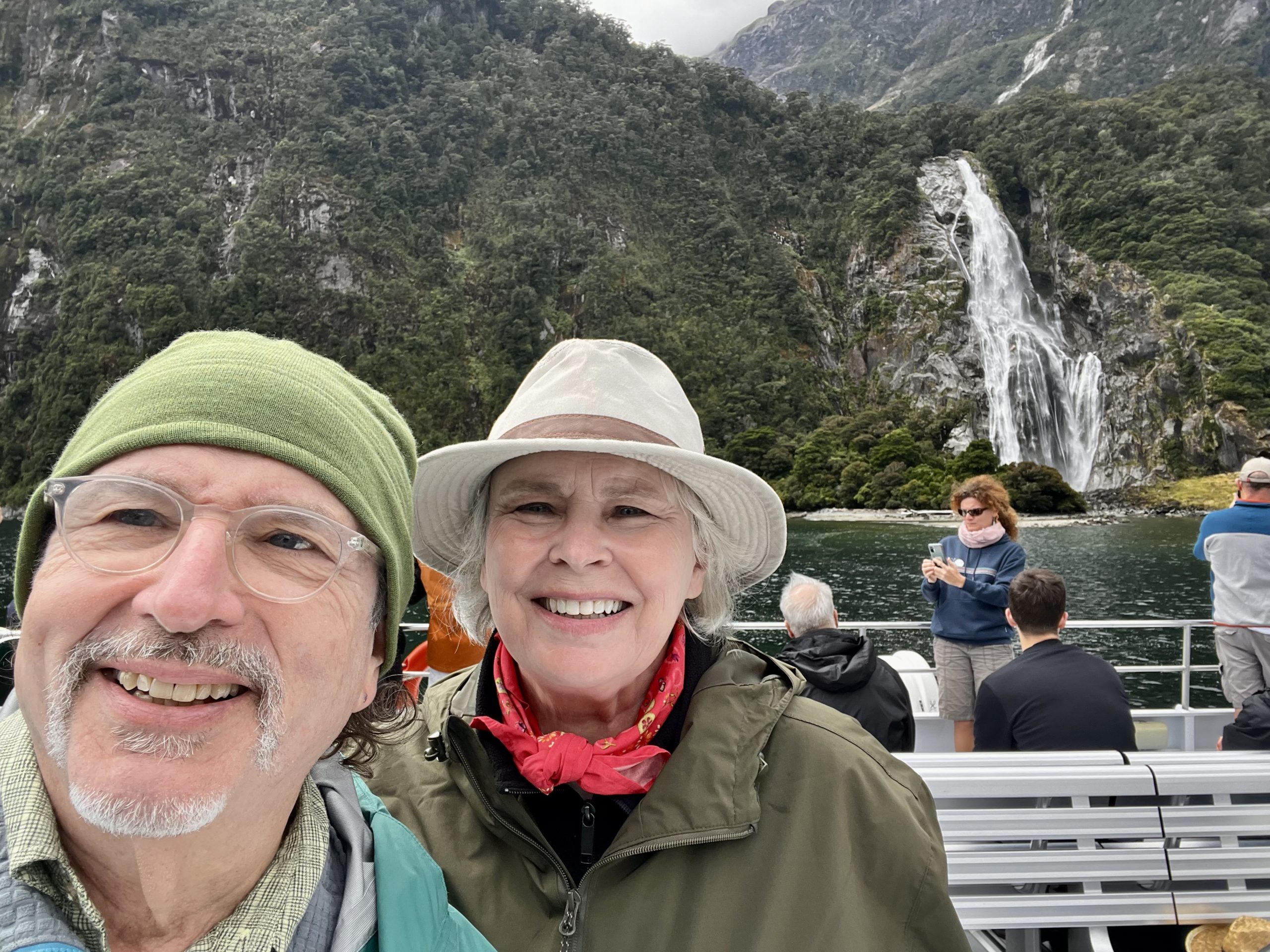
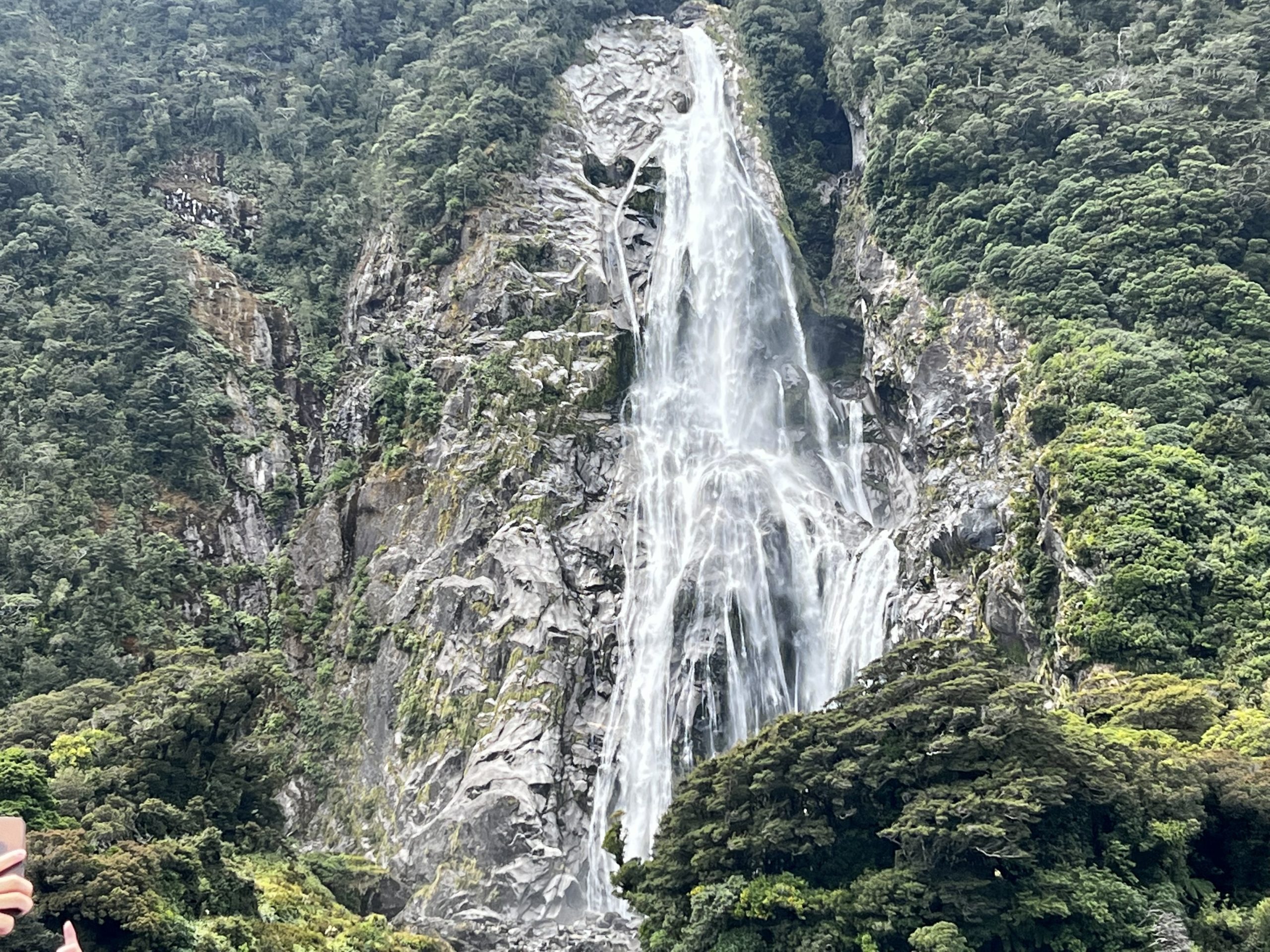

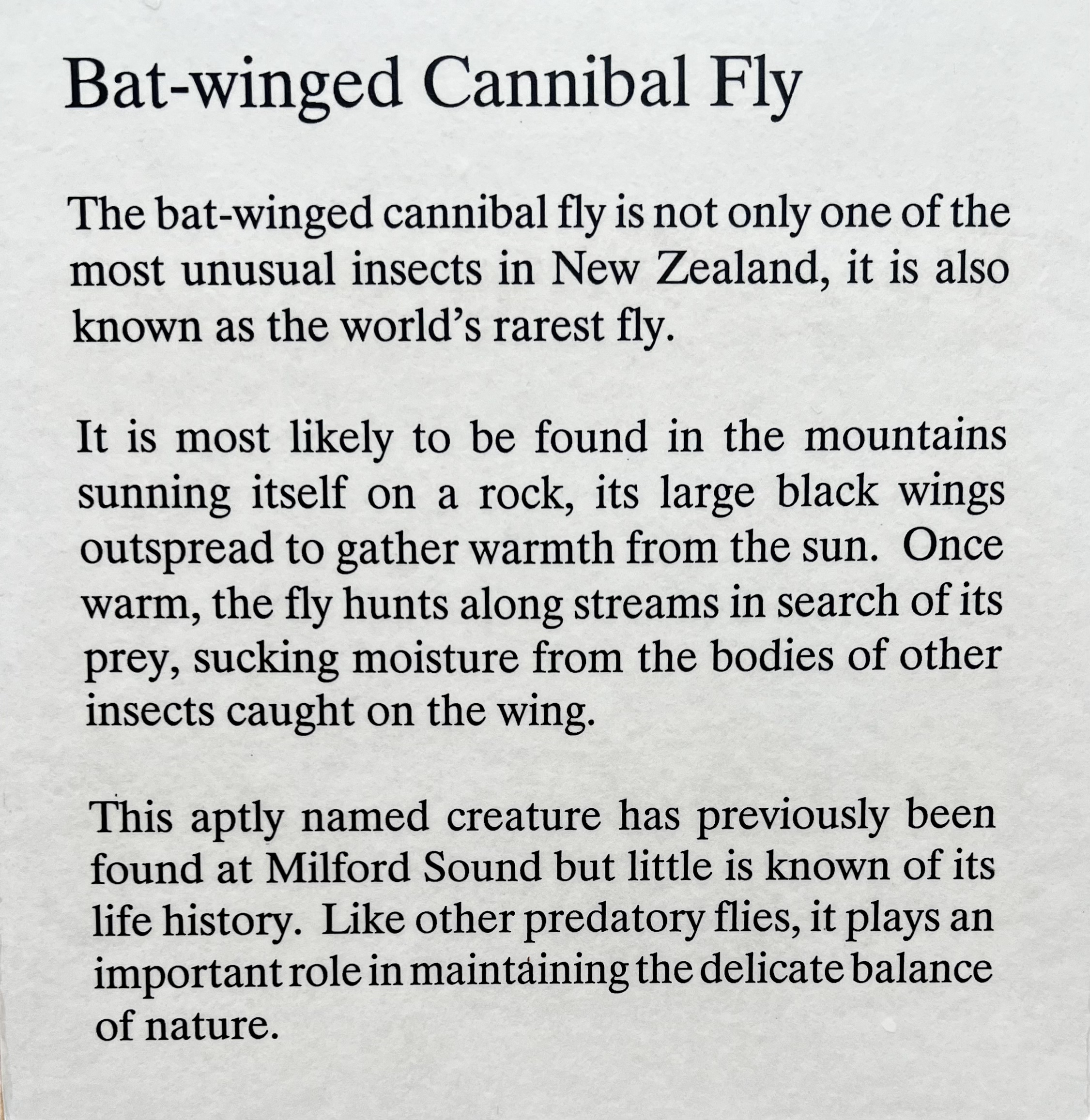
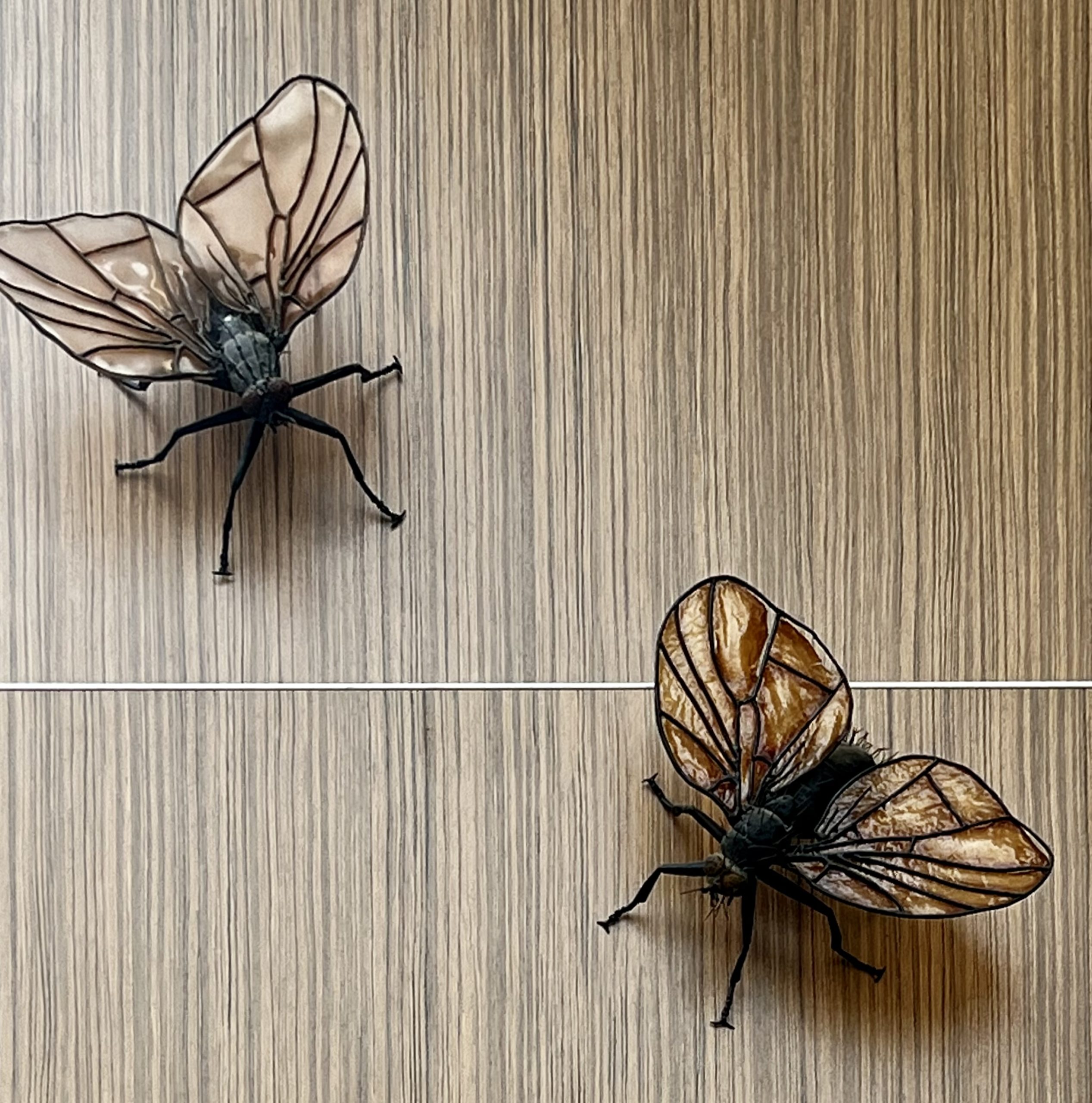
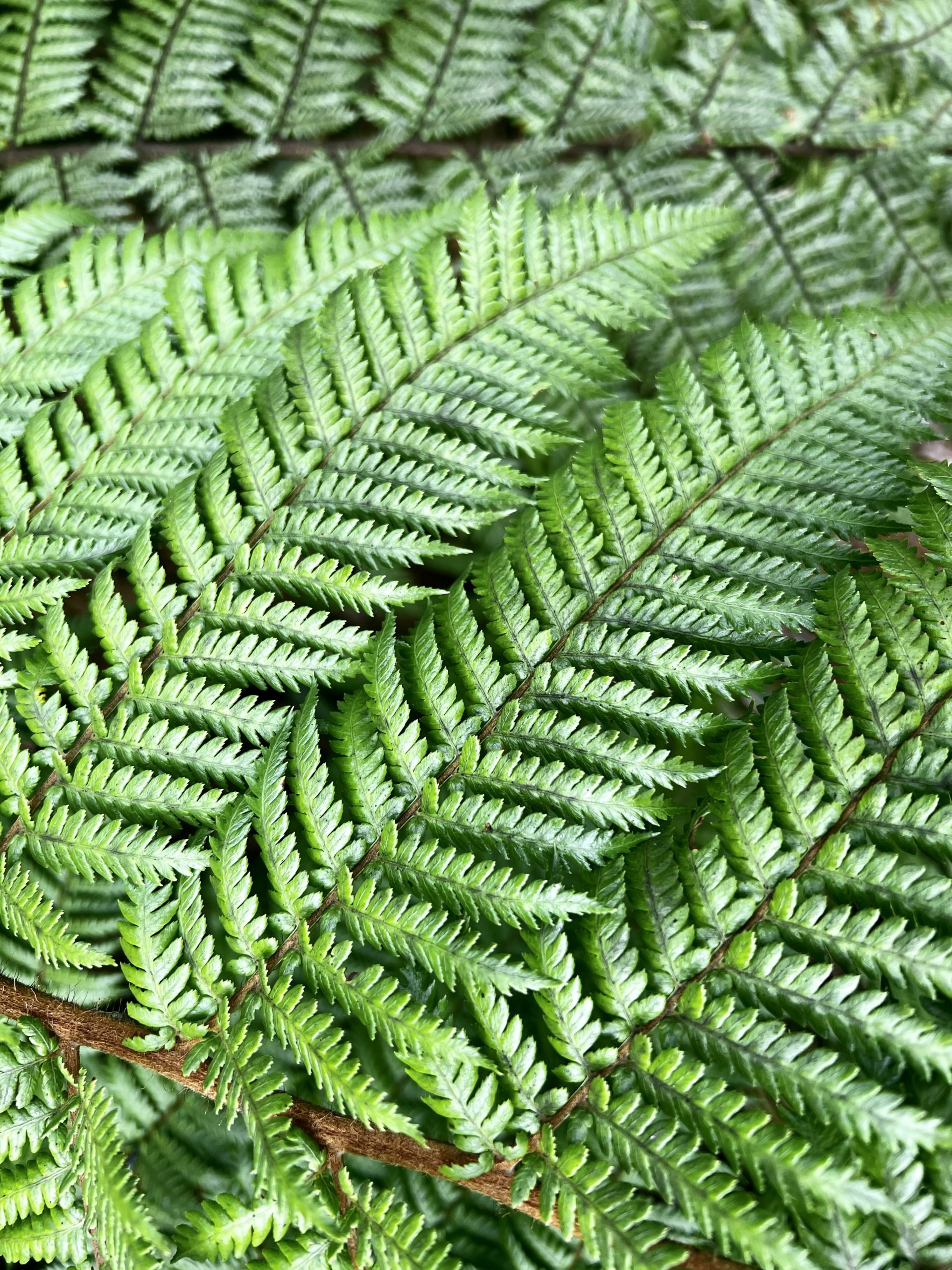
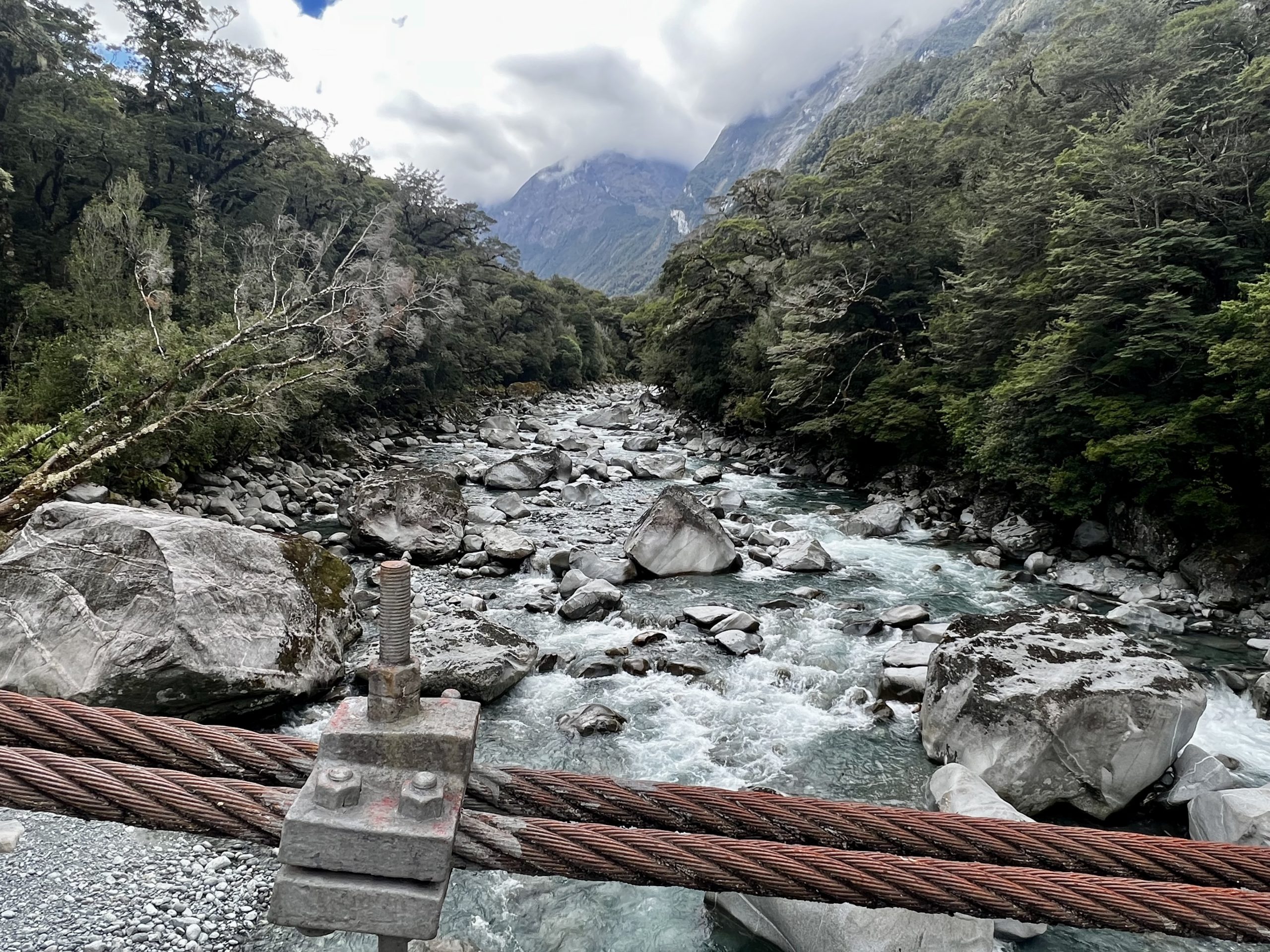
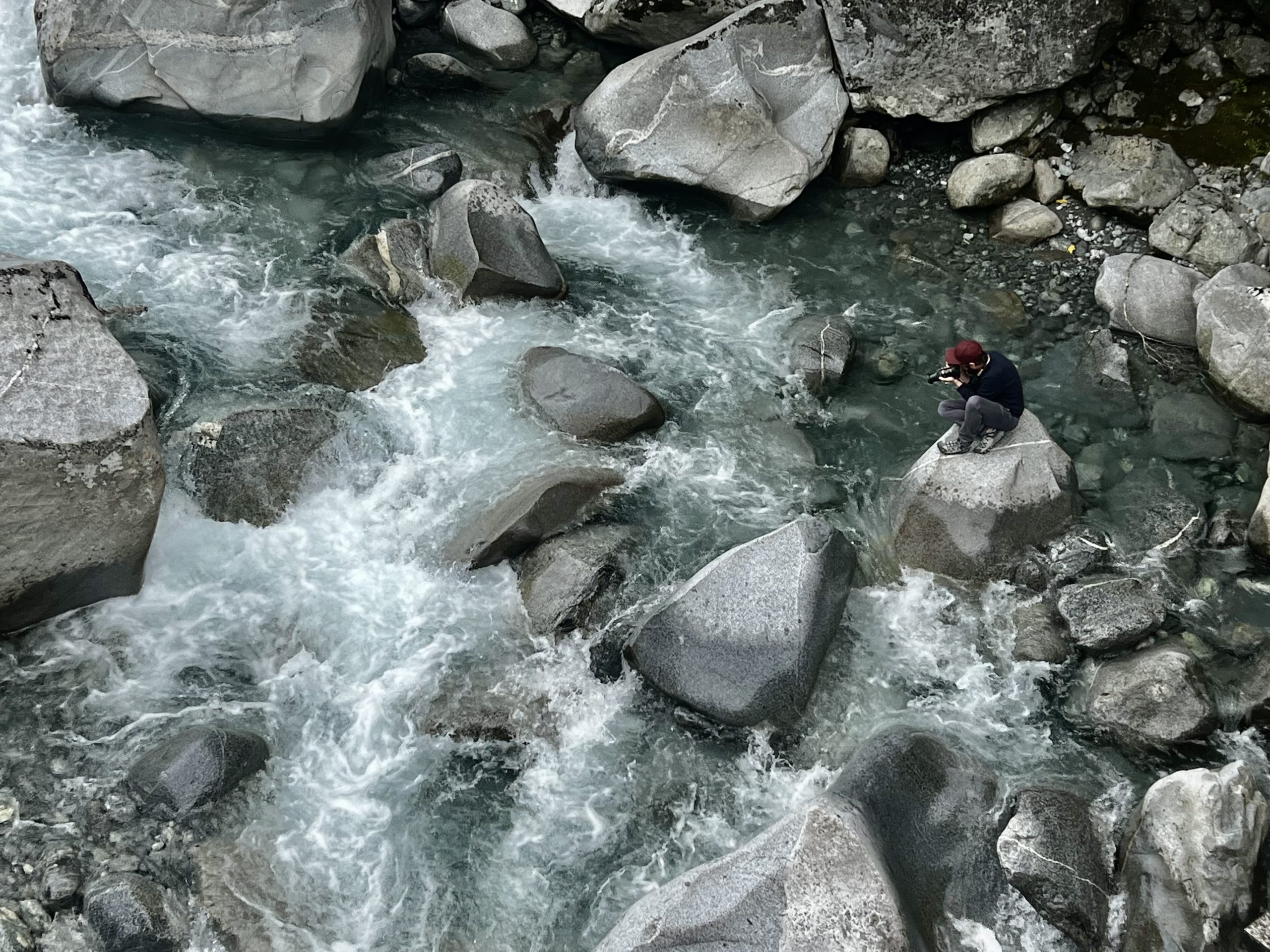
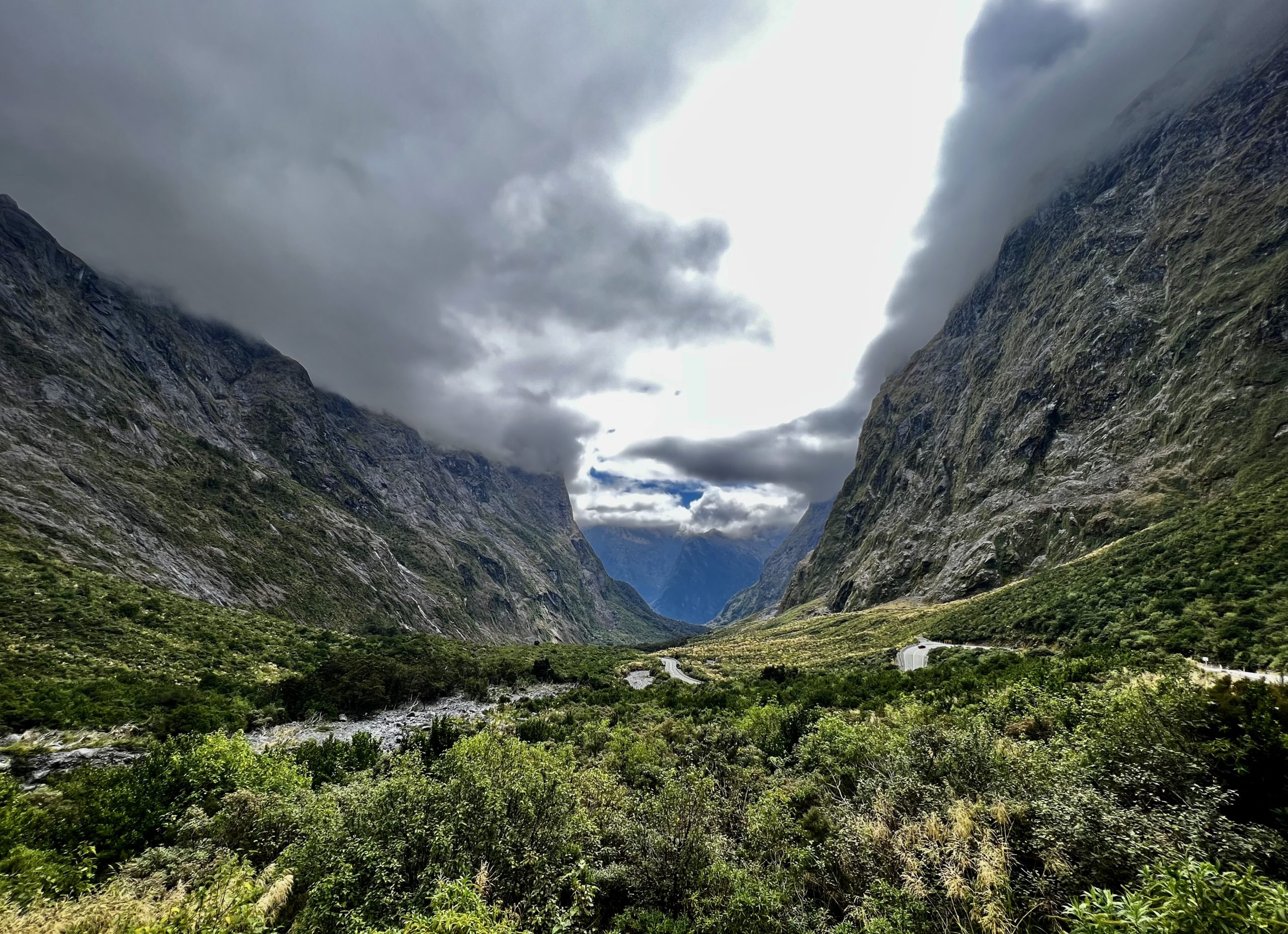
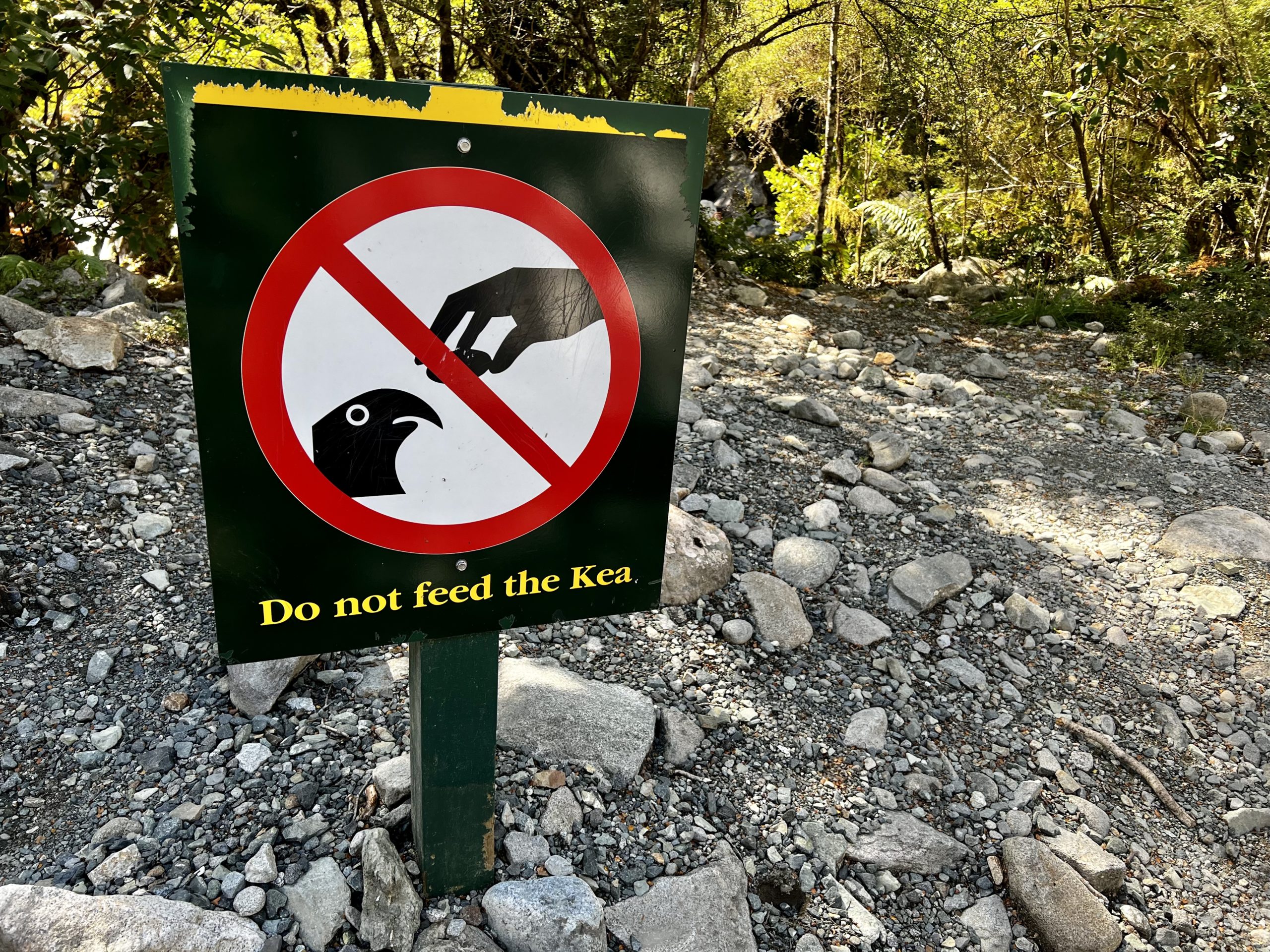
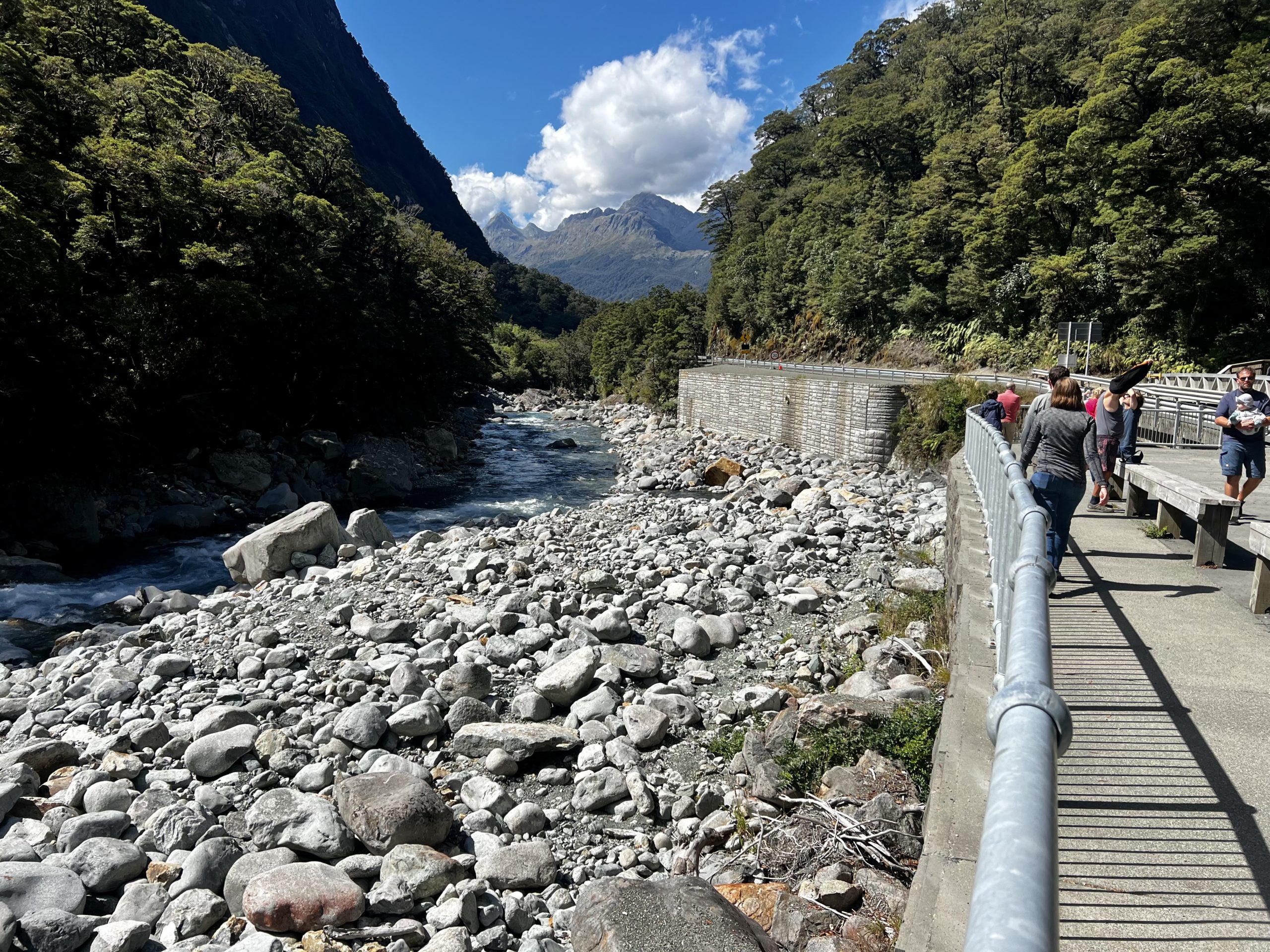
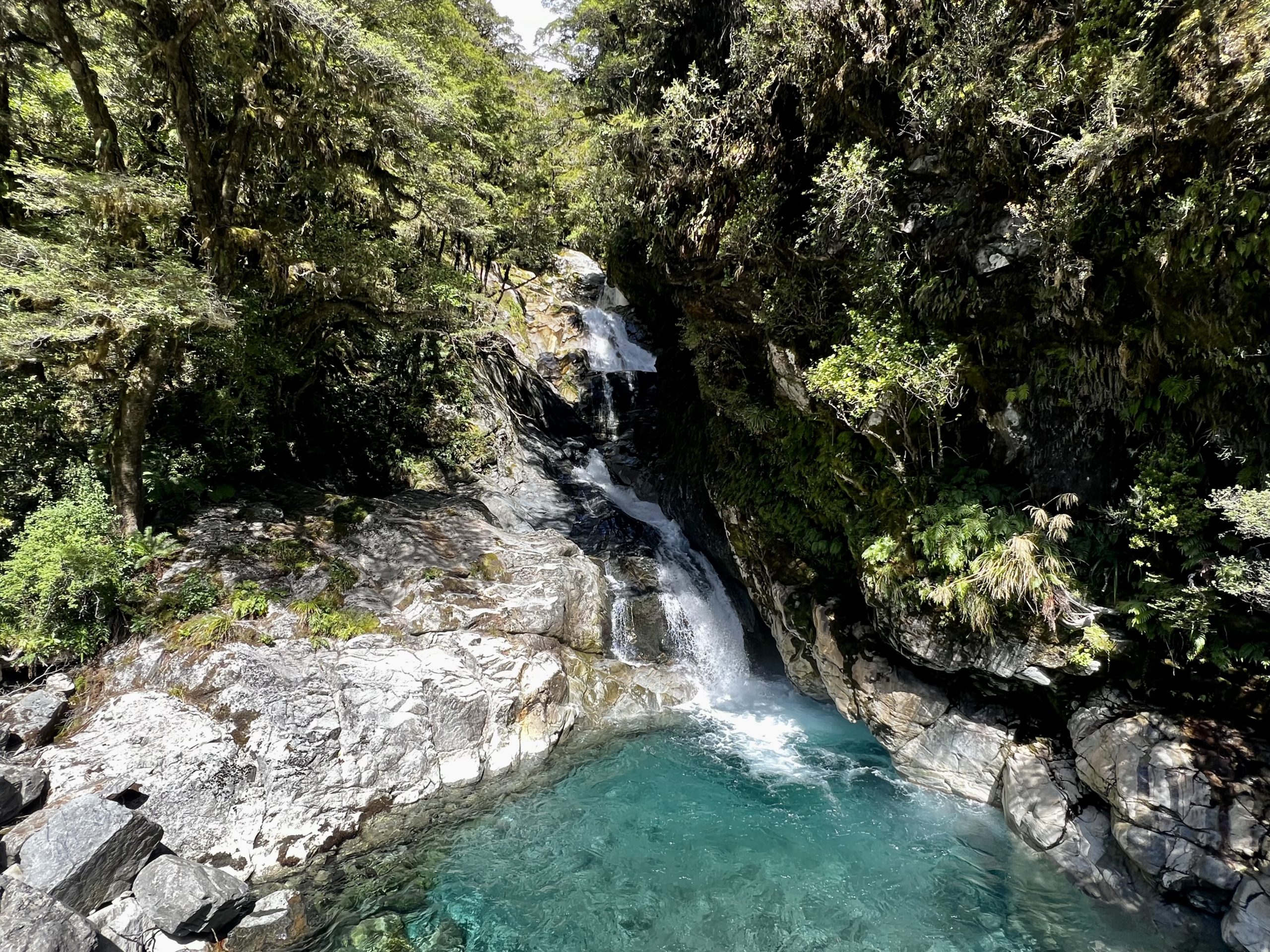
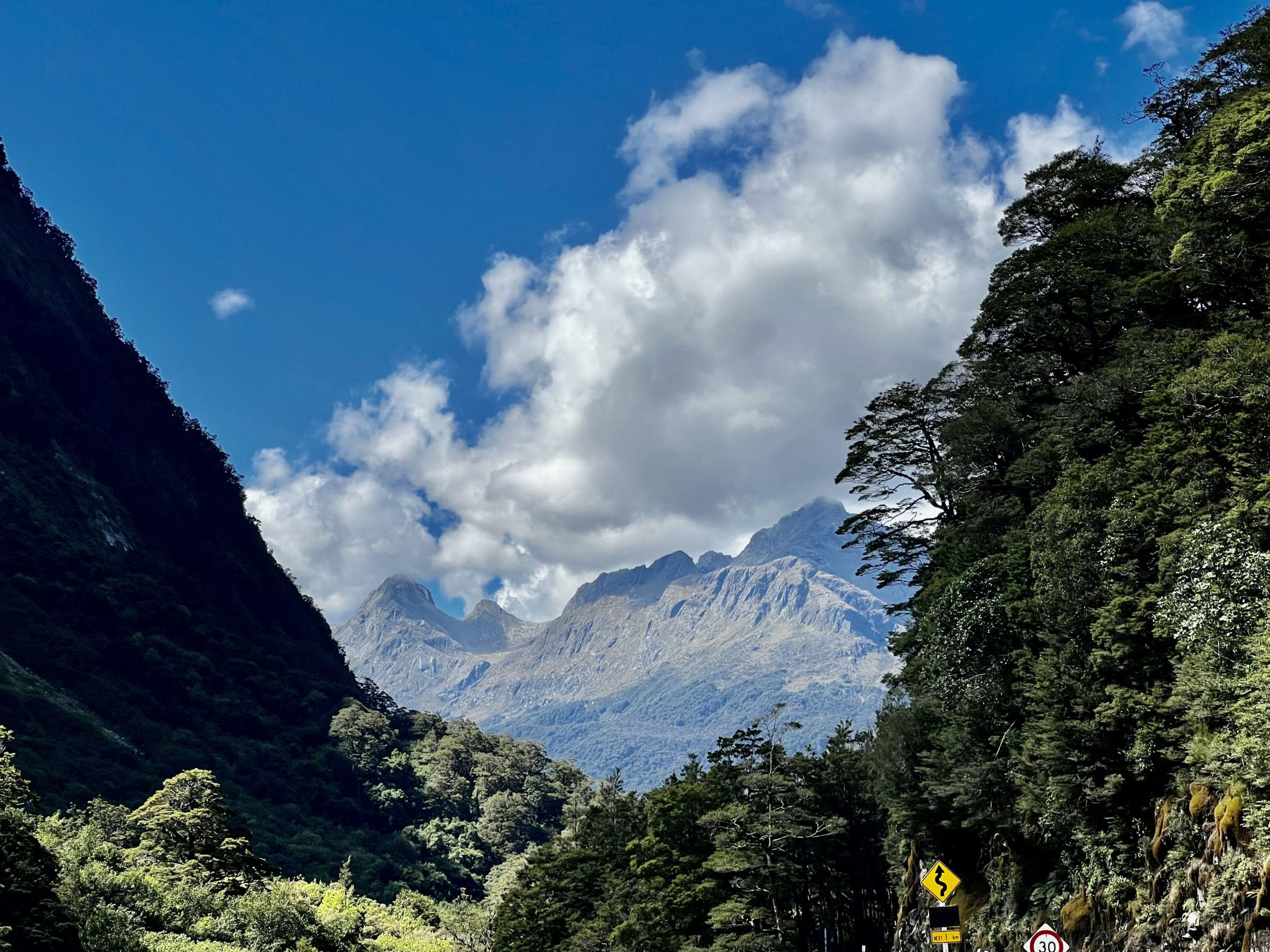
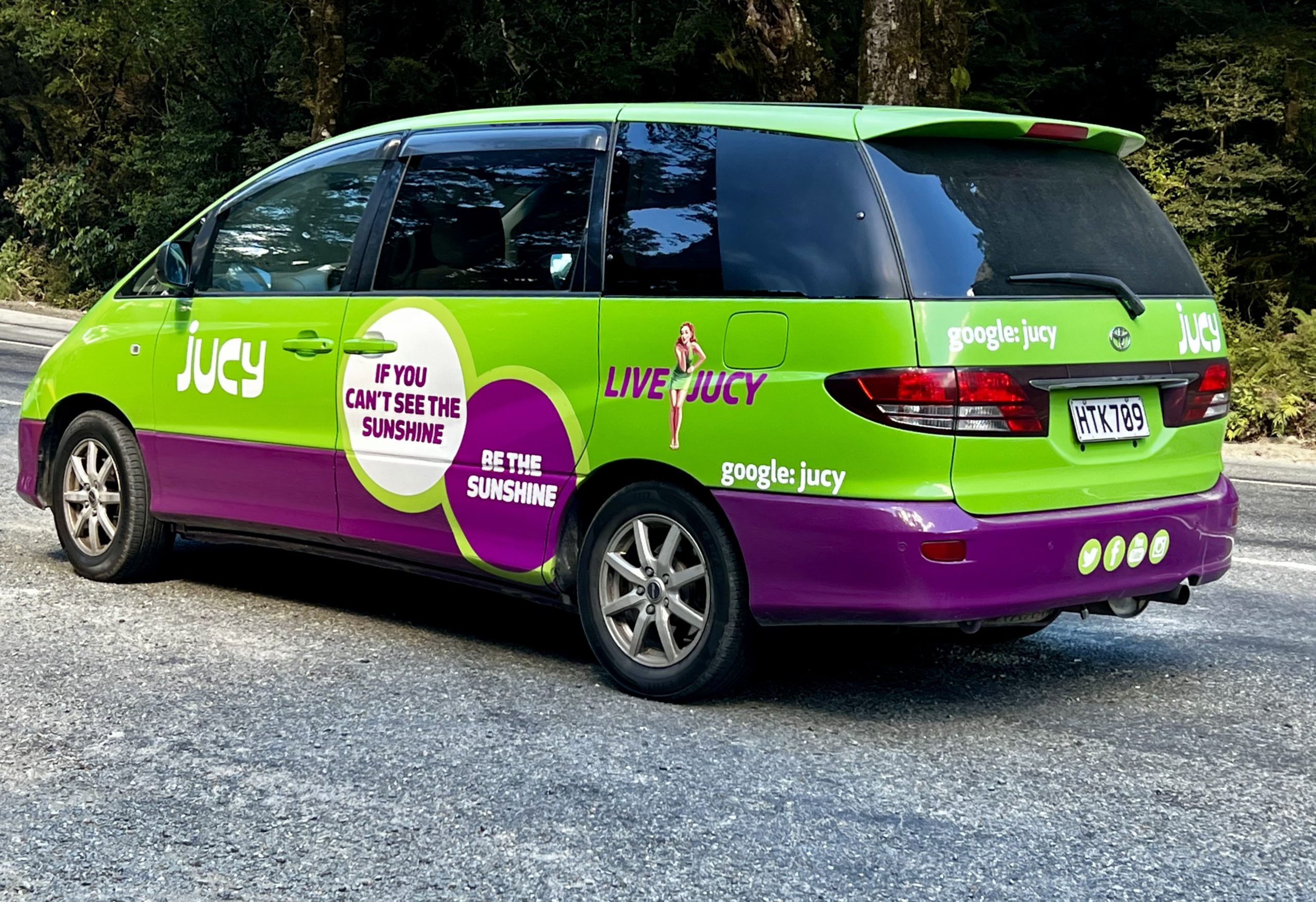
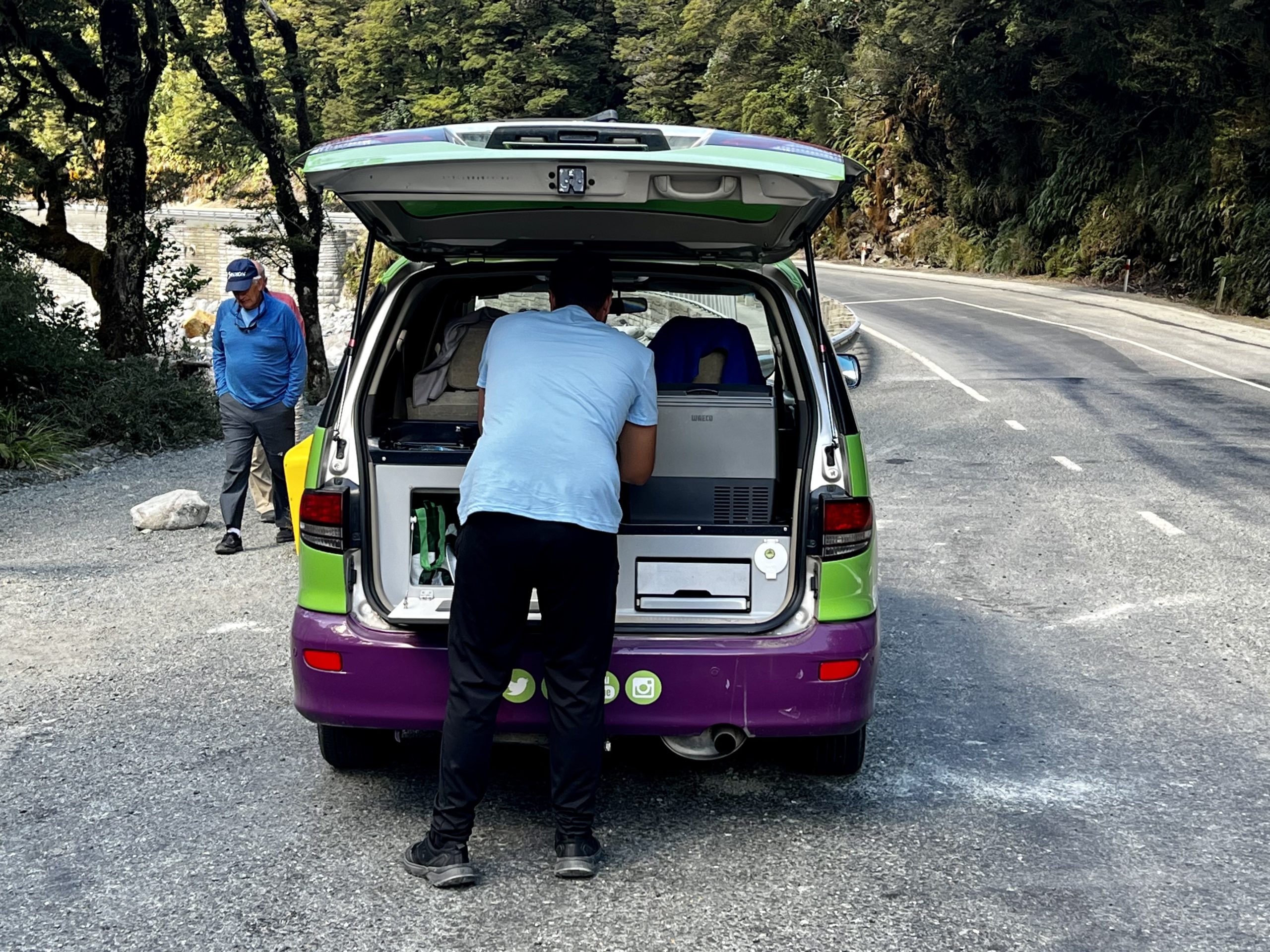
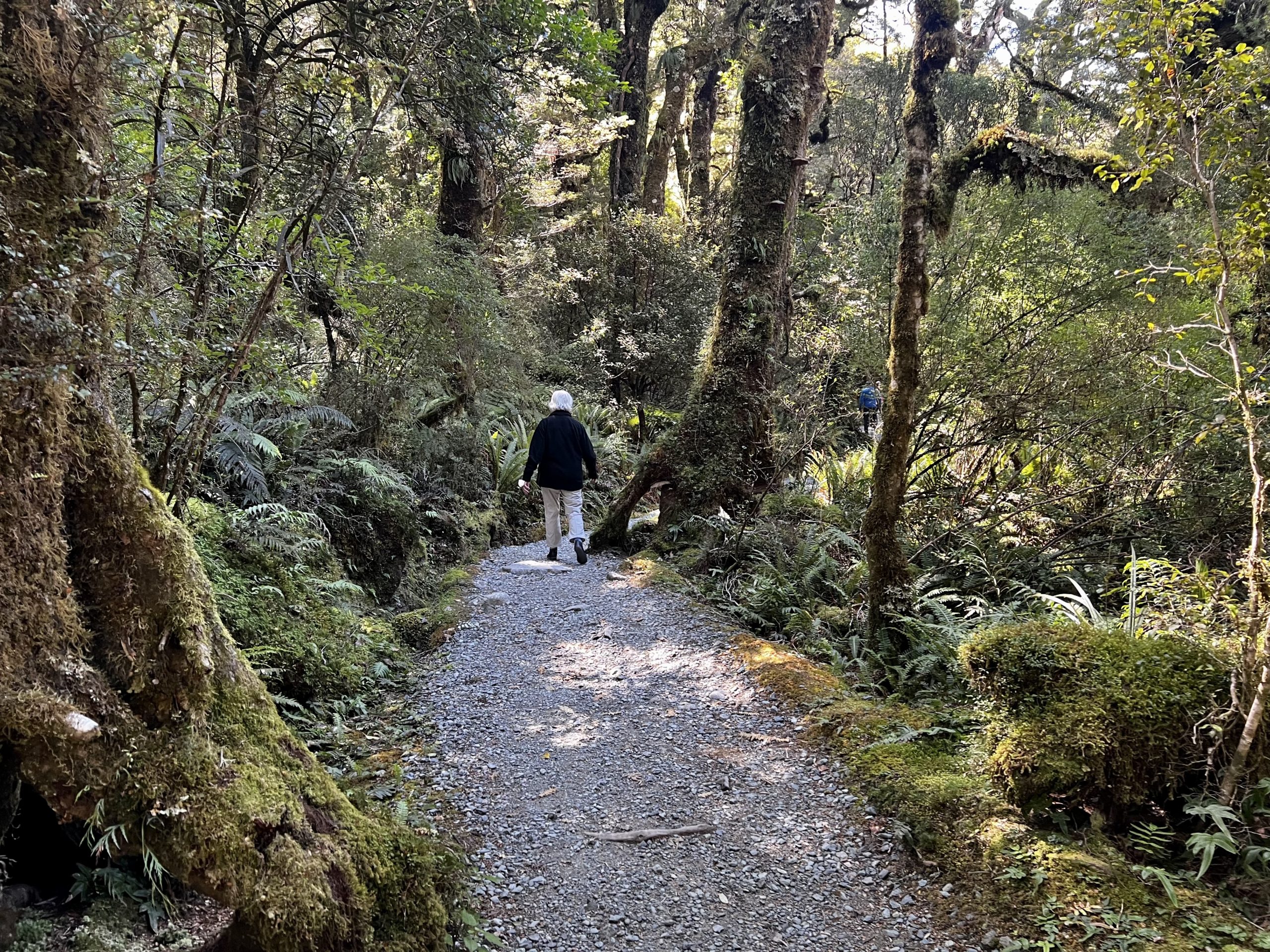
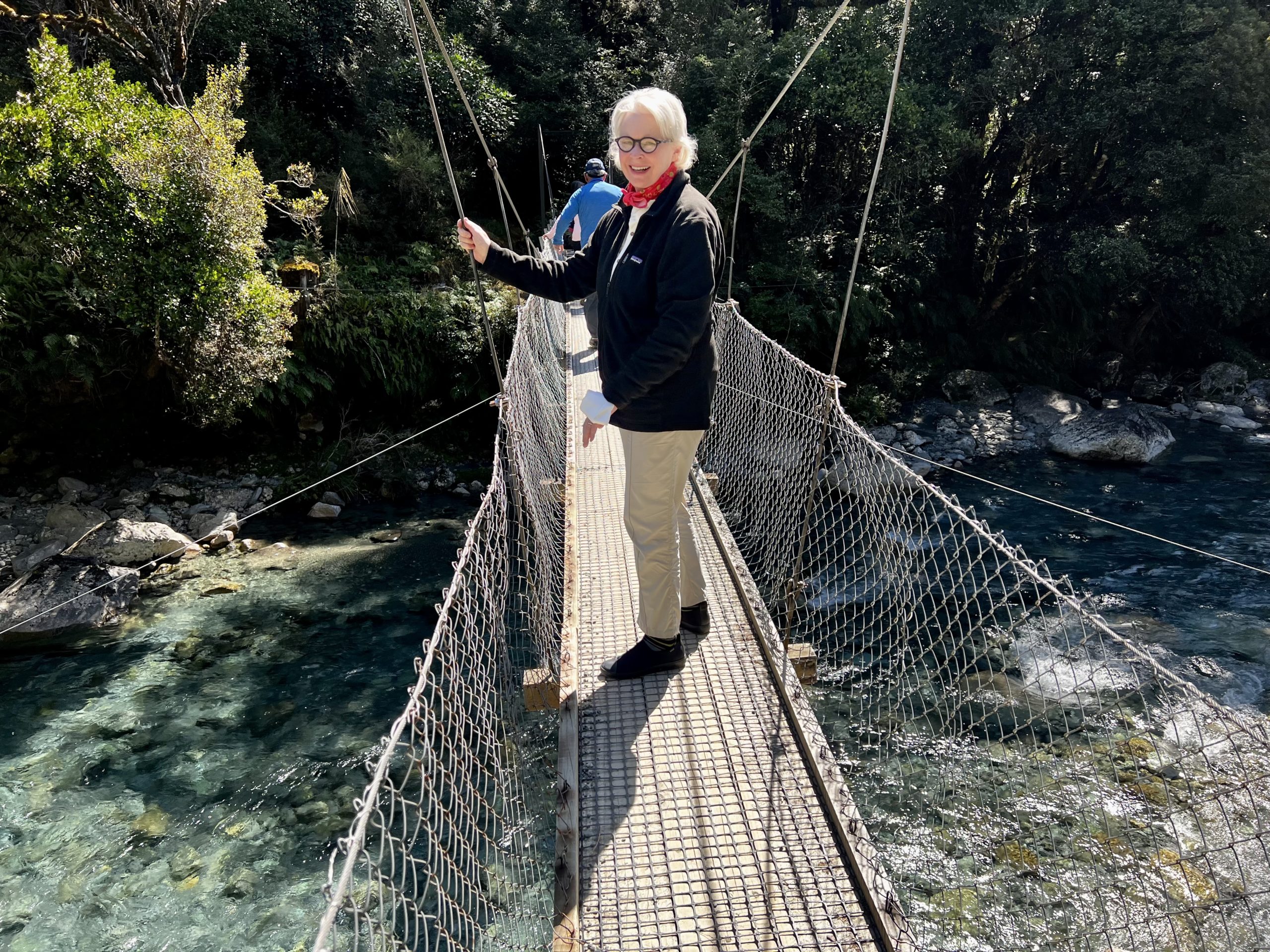
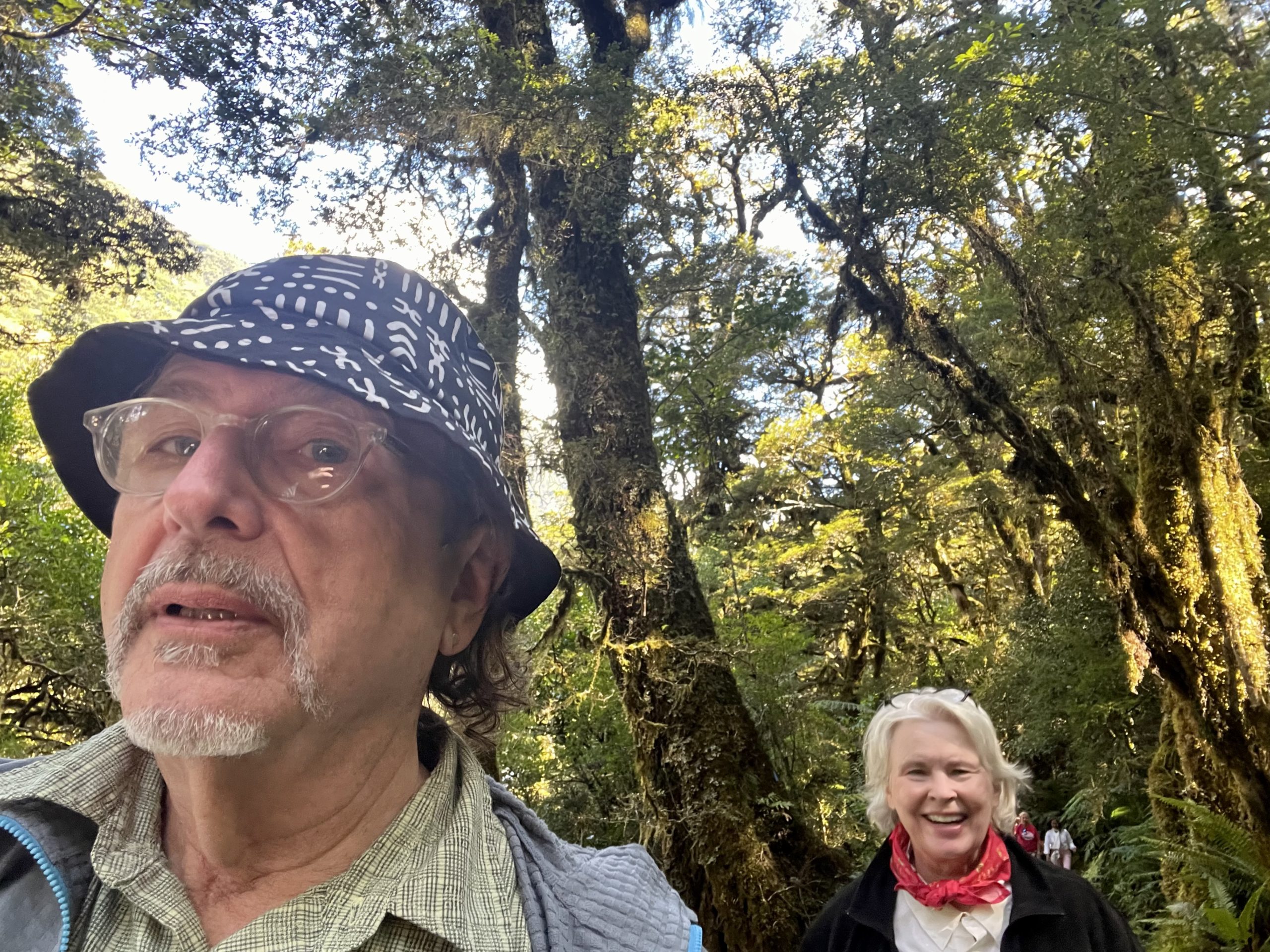
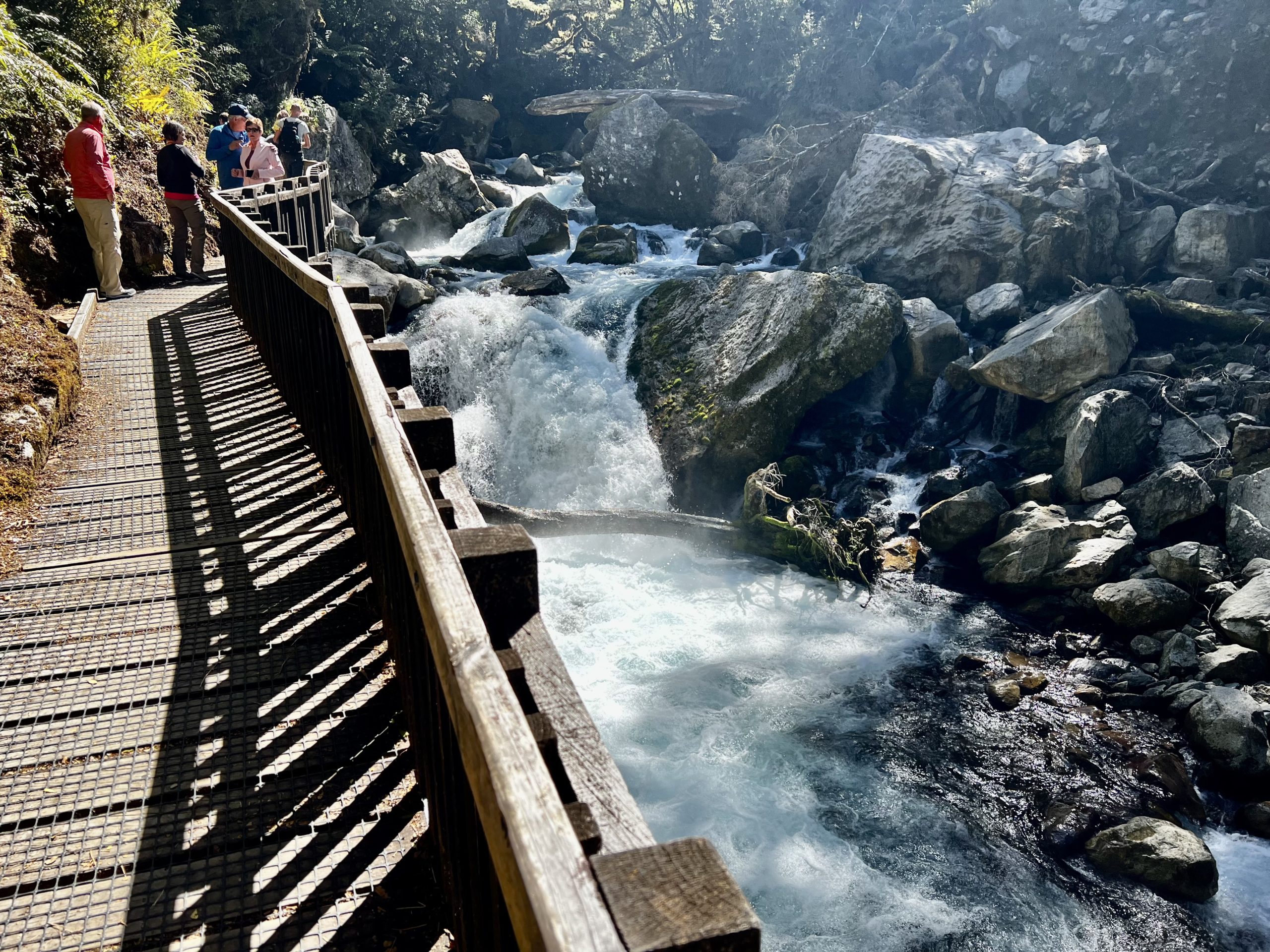
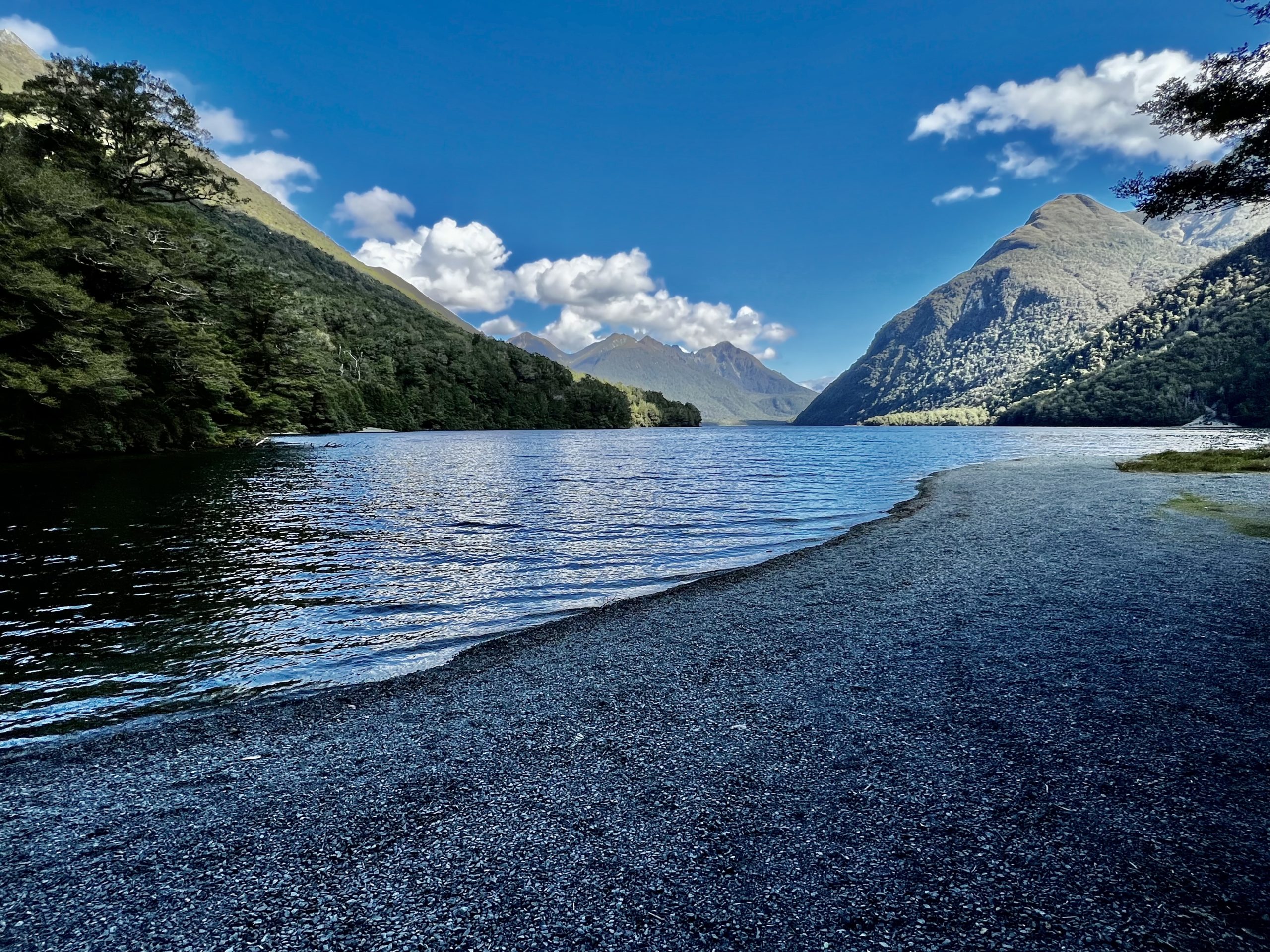
Glowworms
You must see the glowworms. Māori stories told about a cave with swirling waters but it was not rediscovered until after WWII. The glowworm cave is more than four kilometers long but only a small part is accessible to the public. The tour consists of, first, a twenty-minute boat ride across the lake from Te Anau to the caves, then a brief presentation, and then a ten-minute walk on a wet walkway inside the dim, damp cave alongside a roaring underground river that is carving away the limestone. Sometimes you are hunching down to get under the rocks. The caves are only 12,000 years old. Not old for this type of formation. After you make it past a noisy waterfall carving its way through a limestone wall, you step into a simple boat that seats twelve people and you take a ten-minute silent boat ride into the dark cave to see the glowworms. The guides do not allow talking. (This would never work in Italy!) It is so completely dark that your eyes are desperately seeking something to focus on as you glide along. Bonnie thought of the Tactile Dome at the Exploratorium. You definitely lose your perception of space. But then you see small constellations of glowworms on the ceiling of the narrow cave. The glowworms use light to attract flying insects, capturing them on sticky tendril fish lines that they extend below them. Once captured, an insect is hoisted up to the horizontal casing where the glowworm lives. Ahhhh, nature at its best. Another tour you must definitely take in New Zealand.
They do not allow photography in the caves because the light would disrupt the experience. The interior shots here, rather dramatized, are from a website.
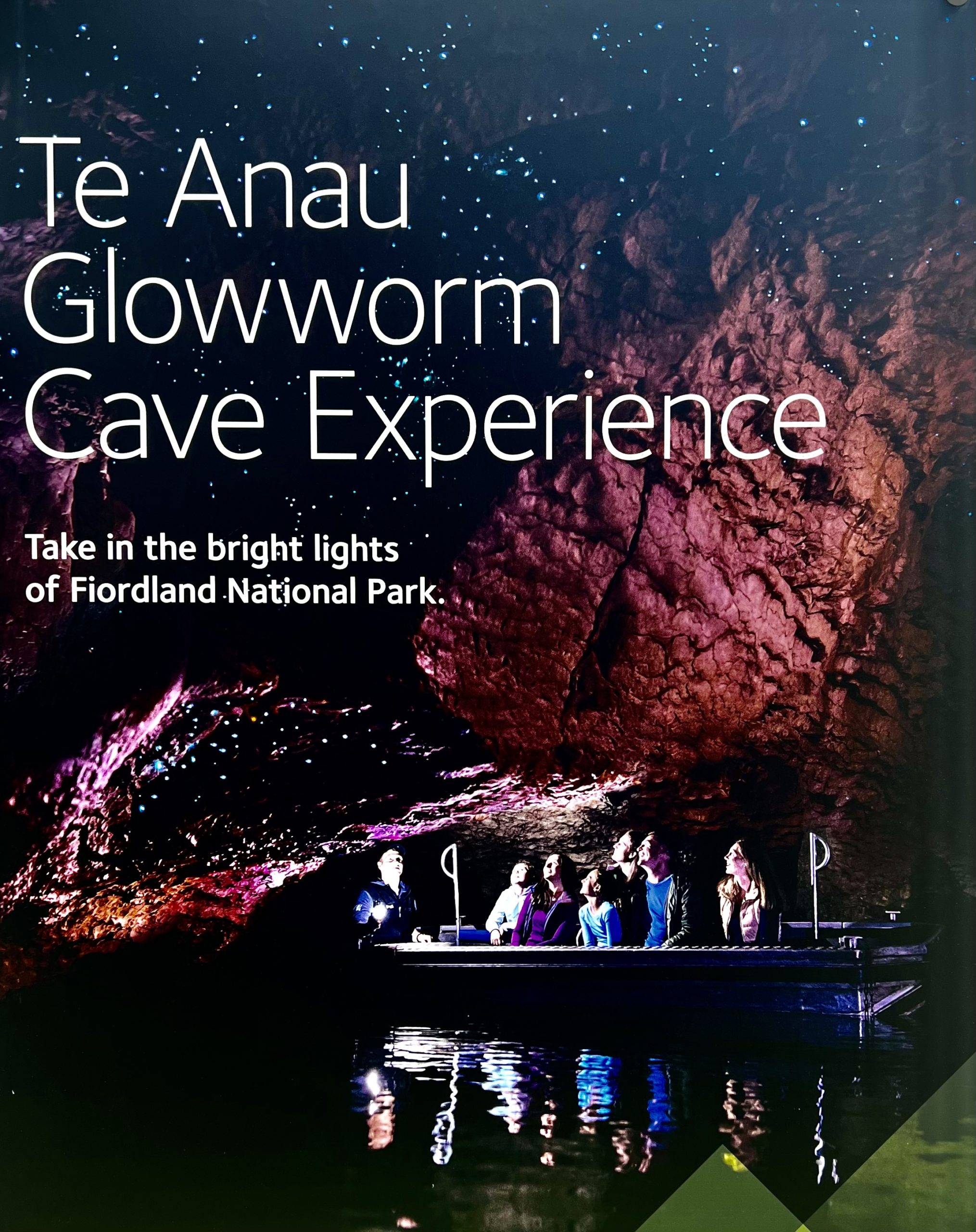
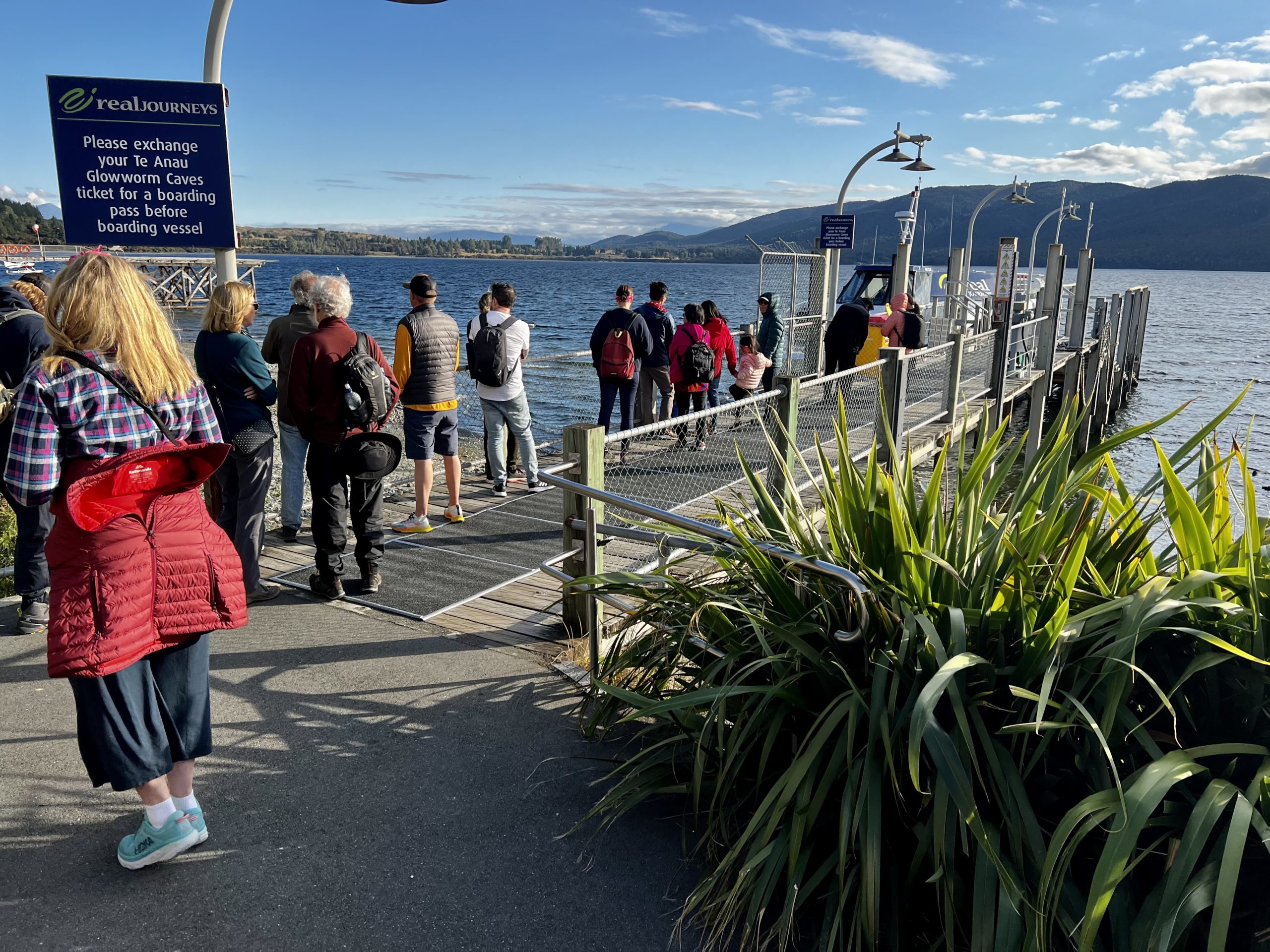
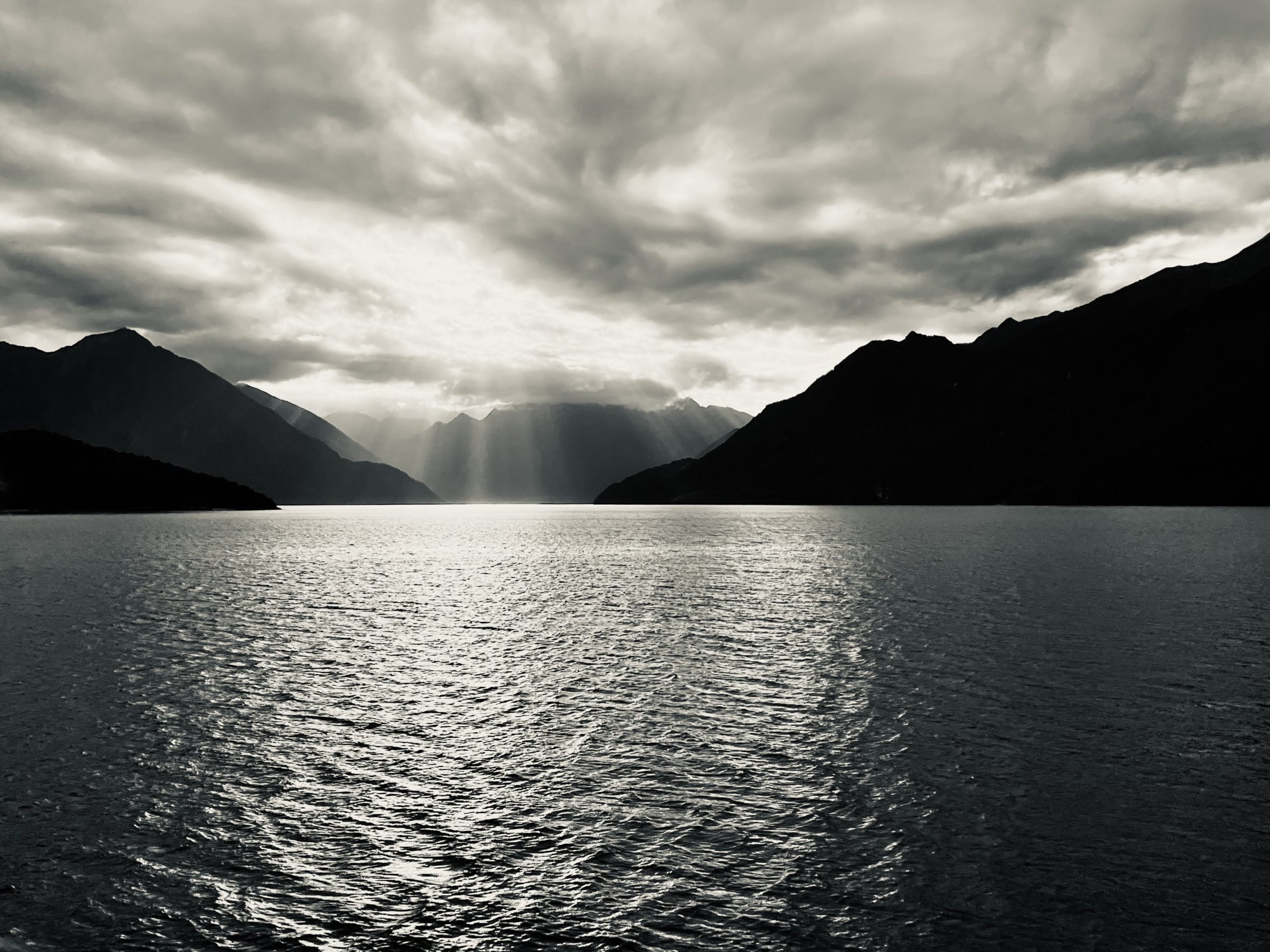
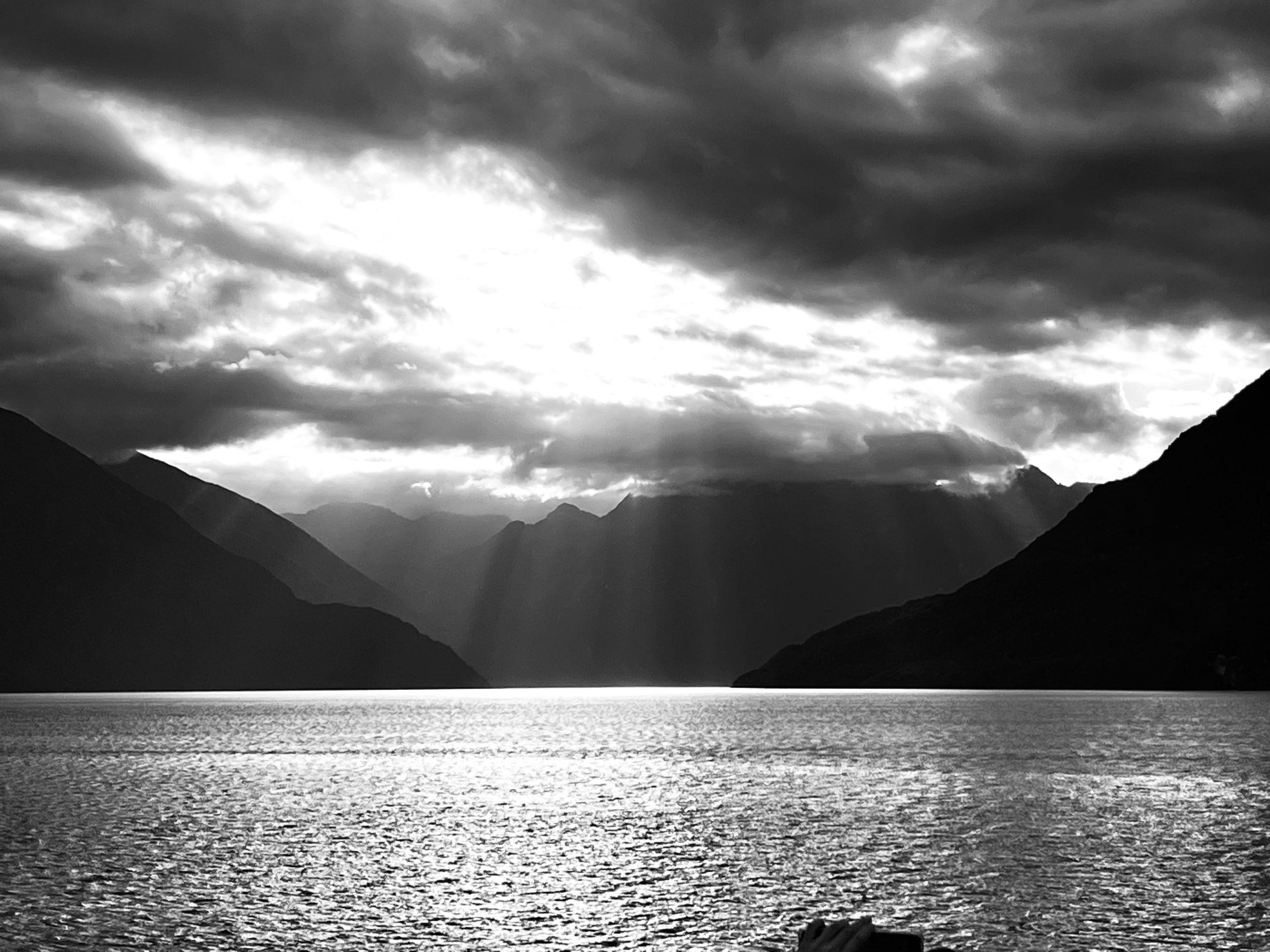
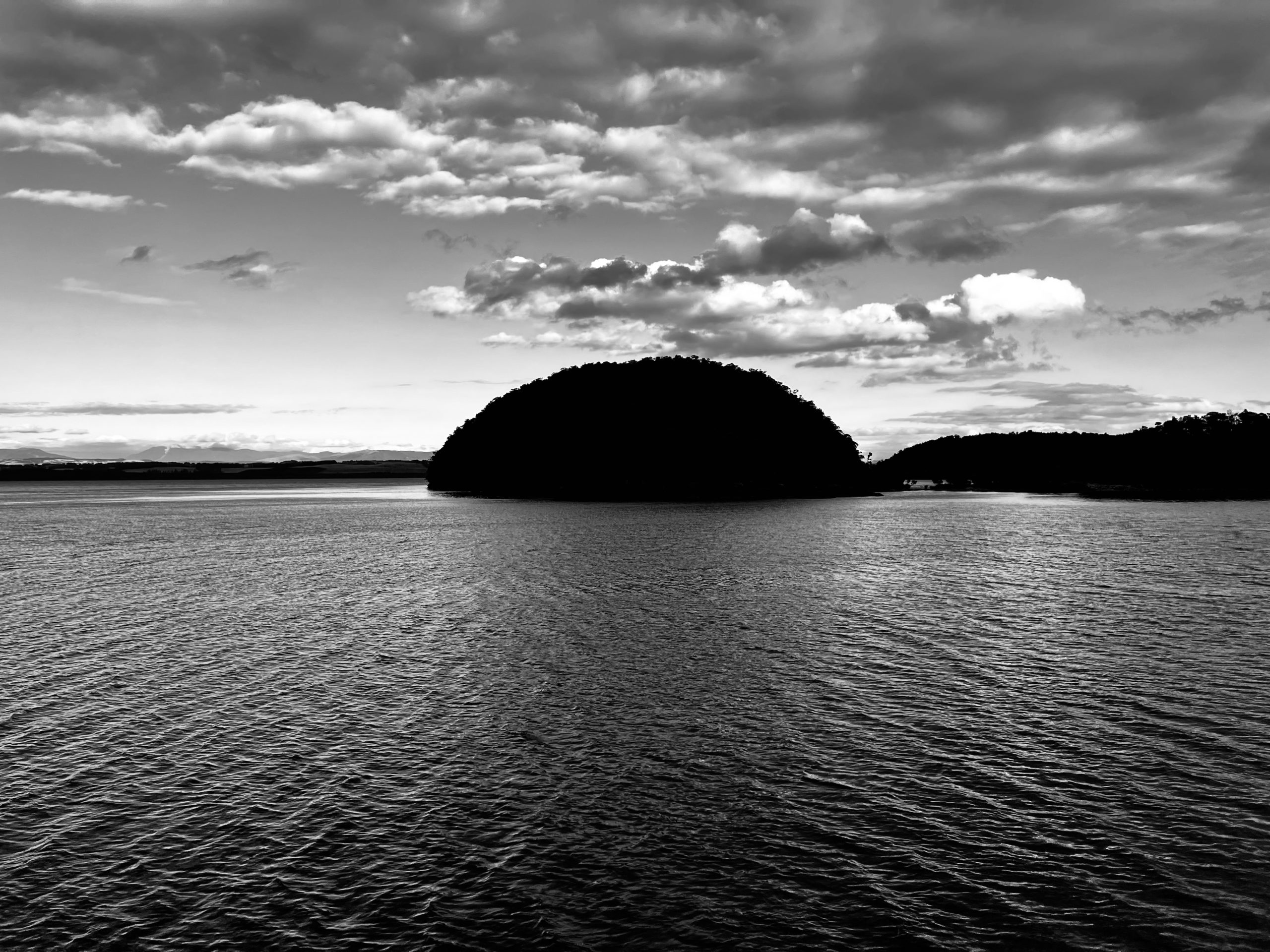
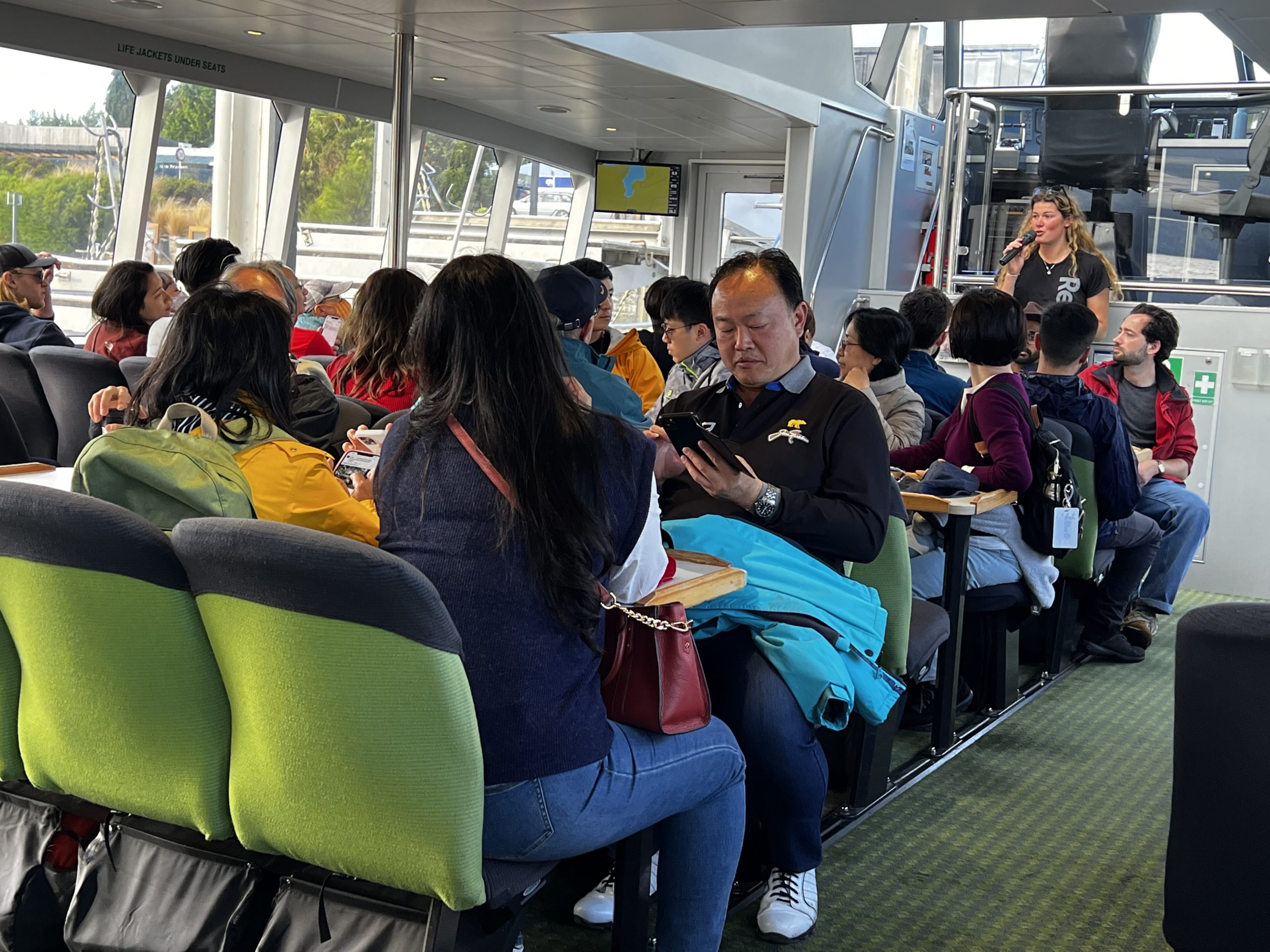
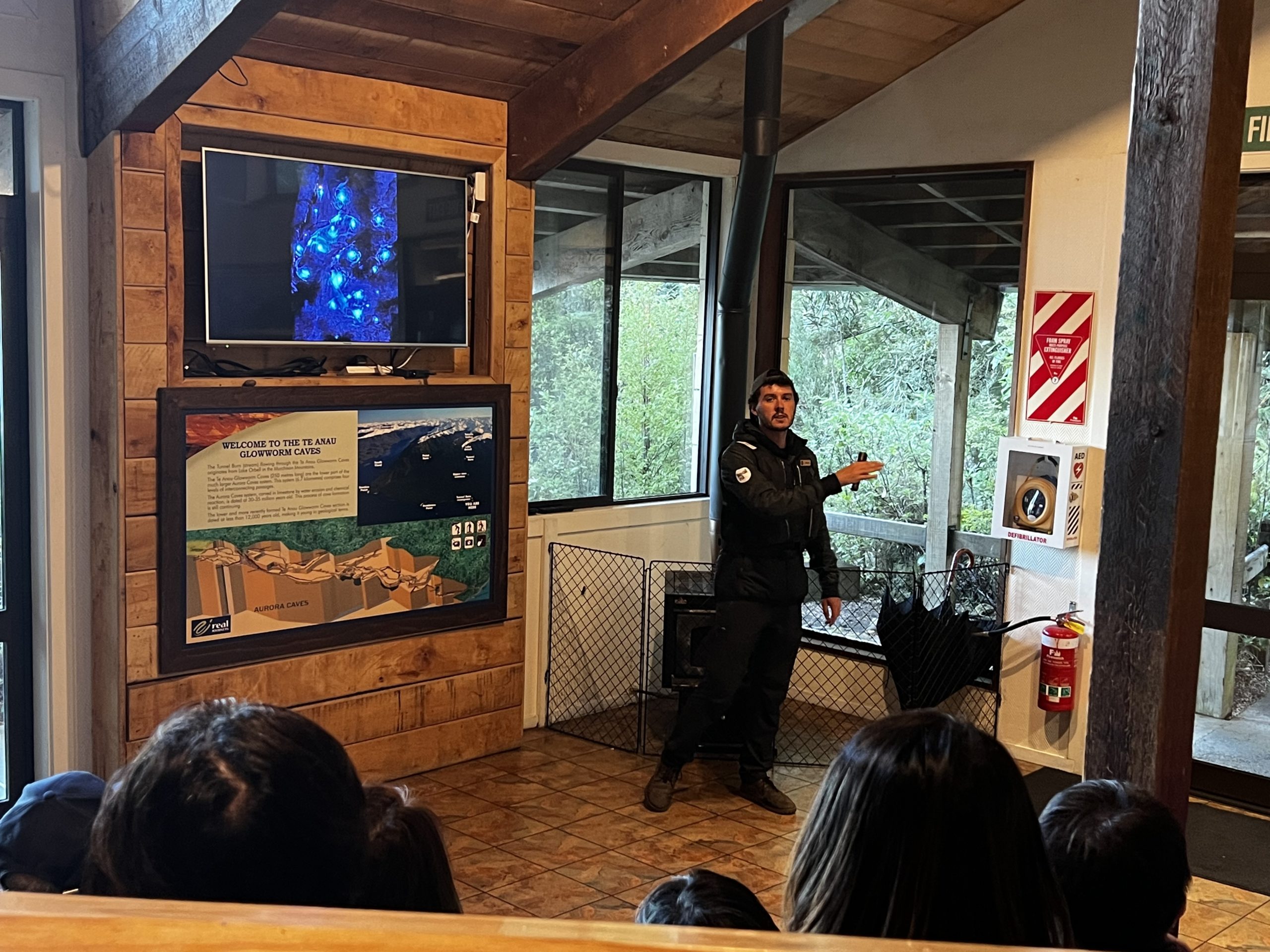
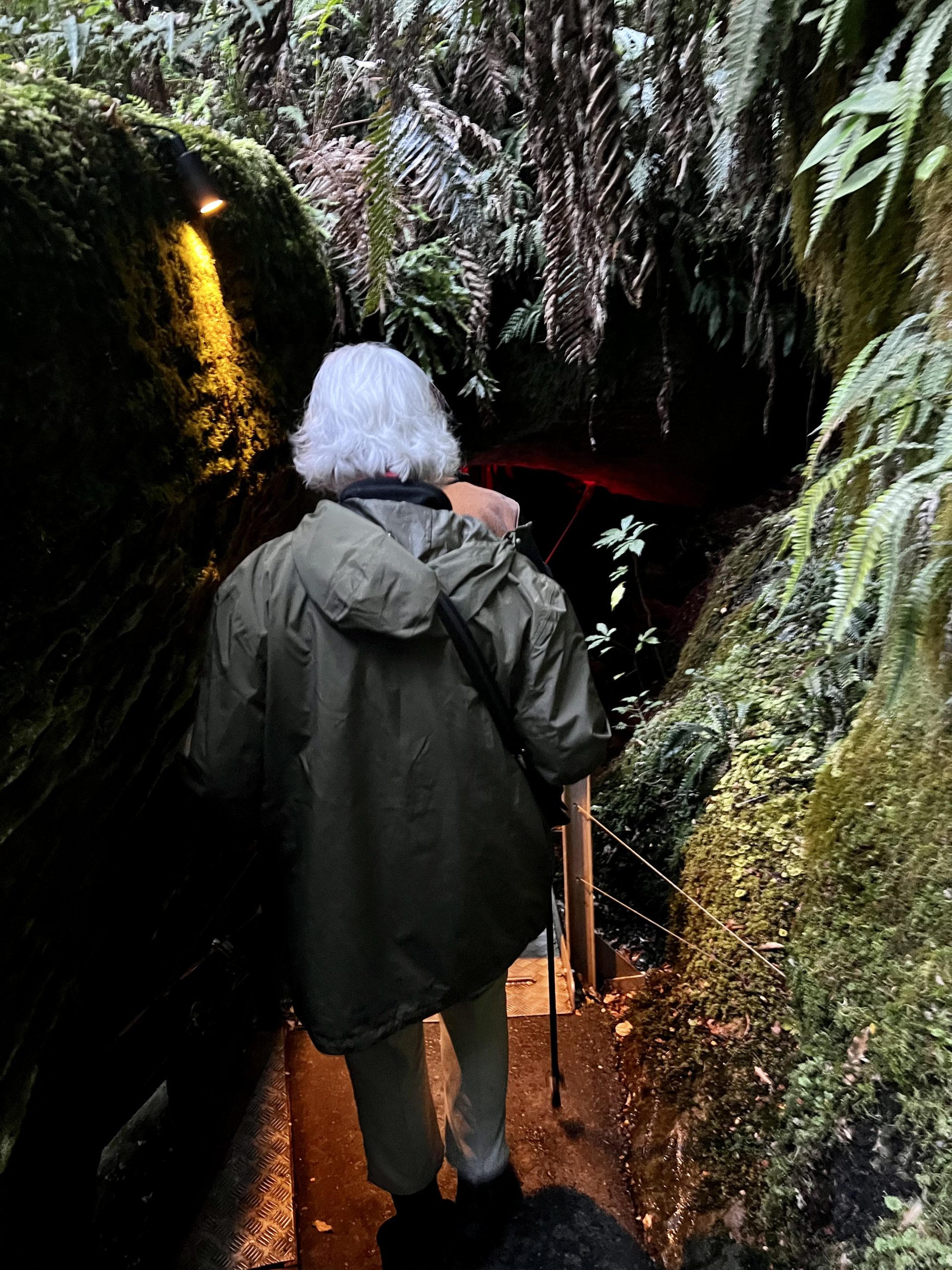
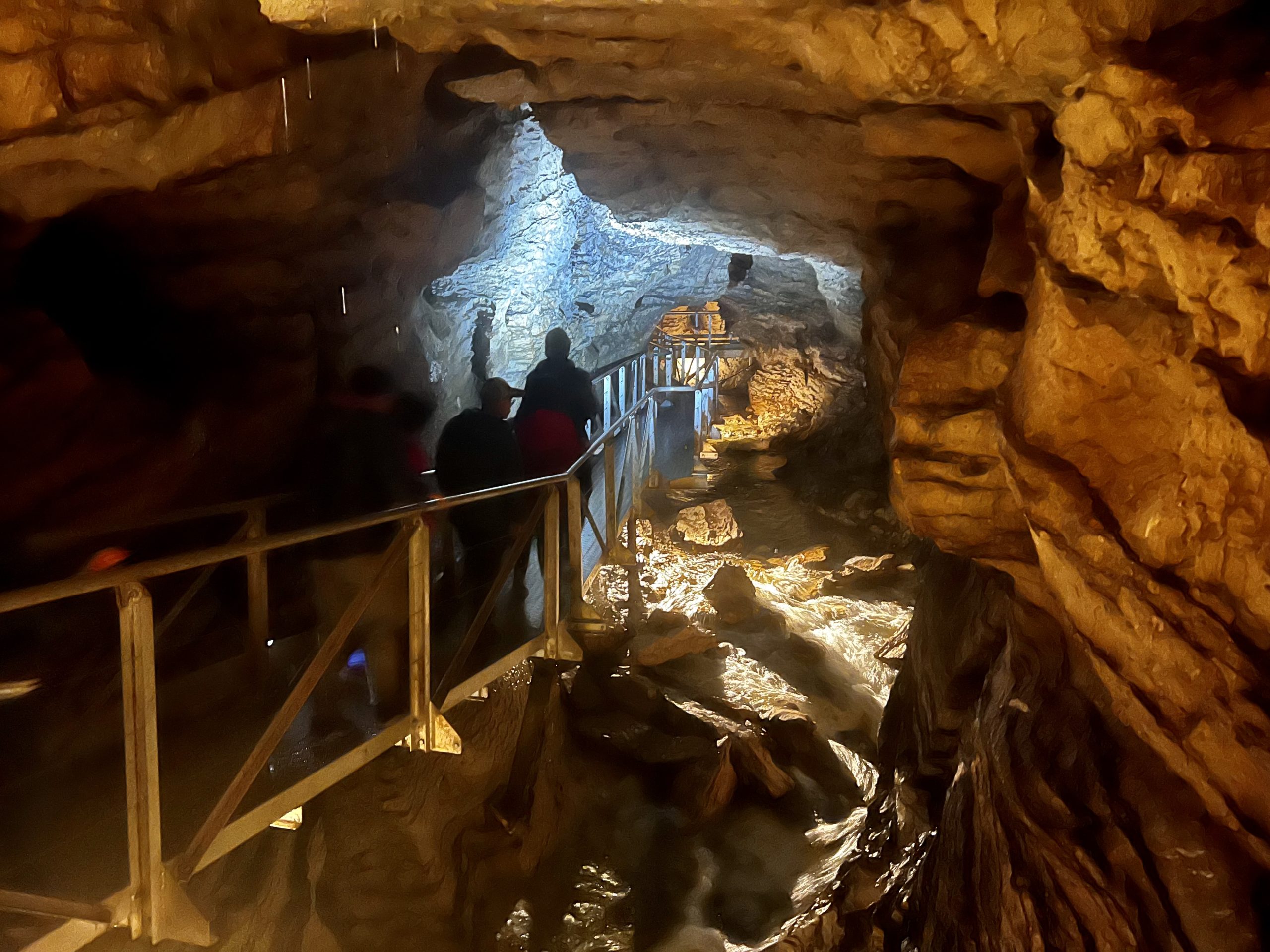
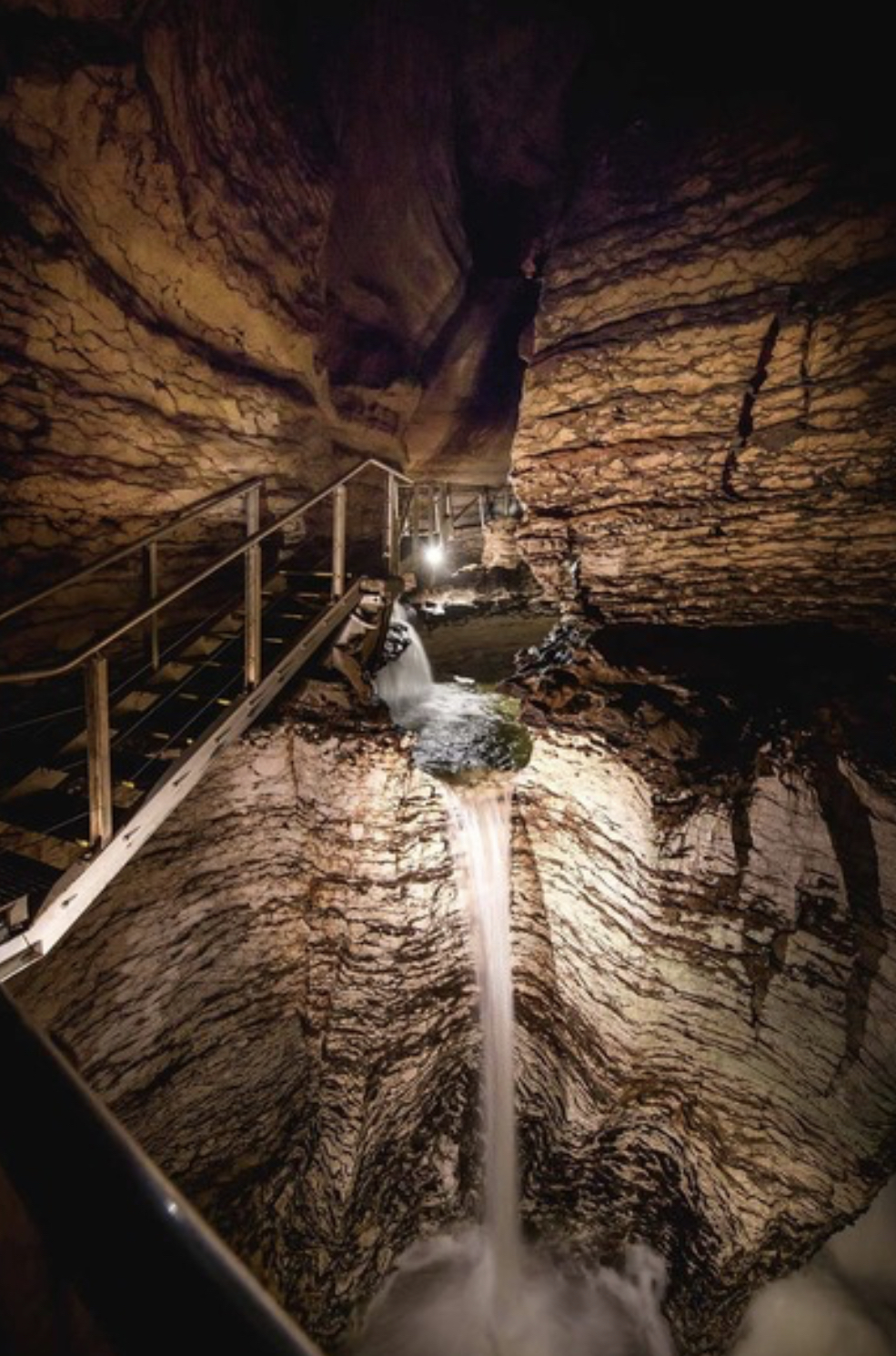
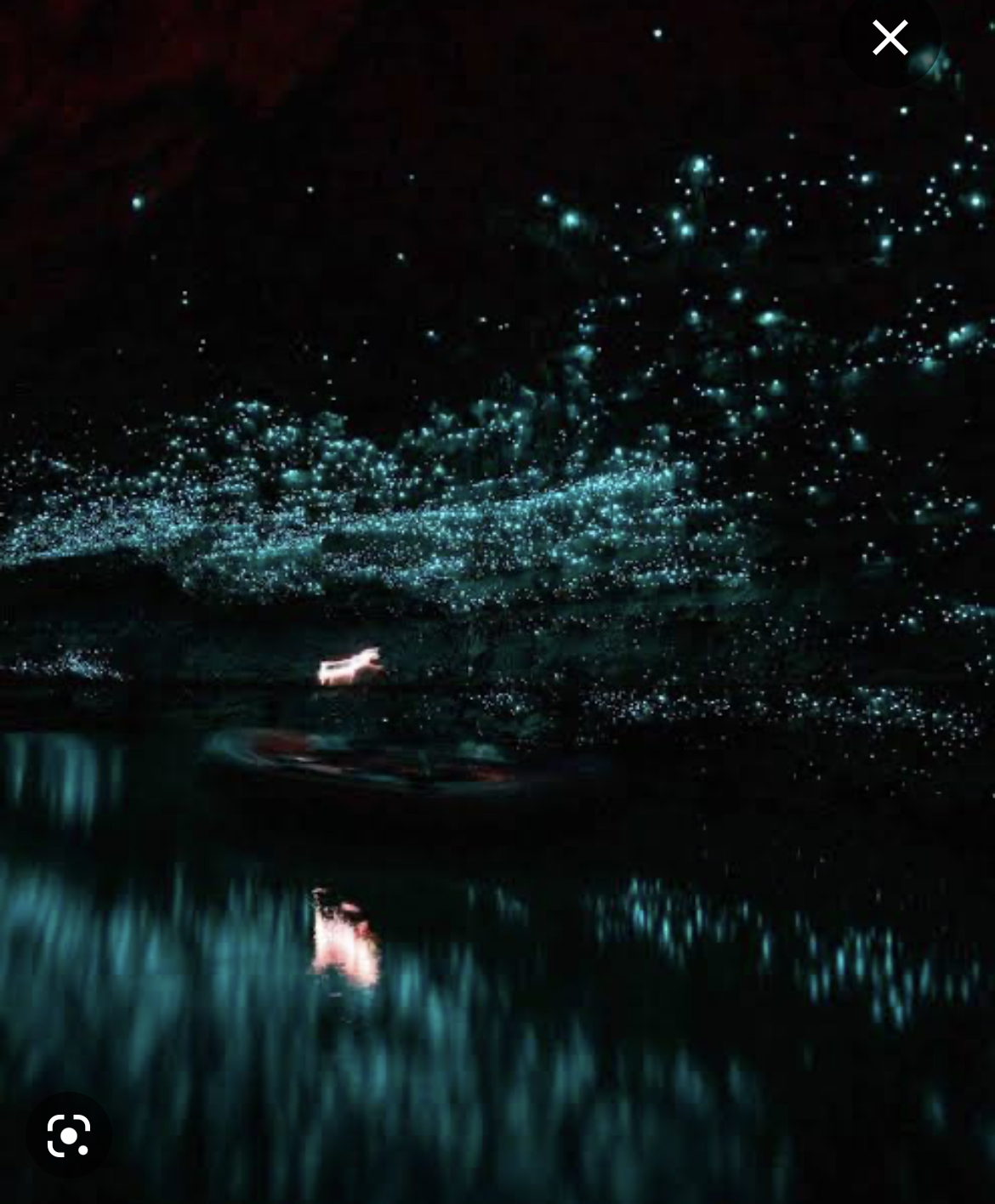
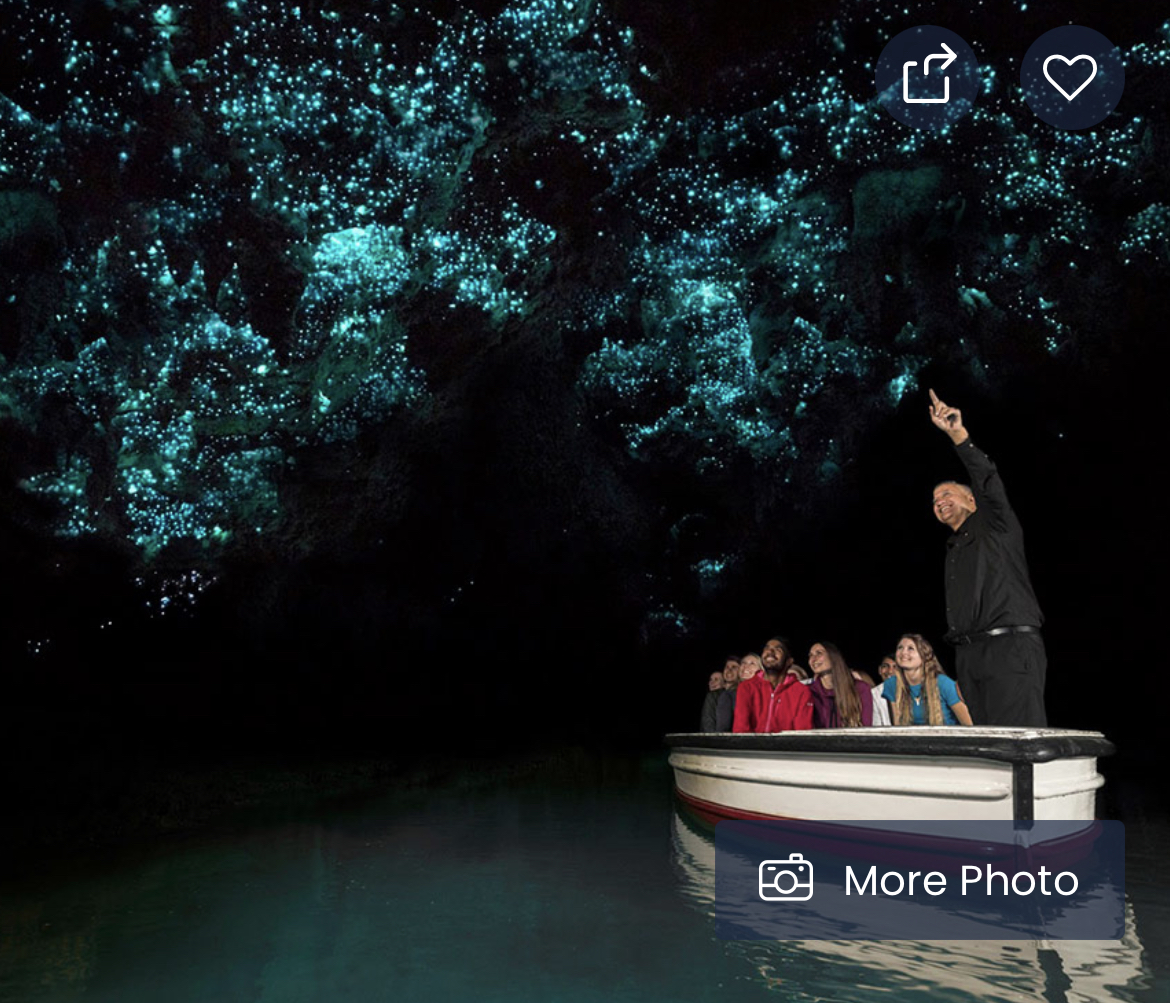
Food
The town of Te Anau is not set up to accommodate the number of tourists arriving this year. Restaurants are full, requiring reservations many days in advance. All appear to have signs saying they are hiring, they are short on staff, and that you should expect a wait for food. Tourists fill tables by 5:30. The restaurant staff may say the food will arrive forty minutes, but it may come out in fifteen minutes or in seventy minutes. Too bad. The two grocery stores close early, so be prepared. Bonnie sometimes survives on trail mix and almond butter while Robert stays up late waiting for food. There is one redeeming place—The Sandfly—a hip coffee shop that caters to all ages. It has great breakfasts and coffee. Robert had a few huge sausage rolls there along with a long black, medium cup to go. Another place good is Miles Better Pies. All kinds of traditional meat pies. Go in the morning because they sell out around 2:00 pm. Actually many tourists come to Te Anau in camper vans or with tents and make their own meals.
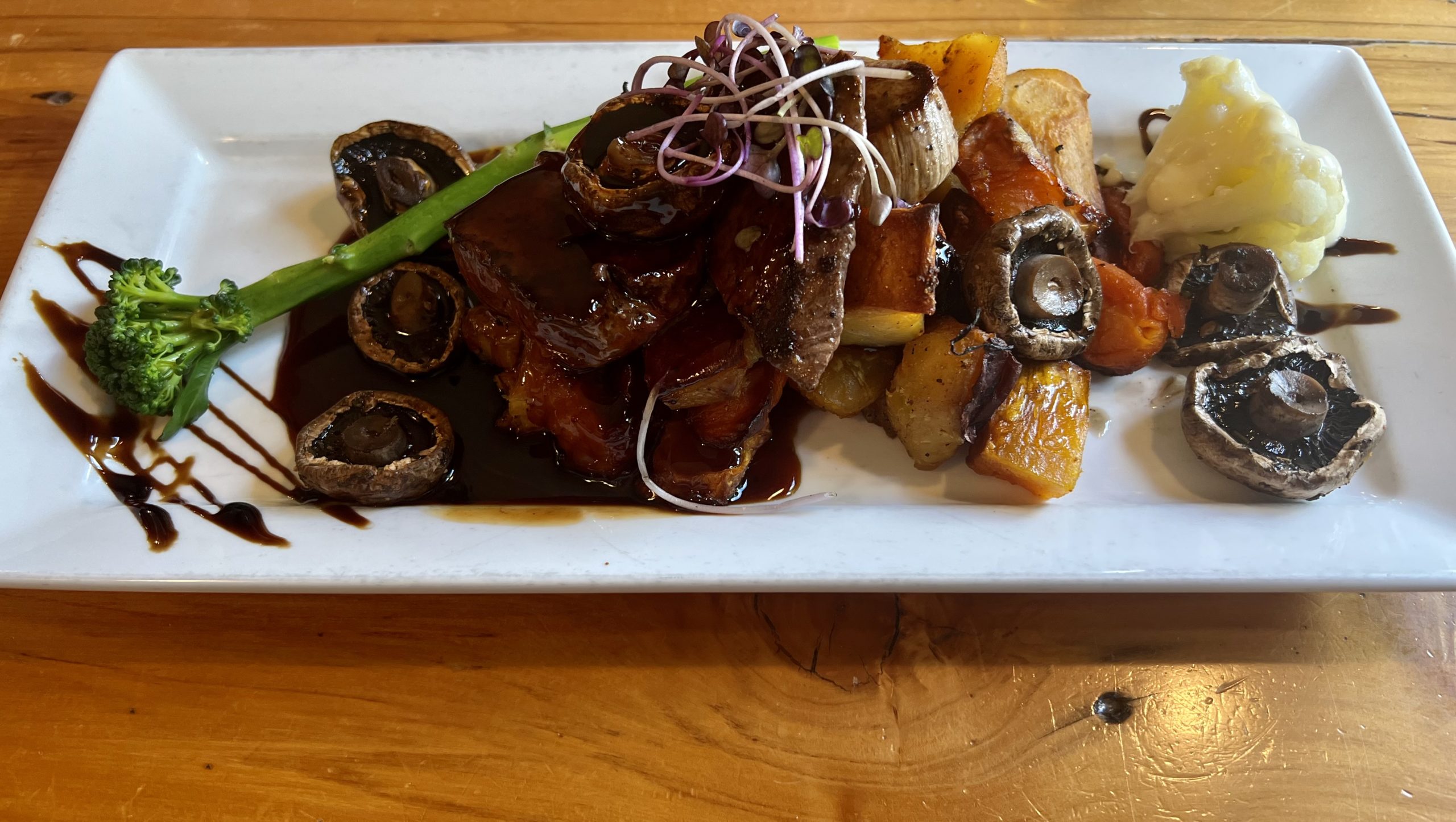
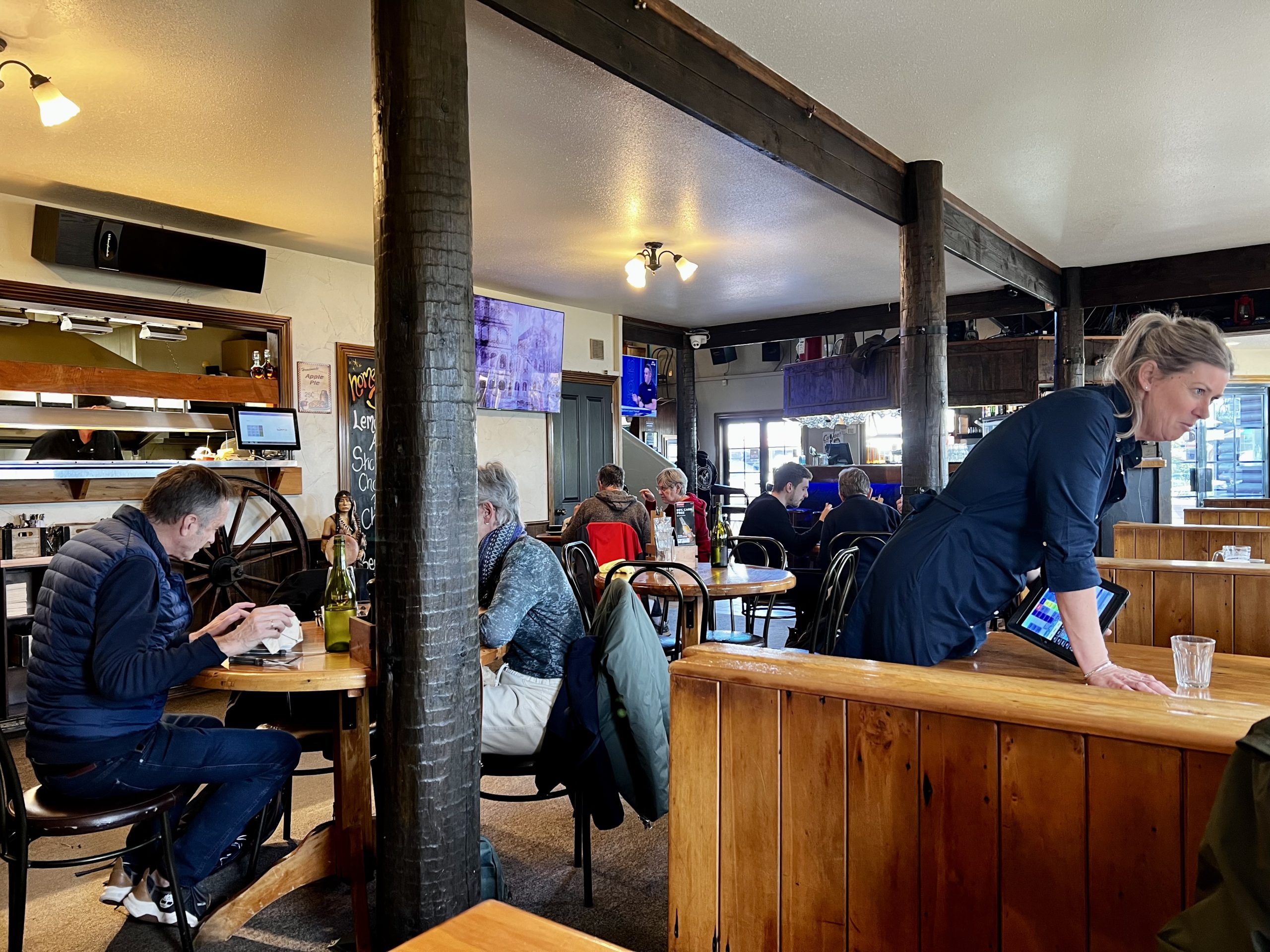
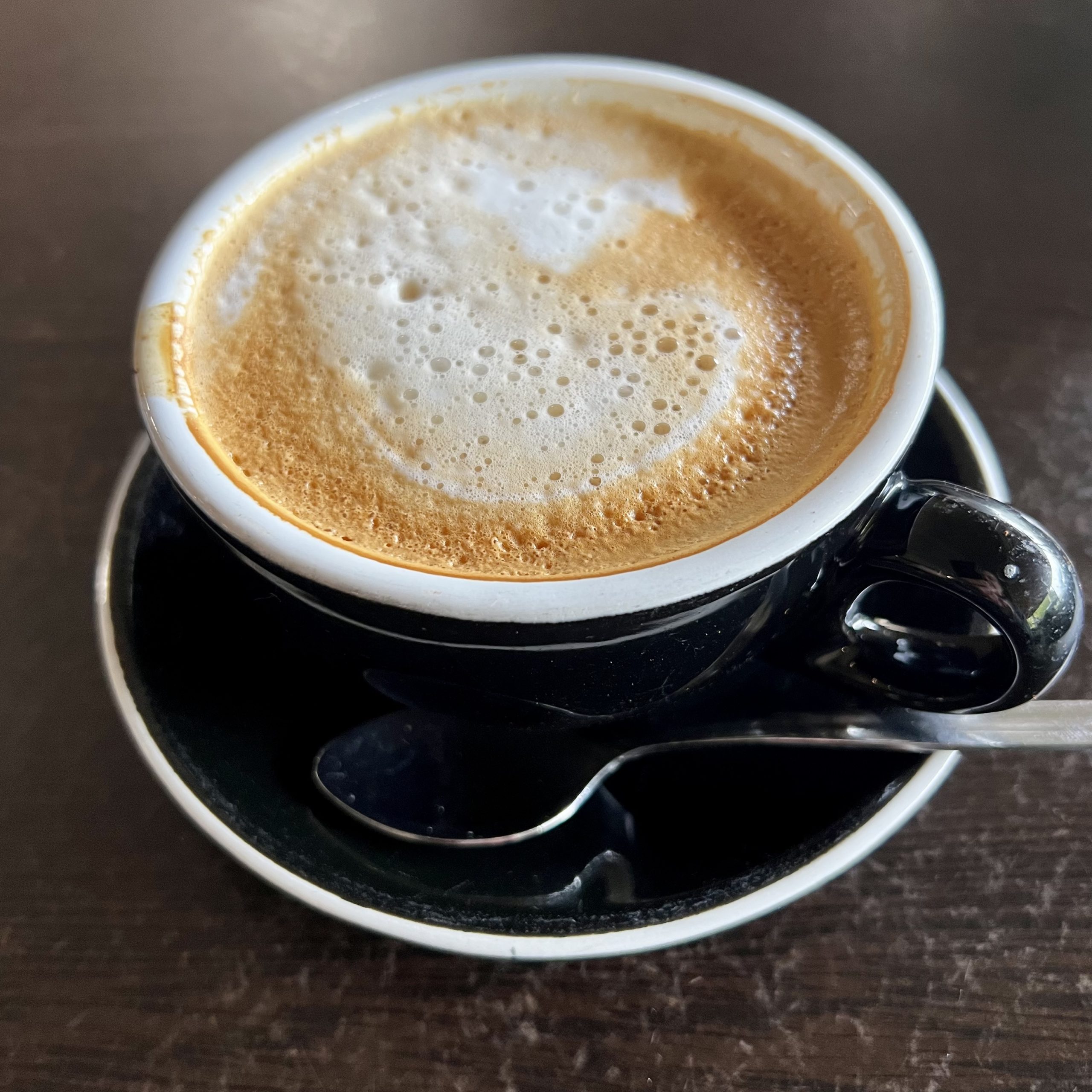

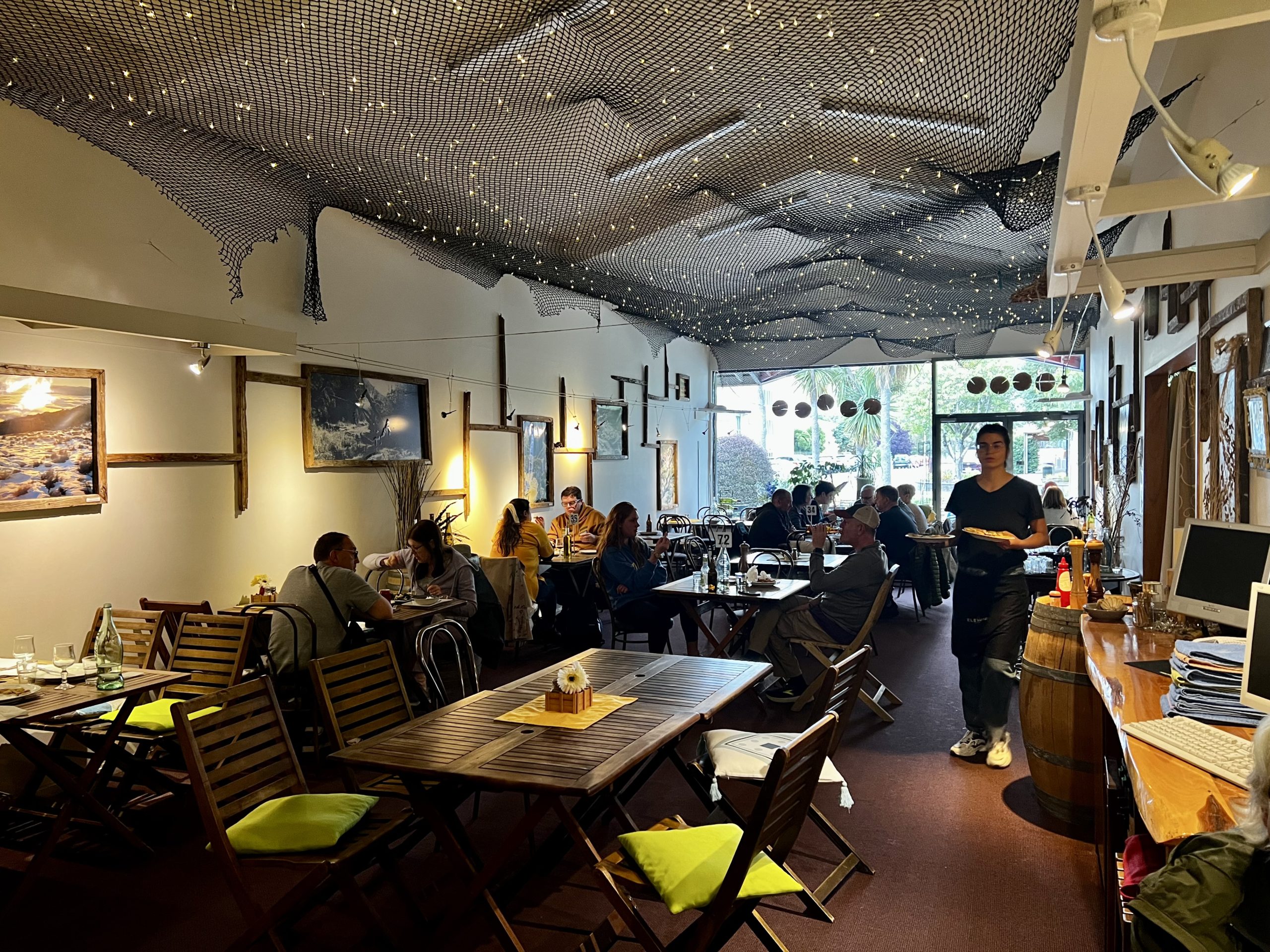

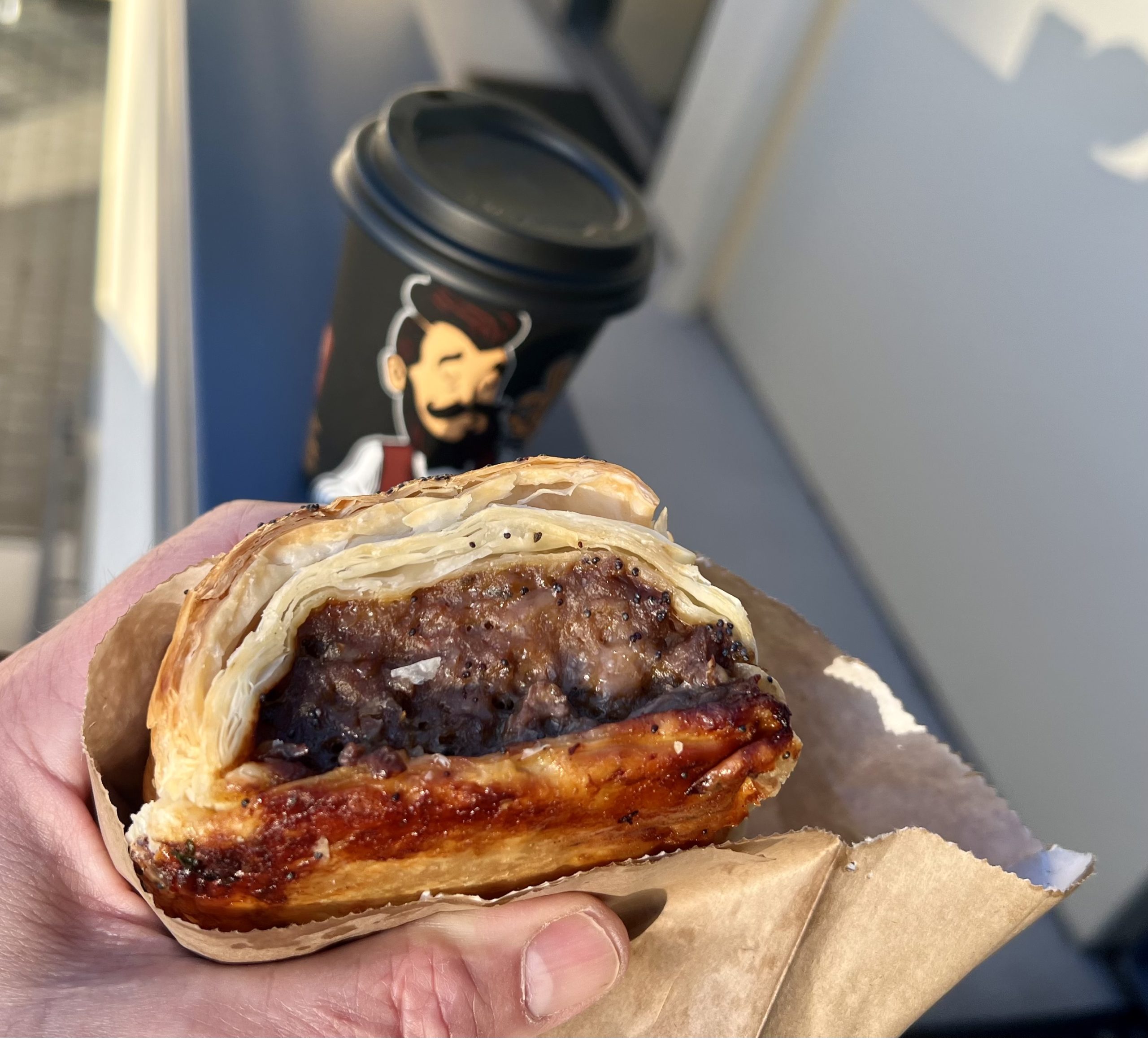
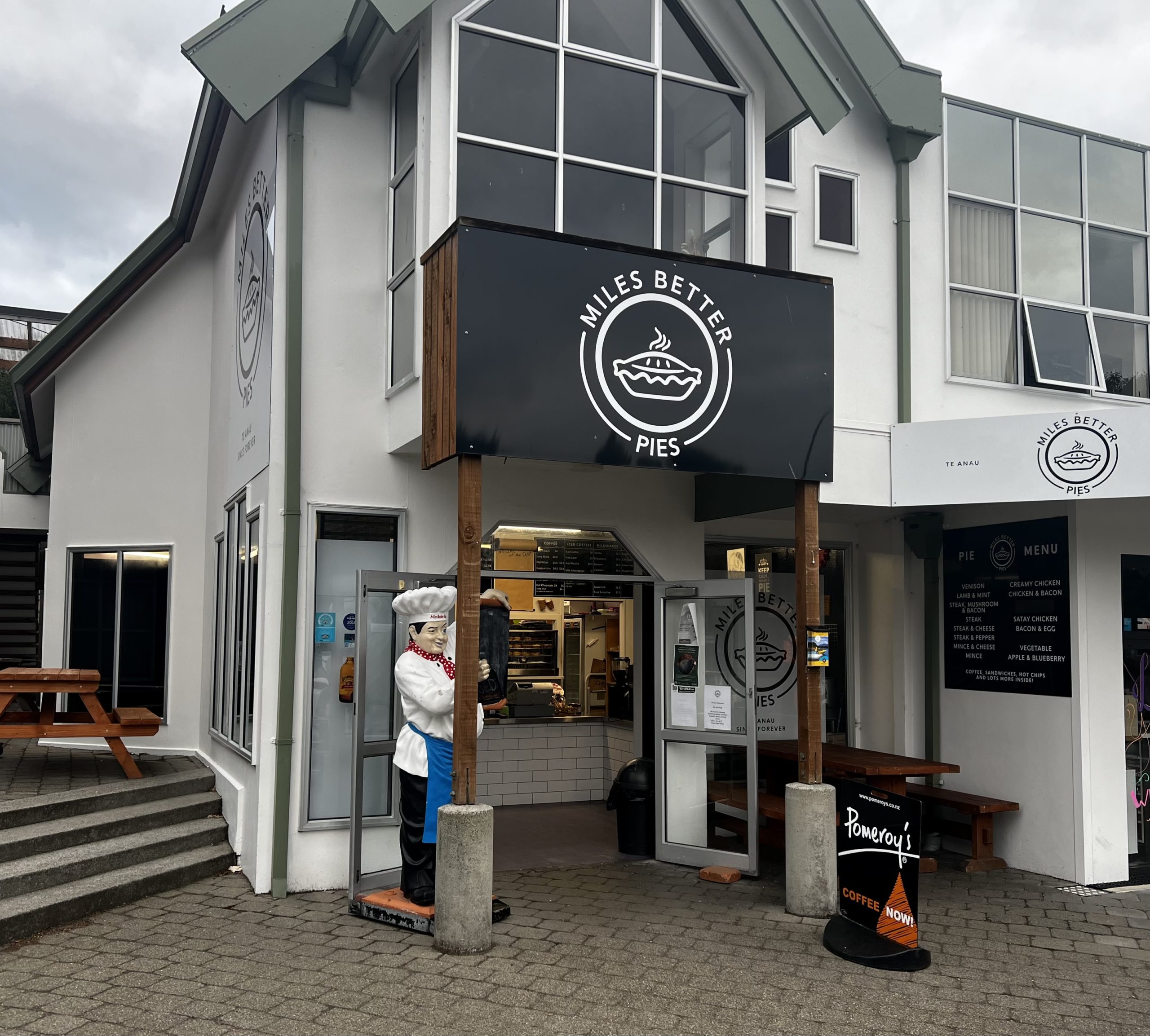
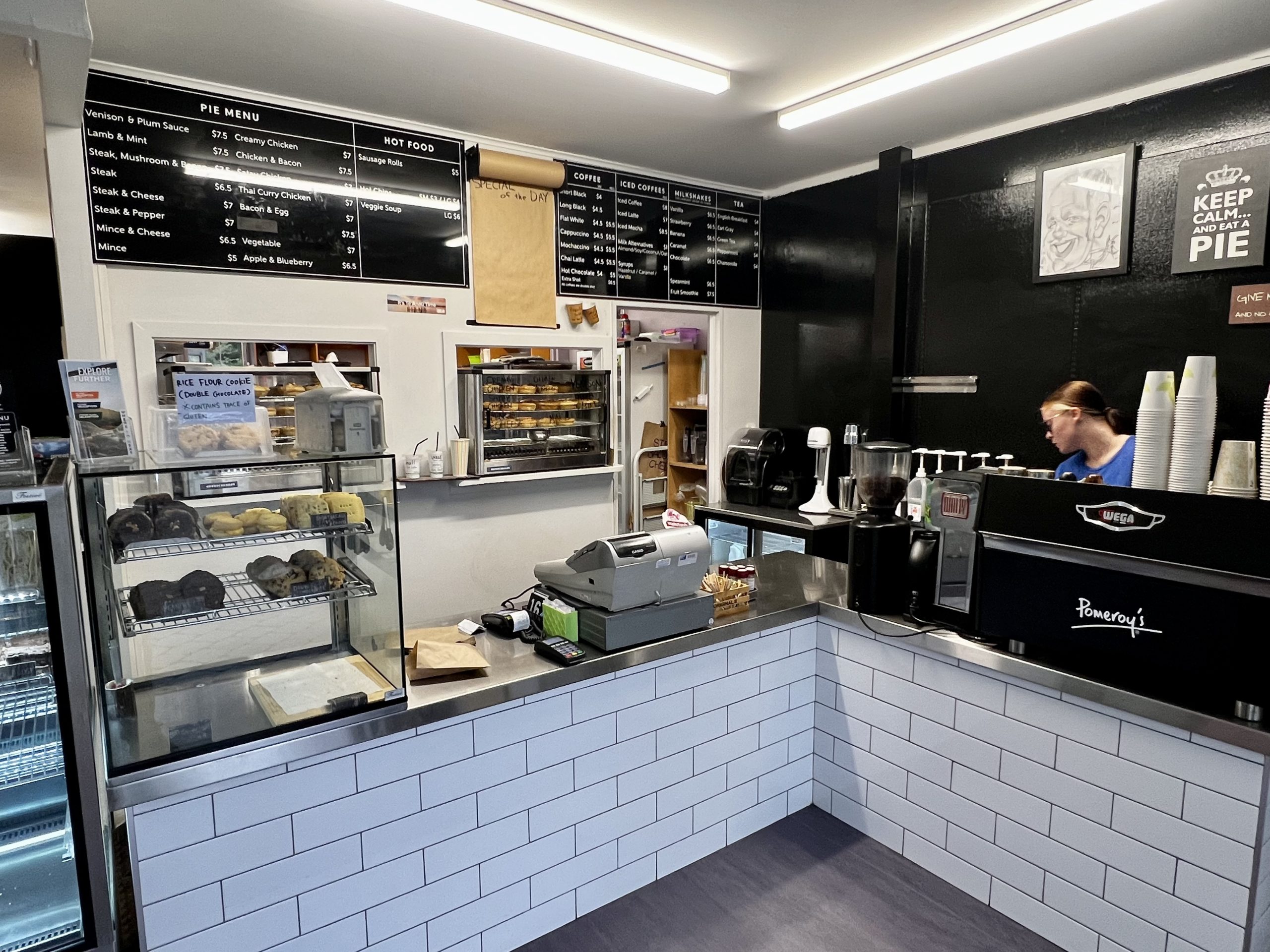
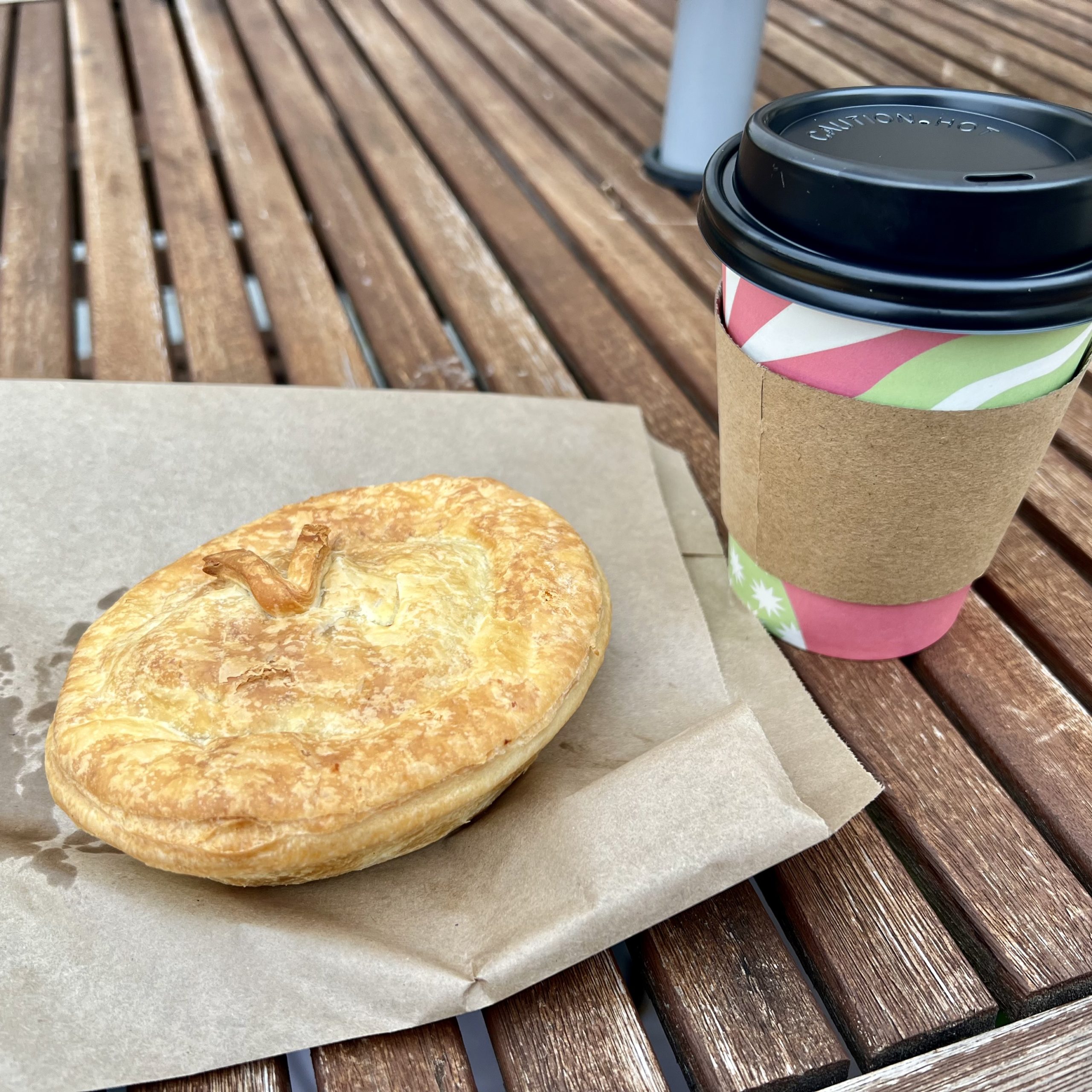
Next stop—Invercargill!

Off to a great start! Love it. Thanks.
Thanks!
Both JoAnne and I enjoyed reading this NZ blog. Looking forward to the next installment. Carl
Thanks! More to come.
Dear Robert and Bonnie,
What a great adventure you are on and thanks for sharing it with us armchair travelers! Your photographs are stunning (this is coming from a photographer). Makes me want to travel again….some day, I hope.
Joe Lieber
Sonoma
JOE: Thanks! Glad you are enjoying our blog. Time to travel is now. Don’t wait too long!